
- Travel Guide

What Time Is It In Antarctica? Time Zones & Time Travel At The South Pole
Time in antarctica, antarctica time zones in practice, what time is it in antarctica when you’re on an expedition cruise, south pole time travel.
What time is it in Antarctica? Does Antarctica have time zones in the first place? And—just to get 100% more “out there”—was a parallel universe where time runs in reverse discovered near the South Pole?
All good questions. Let’s tackle the temporal at the bottom of the world!
The 24 standard time zones that divvy up the planet are arrayed longitudinally, but do not adhere to those meridians precisely by any means, having been set for political and practical purposes.
These time zones are defined by their offset, positive or negative, from Coordinated Universal Time (abbreviated as UTC), the time standard that encompasses the prime meridian through Greenwich. That offset’s generally an hourly one: UTC+4 meaning local time’s four hours ahead of Coordinated Universal Time, for example, and UTC-4 meaning it’s four hours behind. Some countries, though, such as Australia and India, do define certain time zones by smaller sub-hourly increments.
While their latitudinal boundaries are irregular, the north-south arrangement of time zones means that, like the lines of longitude, they converge toward the poles. Technically speaking, that means that Antarctica falls within all time zones.
But that’s not how time zones are observed in the White Continent, and that’s not altogether surprising. You won’t find clocks, let alone people, in the vast majority of Antarctica, so the usefulness of time zones is somewhat limited.
All the more so because most of this polar realm falls south of the Antarctic Circle, with seasons swinging between roughly 24 hours of daylight in the austral summer and 24 hours of darkness in the austral winter. That sort of extreme variation in daylength also makes for a timekeeping environment different from most of the rest of the world, only elsewhere observed up around the North Pole.
Finally, by international agreement, no part of Antarctica is owned or controlled by an individual nation or other sovereign power—yet another reason why the application of a time zone (or time zones) here isn’t clear-cut.
Rather than 24 narrowing time-zone wedges all coming together exactly at the point of the Geographic South Pole, Antarctica encompasses an uneven patchwork of different time zones determined by various aspects of its unusual human geography.
The Antarctic Treaty acknowledges eight territorial claims in Antarctica made by seven countries prior to the adoption of the Treaty, which together cover more than 80 percent of the continent. (These claims aren’t internationally recognized and don’t confer any ownership or special rights to the claimants; you can learn more about them here .) So some of the time zones mapped in Antarctica correspond to time zones used in claimant countries: for example, Norway, the United Kingdom, Chile, and Argentina.
But the places in Antarctica where time zones actually have relevance are mainly restricted to research stations and associated seasonal camps, and numerous such outposts falling within particular territorial claims are owned and operated by nations other than the pertinent claimant countries.
For convenience, research stations tend to ascribe to the time zones of the country that operates them or of the country through which they are supplied. (Daylight Saving Time observance also varies accordingly.)
The U.K.’s Halley VI Research Station , for example, which is set on the Brunt Ice Shelf in the Weddell Sea, follows Britain’s Greenwich Mean Time/UTC+00:00 and British Summer Time/UTC+01:00. Two permanent U.S. Antarctic stations, McMurdo Station and Amundsen-Scott South Pole Station , observe New Zealand time, because their nearest supply base is in that country; the U.S.-owned Palmer Station follows the time used in Chile for the same reason.
For reference, here are the time zones followed in a few other notable research stations in Antarctica:
- Mawson Station (Australia): UTC+5
- Orcadas Base (Argentina): UTC-3
- Concordia Station (France/Italy): UTC+8
- Vostok Station (Russia): UTC+5
- SANAE IV (South Africa): UTC+2
Cruise operators bringing tourists to Antarctica typically operate on the time zone of their departure port. So on the most-used Antarctica travel itinerary—ship-based cruises embarking from South America and visiting the Antarctic Peninsula—the time zone of Ushuaia, Argentina (Argentina Standard Time/UTC-3) is the point of reference.
In terms of other common, sub-Antarctic destinations on such cruises, the Falkland Islands follow the official Falkland Islands Standard Time (UTC-3) year-round, while South Georgia Time (UST-2) prevails, year-round as well, in South Georgia and the Sandwich Islands.
Time zones aren’t perhaps the most riveting topic (important as they are to the logistics of daily life). Time travel —well, that’s another matter. And a few years back, some wild speculation got swirling due to some mysterious readings collected during the ANtarctic Impulsive Transient Antenna (ANITA) experiment.
The ANITA project aimed to detect ultra-high-energy neutrinos (one of the elemental particles) associated with so-called cosmic rays and Cosmic Microwave Background radiation produced by the Big Bang. During the experiment, in 2016 and 2018, a radio-antenna array on a high-altitude helium balloon registered pulses projecting upward from the Antarctic Ice Sheet, not downward from space.
Among the more left-field interpretations of this unexplained observation was that it stemmed from up-going neutrinos traveling in the opposite direction of “normal” neutrinos and therefore sourced from a parallel universe, created concurrently with ours by the Big Bang, where ( as the New York Post breathlessly put in May 2020 ) “time runs backward.”
The exact cause of the pulses detected by ANITA hasn’t been determined, but an Annals of Glaciology paper published in 2020 suggested far more plausible explanations, namely that they were caused by reflections of incoming cosmic rays off firn (highly compacted, very dense snow partway to turning into ice), subglacial lakes, or other subsurface features buried under the upper ice of the Antarctic Ice Sheet.
So, time may not unspool backward around the South Pole. There’s no question, however, that the Midnight Sun of the austral summer, let alone the around-the-clock darkness of the depths of the southern winter, lends a kind of “timeless” vibe to the White Continent!
You May Also Be Interested In
The lakes & rivers of antarctica: lake vostok, onyx river & more, antarctica iceberg guide: an a23a – z, don juan pond, antarctica: the saltiest body of water on earth, sastrugi: the windswept snow dunes of antarctica, what is antarctica, how cold is antarctica & what is the coldest place on earth, do people live in antarctica population, cities & houses, how big is antarctica size comparison & seasonal changes, top 10 antarctica phenomena that must be seen to be believed.
Our travel guides are for informational purposes only. While we aim to provide accurate and up-to-date information, Antarctica Cruises makes no representations as to the accuracy or completeness of any information in our guides or found by following any link on this site.
Antarctica Cruises cannot and will not accept responsibility for any omissions or inaccuracies, or for any consequences arising therefrom, including any losses, injuries, or damages resulting from the display or use of this information.
Ready for the adventure of a lifetime?
Get in touch with us via phone or form today and you’ll be assigned a dedicated Antarctica specialist who’ll be with you every step of the way to help you choose, book and plan the right Antarctica cruise for you. Here’s how it works:
Listen & Match
We’ll carefully listen to your aspirations and curate an impartial shortlist of personalized polar cruise recommendations—and pre- and post-cruise extensions—to match your desired experience.
Reserve & Relax
Next we’ll place a free, no obligation, 24-hour cabin hold on your preferred cruise option whilst we discuss the final details. Book and relax safe in the knowledge you’ll be paying the lowest price guaranteed.
Prepare & Travel
Then we’ll provide you with our expert packing advice, insider travel tips, and more to ensure you are fully prepared for—and maximize your enjoyment of—your once-in-a-lifetime Antarctica expedition.
- With Partner/Friend
- With Family
- As Part Of A Group
- Emperor Penguin
- Photography
- Exploration Heritage
- Antarctic Peninsula
- Antarctic Circle
- Falklands/S. Georgia
- Weddell Sea
- Ross Sea/E. Antarctica

16 December 2018 TIME TRAVELING at the Geographic South Pole!!
- Virtual Base Camp
- Antarctic Automatic Weather Stations 2018
Time Travel?
Click the media tab to see a short youtube video of today's visit to the ceremonial and geographic south poles.
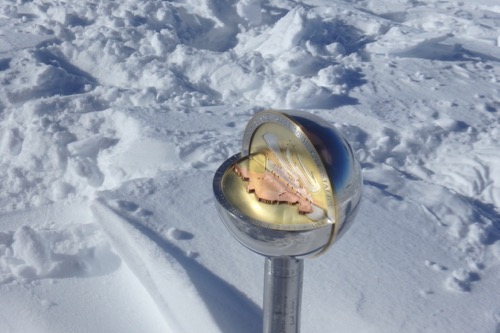
The South Pole is an interesting and confusing place.
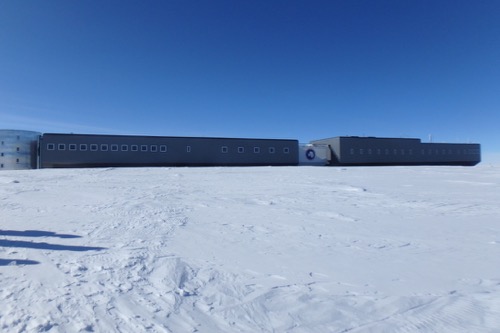
Every Direction is North!
The Station is located at 90 degrees south latitude and sits at an elevation of approximately 2,836 meters (9,306 feet), most of which is ice. When you stand at the exact 'Geographic South Pole' (or sometimes called the Terrestrial Pertaining to land. South Pole), every direction is north. Every direction is 'up' from the bottom of the Earth and therefore, north! To compensate for that, a Grid navigation system is used where a four quadrant grid is overlaid onto the map of Antarctica with the origin set directly on top of the Geographic South Pole. Using that system, we can go “Grid West” or “Grid East”. For locations in an easterly longitude (Eastern Hemisphere), "grid direction" equals true direction minus the longitude of the place you want to go. For locations in a westerly longitude (Western Hemisphere), "grid direction" equals true direction plus the longitude of the place you want to go.
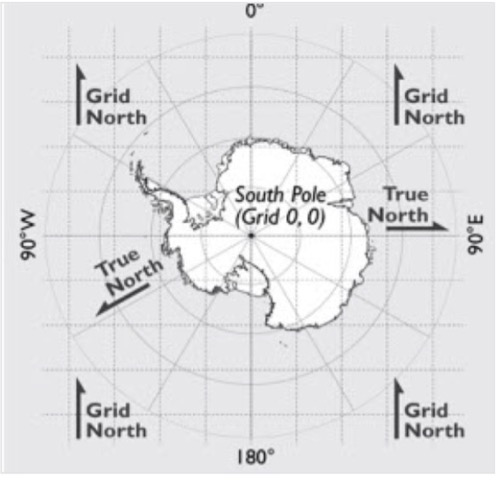
Ceremonial Pole
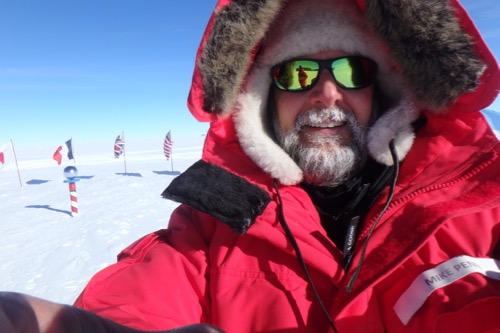

View Comments
Deals of the Week European Long Weekends Up to 50% OFF
South Pole / Antarctica Tours
Our trips to the South Pole are unforgettable adventures just waiting to happen. Begin your journey in Argentina and make your way through Antarctic icy waters, discovering the region’s wildlife and sights along the way. The scenery in these parts is unlike anything you’ve seen before.
113 Antarctica / South Pole tours with 84 reviews

- Ocean Cruise
Antarctica Classic
What an experience. G Adventure has mastered the art of making your experience really stand out and they have delivered. G Expedition is an old small ship but really well maintained, upgraded and taken care of. The Crew is absolutely amazing in catering to your every need. Plenty of food to go around every day, drinks were reasonably priced for a ship. There's an on-board sauna which was of great use after a day of excursion in frigid Antarctic weather. There's briefing every day on weather condition, plan, wild life and what to expect. Everyone's extremely punctual and runs all the events on the dot, yet makes it somewhat relaxing somehow. There's an on-board doctor if you need any help. Internet is bit pricy ($40 USD for 2GB) but You are in the middle of Antarctic, so. Camping in a must do experience. So is Kayaking but that happens everyday, so might get a bit tiring. Onboard presentation about the history, wildlife, seals and whales and many other things to keep you busy and engaged. There's on onboard library, games, a polar bar, live entertainment so you'll never get bored. Overall, it's one of the best trip you'll take in life, guaranteed.
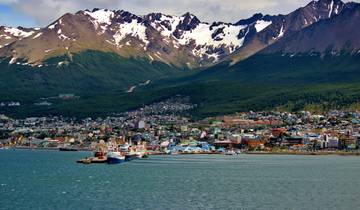
Quest for the Antarctic Circle
Absolutely amazing. Crew were incredible. Zodiac outings excellent. So much wildlife to see. Worth the extra days and money to cross into the polar circle. Amazing adventure. No. 1 bucket list trip ticked off. G Adventures were excellent and recommend without any hesitation.
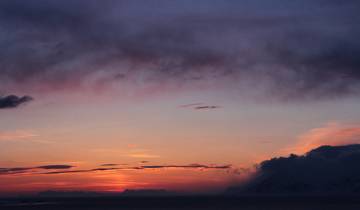
Spitsbergen Explorer: Best of High Arctic Norway (2025), Operated by Quark
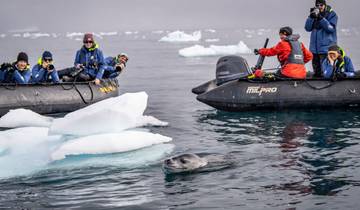
- Christmas & New Year
Best of Antarctica: Wildlife Explorer (Ocean Endeavour)
Great trip. One of best ones ever.
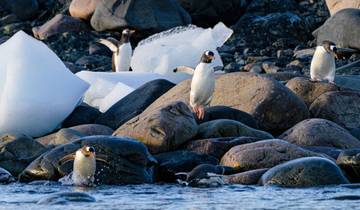
Journey to the Antarctic Circle (Ocean Endeavour)
I absolutely loved this trip; it was perfect for me and my daughter. What you should know about us is that we are up for adventure and don't expect to be treated like royalty. This trip was an "excursion", not a "cruise", so do not sign up if you are expecting multiple restaurants, live entertainment, or other such luxuries. But, if you want to have the experience of a lifetime, explore the last great wilderness on the planet, and learn more about how you can help conserve that wilderness, this is a fantastic trip. The itinerary changes day by day depending on the weather, but you just might find an unexplored cove to explore/chart for future trips (we did!) or be the southernmost commercial ship on the planet (we were!). You might have a whale swim under your boat and then pop up its head to say hello, or a penguin momma show off her egg. And you might have 20 foot waves in the Drake Passage. Go in with the willingness to adapt and you will love it!

Antarctic Express: Fly the Drake, Operated by Quark
I cannot say enough wonderful things about Quark Expeditions. My husband and I did the 'Fly the Drake Passage' Antarctica cruise in January 2020, just before the pandemic. We were blown away by the incredible staff and crew. This trip surpassed ALL of our expecations. If you are looking for a high quality experience with like-minded individuals who love nature, wildlife viewing and adventure, Quark is definitely the company to sail with.

Classic Antarctica - 10 days
We can’t say enough good things about this tour, the ship and the crew. Our time on board was fantastic. Our captain had a great deal of experience and we felt completely safe at all times on the ship. The expedition team were knowledgable and friendly, and all the crew from the deck hands to the bridge went out of their way to be helpful and kind. The food was wonderful, the scenery unbelievable and the small passenger group made us all into friends by the end of the journey. If you have ever wanted to visit the White Continent, book your trip on the MV Ushuaia and be prepared to have the experience of a lifetime!!

THE ANTARCTIC ADRENALINE ADVENTURE

Antarctica, South Georgia and Falkland Islands- Ocean Victory & Ocean Albatros
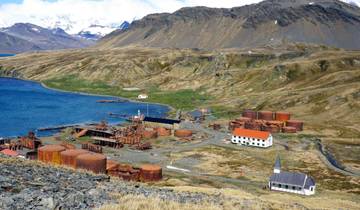
Animal Paradises Falkland and South Georgia

- Wildlife & Nature Photography
The Great Journey

Life Returns - Springtime Expedition to Antarctica (MS Maud, 2024)
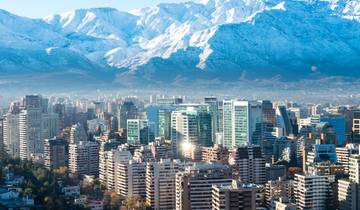
Eternal Beauty of Chilean Patagonia and Antarctica (2025)

Antarctica, South Georgia & Falkland Islands Awakening

King Penguins of the Falklands and South Georgia - Expedition
- 10% deposit on some dates Some departure dates offer you the chance to book this tour with a lower deposit.
Antarctica / South Pole Tour Reviews
It is truly a once in a lifetime experience.
excellent in each and every aspect
Antarctica / South Pole Tours starting in:
- Ushuaia (35)
- Buenos Aires (16)
- Santiago (5)
- Group (109)
- Fully Guided (101)
- Ocean Cruise (90)
- Family (72)
- Explorer (65)
- Active (15)
- Partially Guided (9)
- Small Group (19)
- 10 Day Tours (5)
- 2 Week Tours (27)
- 3 Week Tours (24)
- 4 Week Tours (12)
- Spring 2024 (1)
- Summer 2024 (2)
- Fall / Autumn 2024 (19)
- Winter 2024 / 2025 (28)
- Spring 2025 (15)
- Summer 2025 (1)
- Fall / Autumn 2025 (12)
- Winter 2025 / 2026 (21)
- April 2024 (1)
- May 2024 (2)
- June 2024 (2)
- July 2024 (2)
- August 2024 (2)
- October 2024 (7)
- November 2024 (19)
- December 2024 (18)
- January 2025 (18)
- February 2025 (17)
- March 2025 (14)
- May 2025 (1)
- June 2025 (1)
- July 2025 (1)
- August 2025 (1)
- October 2025 (6)
- November 2025 (13)
- December 2025 (13)
- January 2026 (15)
- February 2026 (13)
- Best Time to Visit Antarctica
- Antarctic Wildlife: Animals You Can See in Antarctica
- Kayaking in Antarctica: What to Know & What to Expect
- Camping in Antarctica: Everything You Need to Know
- Hiking in Antarctica: What to Know & How to Prepare
- Zodiac Cruising & Shore Landings in Polar Regions
- How to Get to Antarctica
- How to get to Antarctica from Argentina
- Flights to Antarctica
Travel Styles
- Luxury (27)
- Singles and Solo (44)
- For Couples (43)
- Seniors (23)
International Versions
- Deutsch: Südpol Rundreisen
- Français: Circuits en Antarctique / Pôle Sud
- Español: Circuitos por Antártida / Polo Sur
- Nederlands: Antartica / Zuidpool Rondreizen
The South Pole is the southernmost point on Earth. It is located on Antarctica, one of the planet's seven continents.
Earth Science, Geology, Geography, Physical Geography, Social Studies, World History
Loading ...
The South Pole is the southernmost point on Earth. It is the precise point of the southern intersection of Earth's axis and Earth's surface. From the South Pole, all directions are north. Its latitude is 90 degrees south, and all lines of longitude meet there (as well as at the North Pole ). The South Pole is located on Antarctica , one of Earth's seven continents . Although land at the South Pole is only about a hundred meters above sea level , the ice sheet above it is roughly 2,700-meters (9,000-feet) thick. This elevation makes the South Pole much colder than the North Pole, which sits in the middle of the Arctic Ocean. In fact, the warmest temperature ever recorded at the South Pole was a freezing -12.3 degrees Celsius (9.9 degrees Fahrenheit). The South Pole is close to the coldest place on Earth. The coldest temperature recorded at the South Pole, -82.8 degrees Celsius (-117.0 degrees Fahrenheit), is still warmer than the coldest temperature ever recorded, -89.2 degrees Celsius (-128.6 degrees Fahrenheit). That temperature was recorded at the Russian Vostok Research Station , about 1,300 kilometers (808 miles) away. Because Earth rotates on a tilted axis as it revolves around the sun, sunlight is experienced in extremes at the poles. In fact, the South Pole experiences only one sunrise (at the September equinox ) and one sunset (at the March equinox) every year. From the South Pole, the sun is always above the horizon in the summer and below the horizon in the winter. This means the region experiences up to 24 hours of sunlight in the summer and 24 hours of darkness in the winter. Due to plate tectonics , the exact location of the South Pole is constantly moving. Plate tectonics is the process of large slabs of Earth's crust moving slowly around the planet, bumping into and pulling apart from one another. Over billions of years, Earth's continents have shifted together and drifted apart. Millions of years ago, land that today is the east coast of South America was at the South Pole. Today, the ice sheet above the South Pole drifts about 10 meters (33 feet) every year. Amundsen–Scott South Pole Station Compared to the North Pole, the South Pole is relatively easy to travel to and study. The North Pole is in the middle of the Arctic Ocean, while the South Pole is on a stable piece of land. The United States has had scientists working at Amundsen–Scott South Pole Station since 1956. Between 50 and 200 scientists and support staff live at the this research station at any given time. The station itself does not sit on the ground or ice sheet. It is able to adjust its elevation, to prevent it from being buried in snow, which accumulates at a rate of about 20 centimeters (eight inches) every year, and does not melt. In the winter, the Amundsen–Scott South Pole Station is completely self-sufficient . The dark sky, freezing temperatures, and gale -force winds prevent most supplies from being flown or trekked in. All food, medical supplies, and other material must be secured before the long Antarctic winter. The station's energy is provided by three enormous generators that run on jet fuel. In winter, stores of food are supplemented by the Amundsen–Scott South Pole Station's greenhouse. Vegetables in the greenhouse are grown with hydroponics , in a nutrient solution instead of soil. Some of the earliest discoveries made at South Pole research stations helped support the theory of continental drift , the idea that continents drift apart and shift together. Rock samples collected near the South Pole and throughout Antarctica match samples dated to the same time period collected at tropical latitudes. Geologists conclude that the samples formed at the same time and the same place, and were torn apart over millions of years, as the planet split into different continents. Today, the Amundsen–Scott South Pole Station is host to a wide variety of research. The relatively undisturbed ice sheet maintains a pristine record of snowfalls, air quality, and weather patterns. Ice cores provide data for glaciologists, climatologists, and meteorologists , as well as scientists tracking patterns in climate change . The South Pole has low temperatures and humidity and high elevation, making it an outstanding place to study astronomy and astrophysics . The South Pole Telescope studies low-frequency radiation , such as microwaves and radio waves . The South Pole Telescope is one of the instruments designed measure the cosmic microwave background (CMB) –faint, diffuse radiation left over from the Big Bang . Astrophysicists also search for tiny particles called neutrinos at the South Pole. Neutrinos interact very, very weakly with all other matter. Neutrino detectors therefore must be very large to detect a measurable number of the particles. The Amundsen–Scott South Pole Station's IceCube Neutrino Detector has more than 80 "strings" of sensors reaching as deep as 2,450 meters (8,038 feet) beneath the ice. It is the largest neutrino detector in the world. Ecosystems at the South Pole Although the Antarctic coast is teeming with marine life, few biologists conduct research at the Amundsen–Scott South Pole Station. The habitat is far too harsh for most organisms to survive. In fact, the South Pole sits in the middle of the largest, coldest, driest, and windiest desert on Earth. More temperate parts of this desert (called either East Antarctica or Maudlandia) support native flora such as moss and lichen, and organisms such as mites and midges. The South Pole itself has no native plant or animal life at all. Sometimes, however, seabirds such as skuas can be spotted if they are blown off-course. Exploration The early 20th century's "Race to the Pole" stands as a symbol of the harrowing nature of polar exploration. European and American explorers had attempted to reach the South Pole since British Capt. Robert Falcon Scott 's expedition of 1904. Scott, along with fellow Antarctic explorers Ernest Shackleton and Edward Wilson, came within 660 kilometers (410 miles) of the pole, but turned back due to weather and inadequate supplies. Shackleton and Scott were determined to reach the pole. Scott worked with scientists, intent on using the best techniques to gather data and collect samples. Shackleton also conducted scientific surveys, although his expeditions were more narrowly focused on reaching the South Pole. He came within 160 kilometers (100 miles) of the pole in 1907, but again had to turn back due to weather. Scott gathered public support and public funding for his 1910 Terra Nova expedition. He secured provisions and scientific equipment. In addition to the sailors and scientists on his team, the Terra Nova expedition also included tourists —guests who helped finance the voyage in exchange for taking part in it. On the way to Antarctica, the Terra Nova expedition stopped in Australia to take on final supplies. Here, Scott received a surprising telegram from Norwegian explorer Roald Amundsen : "Beg leave to inform you Fram [Amundsen's ship] proceeding Antarctic." Amundsen was apparently racing for the pole, ahead of Scott, but had kept all preparation secret. His initial ambition, to be the first to reach the North Pole, had been thwarted by American explorers Frederick Cook and Robert Peary , both of whom claimed to reach the North Pole first. (Both claims are now disputed, and Amundsen's flight over the North Pole is generally recognized as the first verified journey there.) The Terra Nova and Fram expeditions arrived in Antarctica about the same time, in the middle of the Antarctic summer (January). They set up base camps about 640 kilometers (400 miles) apart. As they proceeded south, both expeditions established resupply depots with supplies for their return journey. While Scott's team stuck to a route forged by Shackleton years earlier, Amundsen took a new route. Scott proceeded with scientific and expeditionary equipment hauled by dogs, ponies, and motor sledges. The motorized equipment soon broke down, and the ponies could not adapt to the harsh Antarctic climate. Even the sled dogs became weary. All the ponies died, and most members of the expedition turned back. Only four men from the Terra Nova expedition (including Scott's friend Wilson) proceeded with Scott to the pole. Amundsen traveled by dogsled , with a team of explorers, skiers, and mushers . The foresight and navigation paid off: Amundsen reached the pole in December 1911. He called the camp Polheim, and the entire Fram expedition successfully returned to their resupply depots, ship, and Norway. More than a month later, Scott reached the South Pole, only to be met by Amundsen's camp—he had left a tent, equipment, and supplies for Scott, as well as a note for the King of Norway to be delivered if the Fram expedition failed to make it back. Disheartened, Scott's team slowly headed back north. They faced colder temperatures and harsher weather than Amundsen's team. They had fewer supplies. Suffering from hunger, hypothermia , and frostbite , all members of Scott's South Pole expedition died fewer than 18 kilometers (11 miles) from a resupply depot. American explorer Richard E. Byrd became the first person to fly over the South Pole, in 1926, and the Amundsen–Scott South Pole Station was established 30 years later. However, the next overland expedition to the South Pole was not made until 1958, more than 40 years after Amundsen and Scott's deadly race. The 1958 expedition was led by legendary New Zealand mountaineer Sir Edmund Hillary, who had become the first person to scale Mount Everest in 1953. Transportation to the South Pole Almost all scientists and support personnel, as well as supplies, are flown in to the South Pole. Hardy military aircraft usually fly from McMurdo Station, an American facility on the Antarctic coast and the most populated area on the continent. The extreme and unpredictable weather around the pole can often delay flights. In 2009, the U.S. completed construction of the South Pole Traverse. Also called the McMurdo-South Pole Highway, this stretch of unpaved road runs more than 1,600 kilometers (995 miles) over the Antarctic ice sheet, from McMurdo Station to the Amundsen–Scott South Pole Station. It takes about 40 days for supplies to reach the pole from McMurdo, but the route is far more reliable and inexpensive than air flights. The highway can also supply much heavier equipment (such as that needed by the South Pole's astrophysics laboratories) than aircraft. Resources and Territorial Claims The entire continent of Antarctica has no official political boundaries. Seven countries made defined claims to Antarctic territory prior to the Antarctic Treaty of 1959, which does not legally recognize any claims.
Cold and Lonely Highway The South Pole Traverse is not paved. The highway was created by filling in deep crevasses in the Antarctic ice sheet. The only vehicles on the highway are specialized tractors equipped with specialized towing sleds.
Tradition of Horror The few "winter-overs" at Amundsen-Scott South Pole Station have an annual tradition. After the last supply plane has left the facility (not to return for six months), they watch two movies: The Thing (about a parasitic alien being terrorizing an Antarctic research facility) and The Shining (about a caretaker isolated at a remote hotel in the winter).
No Time at the Poles Time is calculated using longitude. For instance, when the sun seems directly overhead, the local time is about noon. However, all lines of longitude meet at the poles, and the sun is only overhead twice a year (at the equinoxes.) For this reason, scientists and explorers at the poles record time-related data using whatever time zone they want.
Media Credits
The audio, illustrations, photos, and videos are credited beneath the media asset, except for promotional images, which generally link to another page that contains the media credit. The Rights Holder for media is the person or group credited.
Last Updated
October 19, 2023
User Permissions
For information on user permissions, please read our Terms of Service. If you have questions about how to cite anything on our website in your project or classroom presentation, please contact your teacher. They will best know the preferred format. When you reach out to them, you will need the page title, URL, and the date you accessed the resource.
If a media asset is downloadable, a download button appears in the corner of the media viewer. If no button appears, you cannot download or save the media.
Text on this page is printable and can be used according to our Terms of Service .
Interactives
Any interactives on this page can only be played while you are visiting our website. You cannot download interactives.
Related Resources
- What Time Zones Are Used At the North Pole And South Pole?

The North Pole , also known as the Geographic North Pole, is the northernmost point on the globe and is defined as the point in the Northern Hemisphere where the Earth's surface meets its axis of rotation. The South Pole, on the other hand, is the southernmost point on the globe and is the point of intersection between the Earth’s surface and its axis. Therefore, the two poles or points are located directly opposite each other. The North Pole is located in the middle of the Arctic Ocean , while the South Pole is located on the continent of Antarctica . While it is easy to mark the exact point of the South Pole since it is located on land, it is practically impossible to do the same for the North Pole because of shifting sea ice. Due to the location of the North and South Poles, no specific time zone are observed.
What Is a Time Zone?
A time zone can be described as a region of the Earth that observes a standard time for several purposes, including commercial, legal, and social. Time zones often follow the boundaries of a country and its subdivisions since it is convenient for places in close proximity to observe the same time. Time zones on land are usually offset from Coordinated Universal Time (UTC). The Earth’s rotation means that time zones are determined by the lines of longitude that connect the North and South Poles, and divide the globe into different time zones. A country or region may have multiple time zones. For example, the United States is spread across six time zones. However, since all lines of longitude converge at the poles, it means that the poles are technically located within all time zones simultaneously.
Time at the Geographic Poles
In most parts of the globe, lines of longitude determine the local time, such that the specific time is synchronized to the position of the Sun in the sky. However, this does not apply at the North and South Poles, where the rising and setting of the Sun occurs only once a year. At the North Pole, the sun is continuously above the horizon in the summer and below the horizon during winter. The Sun rises during the March equinox and reaches sunset around the September equinox. The South Pole does not receive any sunlight from March until September, while the Sun is continuously above the horizon from September until March, meaning that the pole experiences one of the coldest climates in the world.
How Is Time Determined at the Geographical Poles?
While there are no permanent human settlements at the poles and no specific time zone has been assigned to either pole, explorers and polar expeditions choose to follow any time zone deemed convenient. Therefore, a group of explorers may choose to observe the same time zone as their country of origin or may opt to use Greenwich Mean Time. For example, a group working at the McMurdo Station in the South Pole followed the local time in New Zealand local time (UTC+12 or 13).
- World Facts
More in World Facts

The Largest Countries In Asia By Area

The World's Oldest Civilizations

Is England Part of Europe?

Olympic Games History

Southeast Asian Countries

How Many Countries Are There In Oceania?

Is Australia A Country Or A Continent?

Is Turkey In Europe Or Asia?
What Time Is It at the North Pole?
By Dean Clark
At the top of the world, the Sun rises only once every six months and no time zones apply, so how do explorers know what time it is?
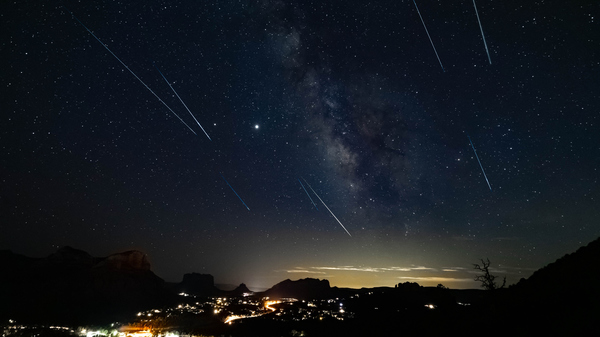
Researchers in the High Arctic have to create a daily rhythm without the help of time zones or cues from the sky.
©iStockphoto.com/KijungYoon
The Arctic is like no other place on Earth; a vast, floating ice cap with no permanent population , no set time zone, and no normal daylight hours. These factors can complicate life for polar explorers, since we humans generally need a time structure to function at our best. So, in order to establish a workable day, the captains of Arctic ships are usually given the power to choose the best time zone for their missions.
Flights that land before you leave
Standing in a Place Out of Time
Imagine planting your feet directly on top of the Geographic North Pole . Standing there, shivering in the cold, you would exist in a kind of temporal anomaly - at the connecting point of all time zones on Earth.
In fact, if you were to take a short circular walk around the Pole, you could cross every time zone in a few seconds, speeding time up, in a sense, and even changing the date when you cross the International Date Line .
Since no local time applies, what else could you use to establish the hour? The position of the Sun? The sky above you would offer no clues about the time of day either. In the High Arctic, the Sun rises and sets just once a year. Looking up, you would see only the endless daylight of summer or the unyielding darkness of polar night .
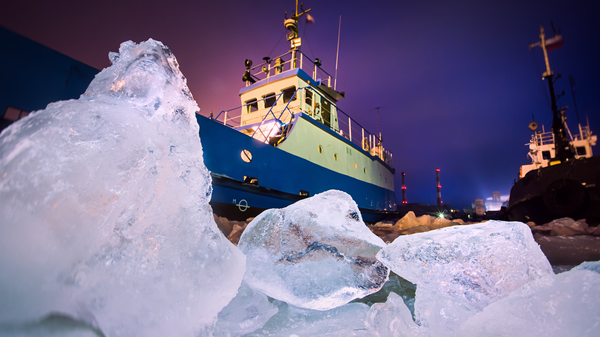
Polar timekeeping can create bizarre events, like two ships operating in different time zones despite being right next to each other.
©iStockphoto.com/Tsuguliev
A Saga of Drifting Ice and Shifting Clocks
One recent Arctic journey shows the time-warping effects of exploring near the pole. The research ship RV Polarstern sailed out of the Norwegian port of Tromsø and into the Arctic Ocean in September 2019, coming to rest on an ice floe a few days later. Her mission was to drift with the ice and study the effects of climate change on the Arctic ice sheet.
The long polar sunset lingered for weeks in October. As the last glimmer of light disappeared, the ship´s captain decided on a policy of moving the time zone back once a week, for six consecutive weeks.
This was no easy task. Clocks had to be precisely re-set, instruments calibrated, work shifts adjusted, and communications re-organized for each time change.
This policy created some of the temporal oddities that can arise in the Arctic. A short time later, another ship, the icebreaker Akademik Fedorov , pulled up right next to the Polarstern to deliver supplies. In that case, the vessels were actually existing in different time zones , creating a bizarre time gap between two ships that were just meters apart.
Less Complex at the South Pole
The way scientists establish time at the poles varies according to which end of the Earth they are studying, and the focus of their research.
In contrast to the drifting cap of the Arctic, Antarctica is a continent , made up of both land and ice, and it hosts permanent, inhabited research bases. So the general rule in Antarctica is to use the time zone of the sponsor country of the permanent station.
For example, the Norwegian Troll Station established a time zone similar to Norway , to make communications with Oslo easier. And at the Australian Casey Station, they use a time similar to Canberra, Australia .
Time for Body Rhythms and Global Trade
To function efficiently, most people need a sense of the rhythm of the day . At the poles, this can be challenging. In the polar night, there is only darkness in the sky, and our body receives no clues about when to get up, eat, or drift off to sleep. There is no changing light pattern to trigger our circadian rhythm.
In Sync with Circadian Rhythms
But the need for time structures goes beyond our personal well–being. The world at large relies on time zones to operate efficiently. In fact, it was the desire to better coordinate international shipping, travel, and trade that led to the International Meridian Conference of 1884 in Washington D.C., which established many of the time zones that are in use today.
Why Do We Have Time Zones
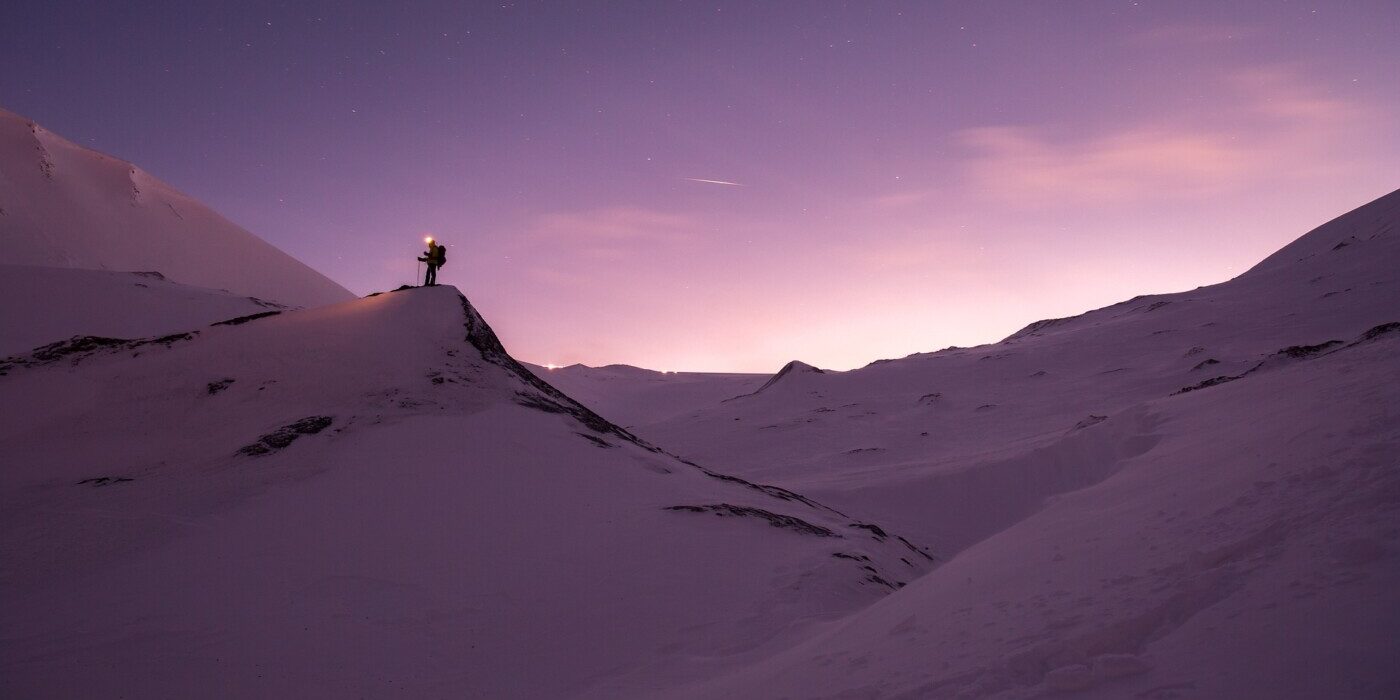
Time Travel: the race for the South Pole
I n December 1911, exactly 111 years ago, a team of Norwegian explorers led by Roald Amundsen reached the South Pole, making them the first known people to set foot on the Earth’s southernmost point. While the Amundsen voyage was a success, the story of the other explorers in the race for the South Pole – a British team led by Robert Falcon Scott – was one of tragedy, ending with their deaths. What happened in this competition, and why did Amundsen triumph?
It was one of the last prizes in exploration, and it would have been a phenomenal coup
Despite being termed a race by the newspapers, the two teams did not at any time acknowledge or plan a competition. Both Amundsen and Scott had planned expeditions that had ambitions of becoming the first man to reach the South Pole – it was one of the last prizes in exploration, and it would have been a phenomenal coup.
Scott began his career in the Royal Navy , before being appointed leader of the British National Antarctic Expedition in 1901 (better known as the Discovery expedition) despite a general lack of Arctic experience at that time. Despite challenges, the expedition was generally viewed as a success, and Scott returned to England a hero. One of his Discovery crew, Ernest Shackleton, had begun to launch his own attempts to fund Antarctic expeditions, but after Shackleton’s Nimrod trip failed to reach the pole, Scott launched his own effort “to reach the South Pole, and to secure for the British Empire the honour of this achievement”.
Amundsen also had Arctic experience – he had been first mate on the Belgian Antarctic Expedition (1897-99), and learned valuable lessons about polar exploration and preparation. He led the first expedition to successfully traverse the fabled Northwest Passage in 1903, picking up advice from the local Inuit people on how best to survive in the freezing conditions. On his return home, he tried to raise funds for an expedition to reach the North Pole – however, after hearing rumours that the Americans may have already succeeded after he had set off, he changed his objective to the South Pole instead.
Both Scott and Amundsen began their voyages in June 1910 – Scott for the South, Amundsen for the North – and the Englishman learned that his counterpart had changed course after receiving a telegraph in October. The two men had different approaches in terms of planned voyages and their kit. Amundsen landed at the Bay of Whales, 60 miles closer to the pole than Scott’s landing site of the McMurdo Sound, giving him an immediate advantage. This difference was explained, in part, by the differing objectives of the expeditions – Amundsen was focused only on the Pole, while Scott also had scientific obligations.
Scott came with horses, dogs, and motorised equipment, but only the dogs were of any real use in the Antarctic climate. Amundsen created supply depots and brought 52 dogs, which would pull sleds and in some cases be sources of fresh meat, along with seals and penguins. He also opted for animal skins to keep his men warm , drawing on the guidance of the Inuits he had met earlier in his career – the skins were better at repelling water, while the woollen clothes favoured by the British never dried out in the conditions and became extraordinarily heavy when wet.
Amundsen’s group ultimately had a relatively uneventful trek, with extreme temperatures the only real problem. They reached the South Pole on 14 December 1911, and they left a note to declare their achievement in case they failed to return home. They managed – they reached their ship a little over a month later, and their success was announced publicly in March 1912, when they landed in Hobart. Amundsen went on to establish a shipping business which did well during the war years, and had a few more polar adventures before dying in a plane crash in June 1928.
They were meant to be met by a support team, but they did not arrive on time
By contrast, Scott’s trek was fraught with misery and difficulties, and the team’s spirits were knocked when they reached the pole on 17 January 1912 and discovered that Amundsen had beaten them. They had an 862-mile return journey, and they flagged on the way as a result of bad weather, hunger, exhaustion and a lack of supplies. They were meant to be met by a support team, but they did not arrive on time. By this point, many of the team (including Scott himself) were suffering from severe frostbite. They were trapped in their tent due to blizzards – the remaining men wrote their farewell letters before dying, to be discovered eight months later.
Scott’s ill-fated voyage became the thing of legend in the immediate aftermath, but over the course of the 20 th century, he came under increasing fire for his lack of preparedness and an amateurish approach which cost the lives of his men. A key legacy of the trek is the fact that Scott’s team had recovered 16kg of Antarctic fossils, an important geological discovery which would ultimately help prove the theory of continental drift. Amundsen, meanwhile, has a quieter legacy despite his two major successful expeditions. But, in a pleasing manner, the names of these two pioneers have now been honoured in the name of a permanent research facility, the Amundsen-Scott South Pole Station .
Leave a Reply Cancel reply
Your email address will not be published. Required fields are marked *
This site uses Akismet to reduce spam. Learn how your comment data is processed .
Featured Topics
Featured series.
A series of random questions answered by Harvard experts.
Explore the Gazette
Read the latest.

‘Harvard Thinking’: Is AI friend or foe? Wrong question.

Getting ahead of dyslexia

Why AI fairness conversations must include disabled people
Life on the ice.
Senior scientist Denis Barkats brings equipment back to the Amundsen-Scott South Pole Station from the Dark Sector Laboratory.
Credit: Samuel Harrison
Juan Siliezar
Harvard Staff Writer
Harvard researchers recount working and living at one of the most remote places on Earth: The South Pole
For the scientists who work at the Amundsen-Scott South Pole Station, life at the bottom of the planet is about battling the extreme.
Temperatures never rise above freezing, and can plummet well past 100 degrees below Fahrenheit. Half the year is spent in nonstop sunlight, while the other half is constant night. The area is more than 800 miles from the Antarctic coast, sits atop two miles of vertical ice, and is so dry it’s classified as a desert — the biggest in the world. To top it off, it’s inhospitable to all forms of life and, during the nine-month winter season, the station is cut off from the rest of the world because the fuel that powers the only planes capable of making the trip would freeze into an unusable jelly.
Then there’s the science itself.
For researchers from the Harvard-Smithsonian Center for Astrophysics (CfA) that means working on a suite of complex microwave telescopes that search the sky for the earliest traces of the Big Bang. A typical week involves workdays in the double digits, six and sometimes seven days a week, because the deadline is tight. The station is only accessible during a three-month window.
Taken together, the jarring environment and limited worktime make the South Pole among the most taxing and isolating work experiences a person can go through, according to seven current and former members of the CfA’s Kovac CMB (Cosmic Microwave Background) Group, which is led by Professor John Kovac and every year sends researchers to the Pole. It’s worth it, they say, because they get an experience relatively few people ever will.
Auroras as seen from the Amundsen-Scott South Pole Station. The red light marks the telescopes of the Dark Sector Laboratory. Behind them, the early glow of sunrise, still over a month away, can be seen on the horizon.
Credit: Samuel Harrison and Hans Boenish
The southernmost point of the planet is a 9,000-mile journey from Cambridge that can take more than a week. Over the station’s summer season (typically November to mid-February), the group members rotate in and out to work on the BICEP and Keck Array CMB Telescope Experiments . Some stay for a few weeks, others a few months, and a committed handful stay through the winter season (mid-February through October).
Most people will never go. A ticket is at least $45,000, not including equipment, and the Amundsen-Scott station, one of three U.S. research facilities on the continent, is not usually open to tourists. The station’s researchers and support personnel are among the select few who regularly make the journey.
The simple part of the journey is getting to Christchurch, New Zealand, where the U.S. Antarctic program is headquartered. From there, researchers board military planes to McMurdo Station, the U.S. logistical hub built on a bare volcanic rock at the foot of Antarctica. Then they wait. The Air Force isn’t afraid to delay or cancel any number of scheduled flights until there are ideal conditions to reach the Pole.
When the all-clear is finally given, the nearly three-hour flight is breathtaking.
Scientists must cross the Transantarctic Mountains to reach South Pole station high up on the polar plateau. The flight from the coast to the interior of the continent is about five hours on an LC-130 transport plane.
“It’s probably one of my favorite parts of the journey there,” said James Cornelison , a Ph.D. candidate in astrophysics in the Graduate School of Arts and Sciences who is working with the Kovac CMB Group. He’s been down every year since 2016 and in November will leave again for a two-month stay.
The plane, a ski-equipped Lockheed LC-130, soars above a featureless ice shelf, he said, then over the Transantarctic Mountains before rising up to the Antarctic Plateau, a sheet of ice more than 9,000 feet thick. It lands on a runway made of ice and snow.
Samuel Harrison ’12, a former research scientist and mechanical engineer with the group who in the last five years has spent more than 15 months at the Pole, described it best: “As you’re crossing the Transantarctic Mountains, you look below you and there’s just these amazing glaciers where the ice is essentially flowing off the continent down through the mountain range out to the ocean. You just see the height difference between zero elevation and 10,000 feet of snow [and ice]. When you get up to the plateau the mountains basically disappear because the snow [and ice] is as high as the mountains.”
Initial shock
Researchers get an environmental reality check as soon as they touch down.
The cold hits them right away, freezing their nose hairs. The average temperature during the summer season is 18 degrees below Fahrenheit — which Boston reached just once, on the coldest day in its recorded history. The next thing most of the scientists notice is the brightness. The sun is on a 24-hour loop around the horizon, the sky is an intense blue, and the snow reflects all the light back up, blinding and disorienting them.
“It’s like stepping off on a new planet,” said Denis Barkats, a senior scientist on the team. “All of your human environment bearings are off.”
Robert Schwarz has wintered at the South Pole a record 15 times. Pictured here with his winter breathing mask.
Some feel dizzy, even sick, right away because of the elevation and because of how incredibly dry the air is. The Antarctic desert, where the Pole is located, is the largest, driest, and windiest desert on Earth.
All that hits some researchers hard. Some take a snowmobile the roughly 100 meters from the runway to the squat, metallic-colored station, which is elevated above the ice, because they can’t make the walk on their own. Others aren’t affected, or at least not immediately. Eventually, it catches everyone, said Barkats, who’s spent more than 28 months at the Pole over eight trips.
“Within a few hours you start feeling the effects of altitude,” he said. “Even if it’s not severe, you do feel it. You walk up some stairs and you feel dizzy or out of breath. And then again, within a few hours, you start feeling the effects of the dry atmosphere. Your mouth is dry. Your nose is dry. Then with the combination of the dry air and the high altitude, you drink a lot so you’re peeing all the time,” he said, laughing.
The station community
After arriving, the scientists get a chance to settle in. The station has a gym, greenhouse, movie room, music room, rock-climbing wall, and even a sauna, which make up for some of the isolation there, since internet access and the chance to speak with family and friends is limited to the two to four hours when communication satellites pass overhead.
But they do have the community at the station.
“I find the people aspect of my stay there to be very enriching and interesting,” said Marion Dierickx ’12, A.M. ’14., Ph.D. ’17, one of the CMB Group’s postdoctoral scholars.
Amundsen-Scott Station, which is the third iteration of the original 1956 complex, houses about 150 people in the summer and 50 during the winter. Along with astronomers and astrophysicists, scientists travel there to study particle physics, solar energy, geology, glaciology, and climatology. There are also cooks, plumbers, doctors, internet technicians, electricians, and others who help keep the station running.
“I always joke that I live in Boston and it’s a city of 3 million people but I actually socialize more and meet more people when I’m at the South Pole.” Marion Dierickx
Installing a new vacuum window on the BICEP3 Telescope.
“The people who end up at the South Pole are not just your average person,” Dierickx said. “They tend to be people who are maybe a little bit eccentric but definitely have a sense of adventure. People who’ve led interesting lives, who’ve had all sorts of unusual trajectories and experiences. The proportion of the station population who are outdoor adventurers and have traveled the world is extremely high, so you sit down with anybody over a meal and you’re talking about that time when they soloed across some crazy mountain range in Alaska or whatever — that’s just your normal dinner conversation at the South Pole.”
Many of the researchers who spoke with the Gazette described the group as the most welcoming and tight-knit they’ve been a part of. “I always joke that I live in Boston and it’s a city of 3 million people but I actually socialize more and meet more people when I’m at the South Pole,” Dierickx said.
People form bands, and pick-up basketball sides. They organize trivia nights. They celebrate birthdays and holidays like Thanksgiving and Christmas. And the station is replete with its own traditions, carried on season after season.
Some are ceremonial, like the unveiling of the new South Pole marker, a location that shifts about 20 meters every year because the station sits atop a moving ice shelf. The marker is designed by the previous year’s “winter-overs.”
Samuel Harrison leaves Dark Sector Laboratory in a whiteout. BICEP3 Telescope on the right, South Pole Telescope on the left.
One is horror: After the last plane takes off for nine months, the winter crew watches “The Thing” and “The Shining,” whose characters are also isolated from the world by winter conditions. There’s the “Race Around the World,” a three-lap, two-mile race around every line of longitude on the planet.
And one is bizarre: baking in the station’s sauna at 200 degrees Fahrenheit and then running outside to touch the South Pole marker in a bathing suit. In the winter, when temperatures reach below 100 degrees, it becomes the “300 Club” in honor of the temperature range, and they do it in nothing but their boots.
“The sensation is amazing,” Barkats said. “Your brain tells you, ‘You should be freezing,’ because you know it’s negative-100 degrees outside, and yet your body has accumulated enough heat that you actually feel quite comfortable for three to five minutes. I did it during my winter and it was so incredible, I repeated it immediately afterwards.”
‘Space’ walks
Besides that bit of fun, going out in the cold is serious business. All personnel are issued extreme cold weather gear by the National Science Foundation, which oversees the Antarctic program. The outfit includes a big red parka, overalls, goggles, three layers of gloves, heavy pants, large boots, and many more layers. It adds up to about 20 pounds of clothing and takes about 10 minutes to pull on. Many of the researchers say they feel like astronauts once they’re prepared for the outdoors.
The gear is so effective that it does more than cancel out the cold. Some of the scientists admitted they felt too hot when they were outside. In fact, there were times they went without some of it.
Denis Barkats stands in front of a sundog, a phenomenon created by sunlight refracting through hexagonal ice crystals in the air.
“I actually felt colder during the winter in Boston a couple of times than I ever felt being outside there,” said Kate Alexander , A.M. ’14, Ph.D. ’18, who spent December 2015 at the Pole as a grad student.
But the freedom to skip a layer only lasts for the summer, when the temperatures linger at about 20 degrees below zero. In winter, all gear is necessary and they must be absolutely rigorous putting it on. Any exposed skin can be frostbitten in less than five minutes.
BICEP3, the current version of the BICEP telescope, and the Keck Array telescopes are about a kilometer away from Amundsen-Scott’s main living facility, in what’s called the Dark Sector laboratories. To get there, researchers follow an orange flag-line out in the frozen plains. It’s about a 15-minute walk each time they have to go back and forth, which is usually about four times a day.
The landscape is stark and unchanging. Besides the main station and nearby research facilities, there is nothing but open sky and snow that squeaks like Styrofoam underfoot. The weather is fairly calm, but there is wind that is able to carry the snow — which behaves more like sand because of the extreme cold and dry — scattering dune formations across the empty expanse.
“When you look out from the station, depending on the time of day, you could totally imagine that you are on the ocean.” Samuel Harrison
Dune-like formations sculpted by the wind called Sastrugi cast shadows on the ice as sunset approaches.
“You have these little waves that are sculpted by the wind in the surface of the snow,” said Harrison, the mechanical engineer. “When you look out from the station, depending on the time of day, you could totally imagine that you are on the ocean.”
Another casual summer sight are the solar displays formed as ice crystals in the air reflect the sunlight, creating arcs, halos, and spots around the sun.
The CfA researchers have only about three months to get to the Pole, make routine upgrades like yearly calibrations or swapping out broken or damaged pieces, complete major overhauls such as replacing entire telescopes, and leave. Any longer, and they are trapped.
“It creates this urgent tempo,” said Cornelison, the grad student. “Every minute that you spend doing something recreational is a minute that you’re not spending accomplishing your job. Your standards for what a good work-life balance is change. It’s not abnormal to wake up at 5 or 6 in the morning and get some work done before breakfast and then work until lunch and then work from lunch until dinner and then after dinner you go back out to the telescopes and work. So every once in a while, you’ll find yourself working 14 to 16 hours and then you go back to the station, you sleep, you wake up, and you do it all over again.”
The hustle only intensifies as mid-February approaches, but it also creates a sense of focus at the station since everyone is working under the same hard deadline. It’s also why the work is planned months ahead, before the group even leaves Cambridge.
Marion Dierickx and Samuel Harrison operate the BICEP3 Telescope from inside the Dark Sector Laboratory.
The work is exacting. The telescopes are a complicated mix of electronics, optics, control systems, motors, and detectors inside a large cylinder placed on a moveable mount inside the observatory. The detectors in the telescopes must be kept at about a quarter of a degree above absolute zero, and they require a vacuum chamber that uses a cryogenic system to keep them super-cooled.
With work that precise, things often go wrong. Parts sometimes don’t fit, or don’t work. Sometimes the scientists need equipment that’s back in Cambridge or in the labs of one of the institutions the Kovac CMB Group collaborates with, which include the California Institute of Technology, Stanford University, and University of Minnesota. When this happens, the team has to improvise with what’s on hand, often visiting the “graveyard” for spare parts and welding them pieces to force a fit. Other times they find a tool or material — even dental floss — that can be an effective substitute for whatever they need.
It all begs the question of why the telescopes are there in the first place.
The answer is as big as the Big Bang.
The extremely dry environment at the South Pole limits contamination to the data collected by the telescopes, as water molecules absorb microwave energy. In addition, the site provides unobstructed views of a particular patch of space, since the sky above the Pole never sets, it only rotates.
Together, these factors make the South Pole the ideal place to look for the tiny signals from primordial gravitational waves that were generated during inflation, fractions of a second after the universe began.
After the last plane takes off, it leaves behind a skeleton crew of about 50 people.
“You’re left there and you’re it. You’re the person to run it,” said Barkats, who wintered at the Pole from the end of 2005 to 2006, spending a total of 12 consecutive months there. “Your job is to avoid downtime.”
Sometimes that’s easy.
“These are really complicated instruments with a lot of moving parts and different subsystems, so things are always needing help, whether that’s servers running out of space or helium pressure needing to be topped off,” Harrison said. “It’s just like a car — things break down when they’re being used.”
Harrison over-wintered in 2015, spending almost a year on the ice. It was the first time the BICEP3 telescope was deployed, so he kept busy trying to get it to work as designed.
“I effectively lived alone out in the [Dark Sector] lab working all day, every day for nine months,” he said. “Depending on the state of the telescope I would often need to stay out there for multiple days.”
At other times, Harrison and Barkats said they got into a rhythm: communicating with friends and family at home when they could, planning the next week’s goal with colleagues back in Cambridge, taking walks, and participating in game nights with other winter-overs.
Although Amundsen-Scott Station is completely self-sufficient, even growing its own vegetables in the greenhouse, the Pole’s true isolation hits in winter. If something were to happen, the crew is on their own; rescue is almost impossible because of the cold, the darkness, and the gale force that can come at any time. Yet there have been only three winter evacuations since the station was established. In 1999, a doctor who discovered she had breast cancer treated herself for almost six months, performing her own biopsy and administering her own chemotherapy until a rescue plane was cleared for takeoff.
None of it is enough to keep people from the outdoors, which fills with stars and colors easy to get lost in after the sun goes down.
The BICEP3 Telescope makes observations about a week before sunrise. The Keck Array Telescope and the Amundsen-Scott Station are in the distance.
Credit: Han Beonish
“Sunset at the South Pole is something that very few people have ever experienced,” said Harrison. “It is more of a process than a moment.” It happens over a matter of weeks, starting near the end of February and going to the end of March. Over that time, the sun gradually moves closer and closer to the horizon, skimming the edge and becoming distorted as the light bends through the atmosphere before it disappears.
What’s left isn’t darkness. Small streaks of purple sliver out from the opposite horizon and slowly take over the entire sky. When that’s gone, stars come out in droves. “Incredible,” Harrison said. “Horizon to horizon, no light pollution, so clear that you can see individual gas clouds in the central regions of the galaxy with the naked eye.”
Then come the auroras, which most often appear as swaying curtains of green light moving across the deep night sky. They can also be red, purple, or white.
“They are mesmerizing rivers in the sky,” said Barkats. “They move and dance and bounce and change, sometimes slowly, sometimes fast. Sometimes I would walk from the station to the telescope, a 25-minute walk fully geared up, with my hood and goggles giving me this tunnel vision, when suddenly I would wonder why the snow was glowing green. How odd. Then I’d lift my head up and would see a firework of light and color in the sky. Although I’m a physicist and I fully understand the phenomena causing auroras, I still had shivers and felt a sense of awe and wonder.”
Sunrise, Harrison and Barkats said, is a perfect reversal of sunset, and it signals they are soon to leave their adopted home.
“By this point you have been in isolation for over seven months and there is tremendous anticipation,” Harrison said.
“It’s like being an adult, but being born again. You discover all of the wonders of life that you’ve forgotten.” Denis Barkats, on returning home
No matter how beautiful, winter isn’t for everyone. Dierickx, the postdoctoral fellow, originally accepted the post hoping she would get to winter over, but after two trips in the summer season she reconsidered.
“I realized that to me the prospect of spending a whole year in that same tiny spot on the map is very forbidding in the sense that the South Pole is a complete arbitrary location,” she said. “There is nowhere to go from there. The idea of spending a whole year there is a huge opportunity cost for all the other things I could be living and experiencing elsewhere in the world. I think to me it would feel like a prison.”
Dierickx, who will travel to the Pole again this summer, wasn’t alone among the researchers the Gazette spoke with in feeling that the Pole’s warmer months are enough for them. By the end of this upcoming season, Dierickx is sure she’ll be ready to go home again.
More like this

‘Seeing the unseeable’
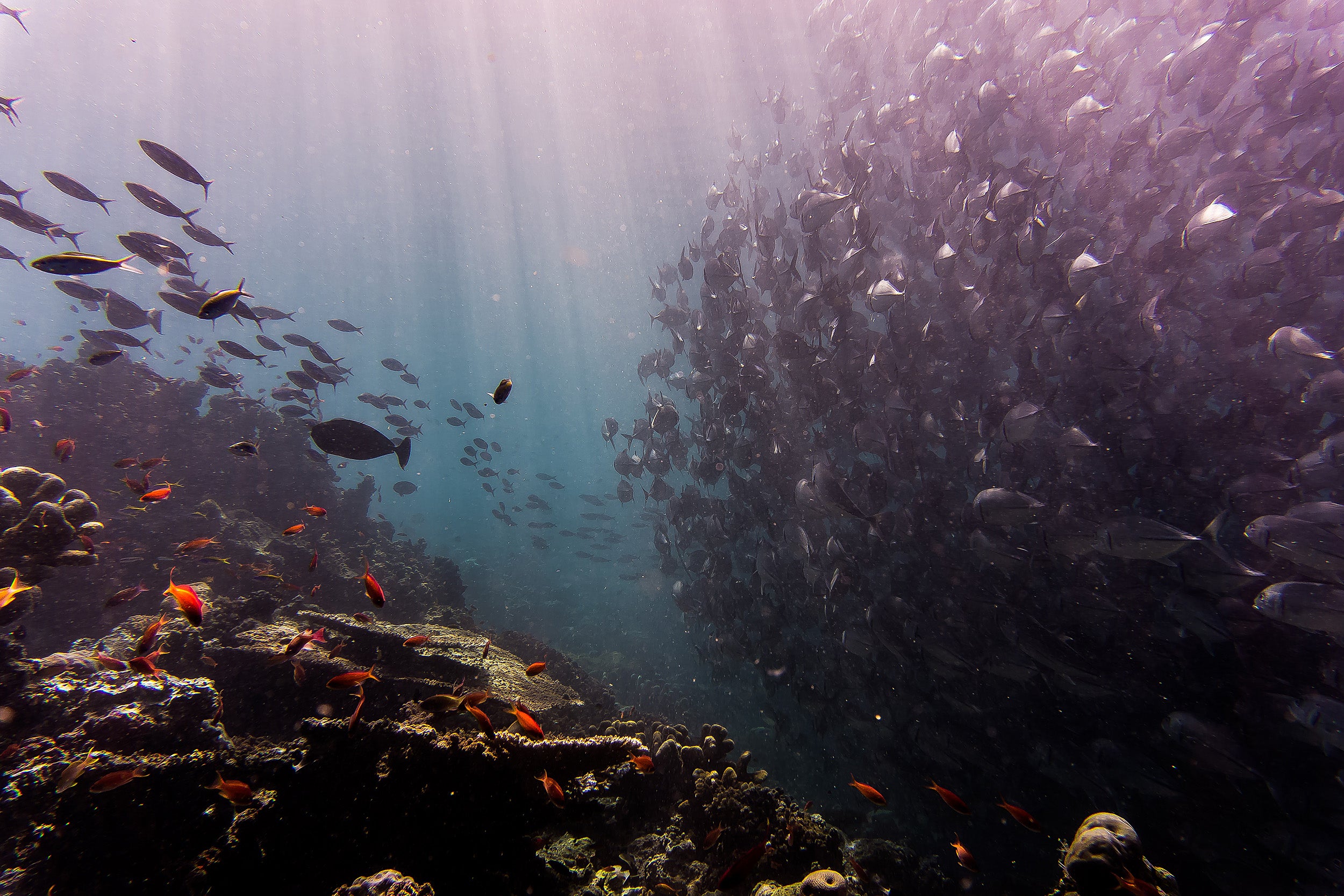
Oceans away

Before the Big Bang
“There’s a pretty consistent trend that when you land there you’re bright-eyed and bushy-tailed and you’re happy and you’re ready to put in all this effort and work,” said Tyler St. Germaine, who has visited the station for two-month stays four times in as many years.
“You’re full of energy and you’re full of optimism,” said St. Germaine, who will earn his Ph.D. in astrophysics at the end of the academic year. “But almost every time, by the time your six or eight weeks are up, your last week or two you’re like, ‘I’m ready to go home. I miss my family. I miss my internet. I miss my friends. I want to breathe air again. I want to experience the real world. I want to get out of this place.’”
Luckily, the shock of returning is always a pleasant one, and comes with a new if temporary appreciation for some of the best features of modern life.
“It’s like being an adult, but being born again,” Barkats said. “You discover all of the wonders of life that you’ve forgotten how awesome everything was. It’s raining! That’s fantastic. You’re seeing animals. You’re seeing babies. You’re going to a restaurant. You have this sudden choice among so many different foods that you can eat.
“To me, that very first month that I was back in New Zealand, all of those little quirks that make life amazing just became very acute and I was super impressed by everything. I thought life was wonderful. But then you forget. It smooths out and the routine of life catches back onto you.”
The team is currently preparing to deploy the newest telescope in the series called the BICEP Array this coming summer season.
The research being conducted by the Kovac CMB Group and the United States Antarctic Program is funded by the National Science Foundation.
Share this article
You might like.
In podcast, a lawyer, computer scientist, and statistician debate ethics of artificial intelligence

Harvard lab’s research suggests at-risk kids can be identified before they ever struggle in school

Tech offers promise to help yet too often perpetuates ableism, say researchers. It doesn’t have to be this way.
Yes, it’s exciting. Just don’t look at the sun.
Lab, telescope specialist details Harvard eclipse-viewing party, offers safety tips
Forget ‘doomers.’ Warming can be stopped, top climate scientist says
Michael Mann points to prehistoric catastrophes, modern environmental victories

How dating sites automate racism
Sociologist’s new book finds algorithms that suggest partners often reflect stereotypes, biases
Travel to the South Pole
The bottom of the world, the globe’s most southern point… since the discovery of the Earth’s axis the South Pole has held a fascination for explorers and adventurers from all corners of the world. How does one get to the South Pole? Is it possible to travel there? Once you do make it, what is actually there?
The Four South Poles
The first question to sort out is what South Pole you’re after. When most people talk about the South Pole they mean the Geographic South Pole, but there are actually four South Poles to consider: geographic, magnetic, geomagnetic, and the Pole of Relative Inaccessibility.
The South Magnetic Pole is where the south-seeking end of your compass needle points to. The magnetic field that attracts your compass needle is created by particles deep in the Earth’s core. The magnetic field is continually moving and scientists monitor these changes and update the World Magnetic Model (WMM) to keep global navigation up to date. As of 2023, the South Magnetic Pole is located just off the coast of Antarctica, in the Southern Ocean south of Australia.
Fun Fact: Research has also shown that the ‘north’ and ‘south’ magnetic poles have swapped places over the years. This is a phenomenon is known as Polar Reversals . Scientists discovered a history of Polar Reversals by studying magma samples around the magnetic poles. Polar Reversals take thousands of years to occur and flip every 300,000 or so years.
The South and North Magnetic Poles aren’t always perfectly opposite of each other. This is where the Geomagnetic Poles comes into play. If you picture a giant bar magnet inside the Earth, the magnet would point to Earth’s North and South Geomagnetic Pole. The Geomagnetic Poles represent the general overall trend of Earth’s magnetic field , especially as it extends to space. While the Geomagnetic Poles don’t have an effect on navigation, they do affect the location of the Northern and Southern lights. As of 2022, the South Geomagnetic Pole was located at 80.65°S 107.32°E.
The Pole of Relative Inaccessibility (POI) is the location on the surface of the Antarctic ice sheet that is furthest from the surrounding coast. Various positions are cited, depending on whether the floating ice shelves that surround Antarctica are included or not. As of 2020, the POI (measured to the outer coast of Antarctica) was located at 83° 54’ S, 64° 53’ E. The POI is an amazing destination in itself but is not the furthest south that most are after.
Which brings us back to the South Geographic Pole, the southern axis of rotation of the Earth. At 90S latitude, it the furthest point south that one can travel to on Earth. Here you will find a marker for the South Geographic Pole, and the ceremonial South Pole. This point was for many years – and still is – the holy grail of polar explorers and adventurers.
History of South Pole Travel
In the late 1700’s and early 1800’s, several expeditions aimed to explore the Southern Ocean and as-yet unknown lands beyond. The Antarctic continent was first sighted in 1820 and multiple expeditions followed, seeking to resolve geographical questions, undertake scientific research, and discover new commercial resources. The expeditions were led by adventurers from around the world and illuminated the unique challenges posed by Antarctic exploration. Interest peaked between the late 1800’s to 1922, during what is now known as the ‘Heroic Age’ of Antarctic exploration.
The first attempt to reach the Geographic South Pole was the 1901-1904 National Antarctic Expedition, led by British explorer Captain Robert Falcon Scott . The expedition traveled to Antarctica aboard the Discovery , a ship custom-built for travel to the polar regions. The team discovered the polar plateau and set a ‘furthest south’ record but turned back on December 30, 1902, after travelling within 410 miles of the Geographic South Pole.
Ernest Shackleton, who had been south with Scott, led another notable attempt between 1907-1909. His team pioneered the Beardmore Glacier route through the Transantarctic Mountains and the use of limited motorized transport. They also set a new ‘furthest south’ record. With winter approaching and running short on supplies, the team turned back just 97 miles from the Geographic South Pole, nearly losing their lives on the return journey. You can view maps of their initial routes into the then unknown Antarctic wilderness here .
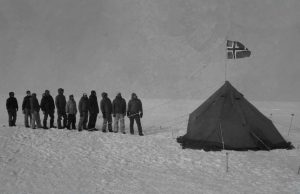
In 1910, separate British and Norwegian expeditions sailed south within weeks of one another, initiating a ‘race’ to the South Pole. Roald Amundsen , leader of the Norwegian team, had originally set his sights on the North Pole but secretly changed his objective after that prize was claimed by two other expeditions. The Fram set sail on August 9, 1910, and only after it was underway did Amundsen inform his crew that they would be sailing to Antarctica rather than attempting to drift across the North Pole.
Scott, leader of the earlier Discovery expedition, was already enroute to Antarctica, aboard the Terra Nova , when he received a telegram from Amundsen that simply read: “BEG TO INFORM YOU FRAM PROCEEDING ANTARCTICA – AMUNDSEN”.
Amundsen’s team was the first to arrive at the Geographic South Pole, doing so on December 14, 1911. Historians credit the expedition’s success to Amundsen’s adept use of dogsleds, his focus on the single goal of achieving the Pole, and his quick seven-day passage through the Transantarctic Mountains. His team left a small tent at the South Pole with a Norwegian flag planted atop, and a journal inside, documenting their achievement in case they were unable to return to safety. The five-man team, along with 12 of the original 52 dogs that set out on the expedition, made it safely back to their base camp Framheim on January 26, 1912.
Scott’s team left their base on November 1, 1911 and reached the South Pole on January 17, 1912, four weeks after Roald Amundsen’s Norwegian expedition. Weak and disheartened, the men began their return journey. Along the way, the men took time to collect geological specimens, and carried them to the end, despite their exhaustion and the approaching winter. The rocks contained plant fossils that proved Antarctica was once forested and joined to other continents. A planned meeting with supporting dog teams from the base camp failed, despite Scott’s written instructions. Scott and his companions perished while waiting out a blizzard, 150 miles (241 km) from their base camp and 11 miles (18 km) from the next depot.
Over the same time period, Australian Douglas Mawson led an epic exploration of the Antarctic coastline directly south of Australia (1911-14) and Japanese explorer Nobu Shirase led the first non-European Antarctic expedition.
Shackleton’s attempted crossing of the Antarctic continent (1914-1917) was the last great expedition of the Heroic Age and an epic tale of endurance and survival. By the 1920’s a new era of Antarctic exploration saw the incorporation of vehicles and aircraft and a greater focus on scientific or military objectives.
The International Geophysical Year (IGY) of 1957-58 sparked an intense period of Antarctic exploration and research, with a focus on earth sciences. A number of research stations were established, including Amundsen-Scott South Pole station at the Geographic South Pole; and a Soviet station at the Pole of Inaccessibility. The Commonwealth Trans-Antarctic Expedition (CTAE) led by Sir Vivian Fuchs and Sir Edmund Hillary, successfully completed the first overland crossing of Antarctica, via the South Pole, using tracked vehicles. It was the first expedition to reach the South Pole overland for 46 years. You can view a timeline of Antarctic exploration here .
Commercial South Pole Travel Today
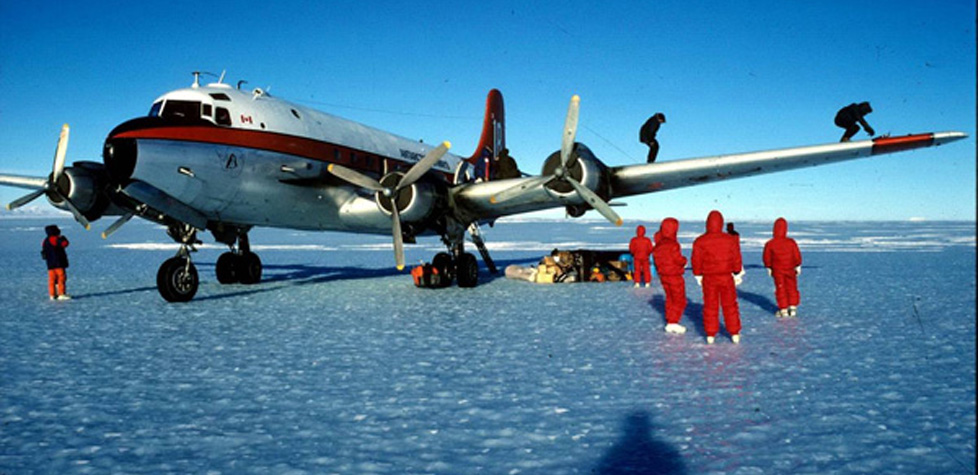
From the 1960s through much of the 1980s, travel to Antarctica was mostly limited to scientific and government research. The enormous distances and costs, along with the complete lack of facilities, were just too daunting for most private expeditions to overcome. In 1985, however, a trio of adventurers organized a successful private expedition to climb Mount Vinson. They formed Adventure Network International (ANI) and, two years later, on November 22, 1987, made history by landing a wheeled DC-4 aircraft, on a naturally occurring blue-ice runway, in the interior of Antarctica. This pioneering achievement paved the way for non-governmental expeditions to notable Antarctic landmarks such as Mount Vinson (Antarctica’s highest peak) and the Geographic South Pole. You can learn more about this historic flight here .
In 2003, ANI was purchased by Antarctic Logistics & Expeditions (ALE). ALE has continued to uphold ANI’s legacy of Antarctic exploration and has carried thousands of passengers to the region and supported almost every expedition that has skied to the South Pole, or crossed the continent.
Today ALE offers different options for the modern-day explorer to travel to the South Pole, with trips ranging from adventurous vacations to grueling expeditions. How you experience the South Pole is entirely up to you.
Flying to the South Pole
Adventurers can fly to the South Pole on one of our ski aircraft. The trip starts with an intercontinental flight to our base camp at Union Glacier. From there, guests have the option of a day trip or an overnight stay at the South Pole.
The day trip is an excellent option for those who wish to experience the adventure of the South Pole and return to the comforts of Union Glacier at the end of the day. Our location at 79 45S offers the shortest flight time to the South Pole (4-5 ½ hrs) and makes a true day trip possible, with no intermediate camp on the return journey. Guests have about 2-3 hours at the pole for photos and to take in the historical location before returning to Union Glacier for a hot meal and a good night’s sleep.
For those who want to stay overnight, ALE has a one-of-a-kind South Pole Field Camp , complete with Arctic Oven Tents to sleep in, a main dining tent with chef, and toilet facilities. Our heated, double walled sleeping tents are designed to withstand the especially harsh Antarctic conditions and are equipped with the same types of cots, mattresses, and pillows used at Union Glacier. Each is named after a famous Antarctic explorer.
ALE’s South Pole camp sits only 0.6 miles (1km) from the Geographic South Pole marker, the Ceremonial Pole and the Amundsen-Scott South Pole station. Our South Pole overnight experience is a truly unique adventure, perfect for guests who want extra time to drink in the one-of-a-kind environment.
Skiing to the South Pole
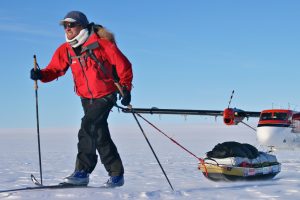
For those wanting to connect with the Antarctic explorers who came before them, ALE offers ski expeditions to the South Pole ranging from two weeks to the full Antarctic season. These are best suited for extreme expeditionists, who are comfortable in the elements, and willing to commit to an intense, pre-trip training program. ALE requires guests to have prior ski and winter outdoor experience before being cleared to participate.
The shortest option to ski to the South Pole is ALE’s Ski the Last Degree experience. Adventurers are dropped off at the 89°S line of latitude longitudinal and ski the last 60 nautical miles (69 mi/111km) to the Geographic South Pole. Guests drag their gear behind them on a pulk (sled) and camp out on the high polar plateau. Despite its shorter, two-week time frame, the Ski Last Degree experience is an extremely challenging expedition, with long days of intense activity at altitude and in extreme cold.
Our longer expeditions offer the ultimate mental and physical challenge. There are several different route options to consider:
- Start at Hercules Inlet, where the edge of the Antarctic continent meets the Ronne Ice Shelf. This route takes between 50 – 60 days to complete, climbing from sea level to more than 9300 ft (2835 m).
- Inspired by Reinhold Messner’s 1989 Antarctic crossing, this route offers a shorter but more demanding expedition. The Messner Start route takes up to 50 days and climbs gradually to more than 9300 ft (2835 m).
- This committing expedition starts on the far side of the continent and travels the route pioneered by Amundsen and his team in 1911. It ascends the steep Axel Heiberg Glacier, then navigates around the infamous maze of crevasses known as the Devil’s Ballroom, and across the polar plateau. This route takes between 40-50 days and reaches elevations up to 9500 ft (2900 m).
- While most expeditions follow the routes listed above there are other less-traveled routes available to explorers. These include starting from the northern edge of Berkner Island or from Constellation Inlet.
Visiting the South Pole FAQs
Below are some frequently asked South Pole Travel questions with answers from ALE’s Travel Specialists, who have years of experience helping people travel to Antarctica.
- Depending on what type of adventure you’re looking for, ALE offers flight and ski options to travel to the South Pole.
- When Amundsen and Scott arrived at the South Pole, it was an empty expanse of ice, stretching northwards in all directions. These days, the South Pole is a crossroads for science, history and adventure. The area around the Pole is an Antarctic Specially Managed Area. It is home to Amundsen-Scott South Pole Station, a large US base comprised of a central, elevated station, outlying science labs and facilities, and a skiway. The Geographic South Pole is located close to the station, with a decorative survey marker and a sign commemorating the achievements of Amundsen and Scott. Not far away lies the Ceremonial Pole, a striped pole with a reflective ball on top, surrounded by the flags of the original signatories to the Antarctic Treaty. Like much of Antarctica, the South Pole is covered by glacial ice, many thousands of feet thick. The ice is gradually flowing toward the coast and moves at a rate of approximately 33 feet (10m) per year. Because of this, over the course of the year, the pole marker gradually moves away from the Geographic South Pole. Each January 1, a new marker designed and fabricated by the overwintering station staff is placed at 90S.
- You’ll be able to see the outside of the station, but currently there are no tours being offered inside the base.
- Visitors to the South Pole are expected to stay in the vicinity of the Geographic and Ceremonial South Pole markers, or at ALE’s South Pole Camp. All other areas are off-limits to visitors.
- Our tented camp at the South Pole is designed to provide as much comfort and security as possible given the extreme environment. You will be sleeping in Arctic Oven tents. These double-walled, heated tents are designed to withstand Antarctic conditions. We provide cots, padded sleeping mats and pillows to use with your polar-rated sleeping bag.
- Our South Pole Camp toilets are surprisingly comfortable and private. Housed in a tent and similar to those at Union Glacier Camp , we clean them regularly and provide hand sanitizer in each. There are no showers at our South Pole Camp.
- A short .6 mi (1 km) walk.
- Depending on the aircraft, flights to the South Pole from our Union Glacier base take between 4-5.5 hours.
- You can view a full guide to the required clothing and equipment list for our fly-in trips here . Essentials include appropriate insulated jacket and pants, gloves, goggles and head gear. ALE has rental options available for guests.
- Sled hauling on Ski Last Degree and Ski South Pole experiences requires different clothing and equipment. What equipment you’ll need will depend on what route you are taking.
- Be prepared for extreme cold and the effects of altitude during your stay. South Pole temperatures range from -31° to -13°F (-35° to -25°C) and even the slightest breeze can quickly freeze exposed skin.
- The elevation at the South Pole is approximately 9300 ft (2835m) but it generally feels closer to 10,500 ft (3,200m), due to the compressed atmosphere at the poles.
- One of our experienced medics accompanies all South Pole flights and is ready to assist you should you have any issues with the cold or altitude.
Interested in experiencing the Geographic South Pole yourself? Contact one of our travel specialists today – we’d love to make your Antarctic travel dreams a reality.
Sign up for the newsletter
Thanks for signing up.
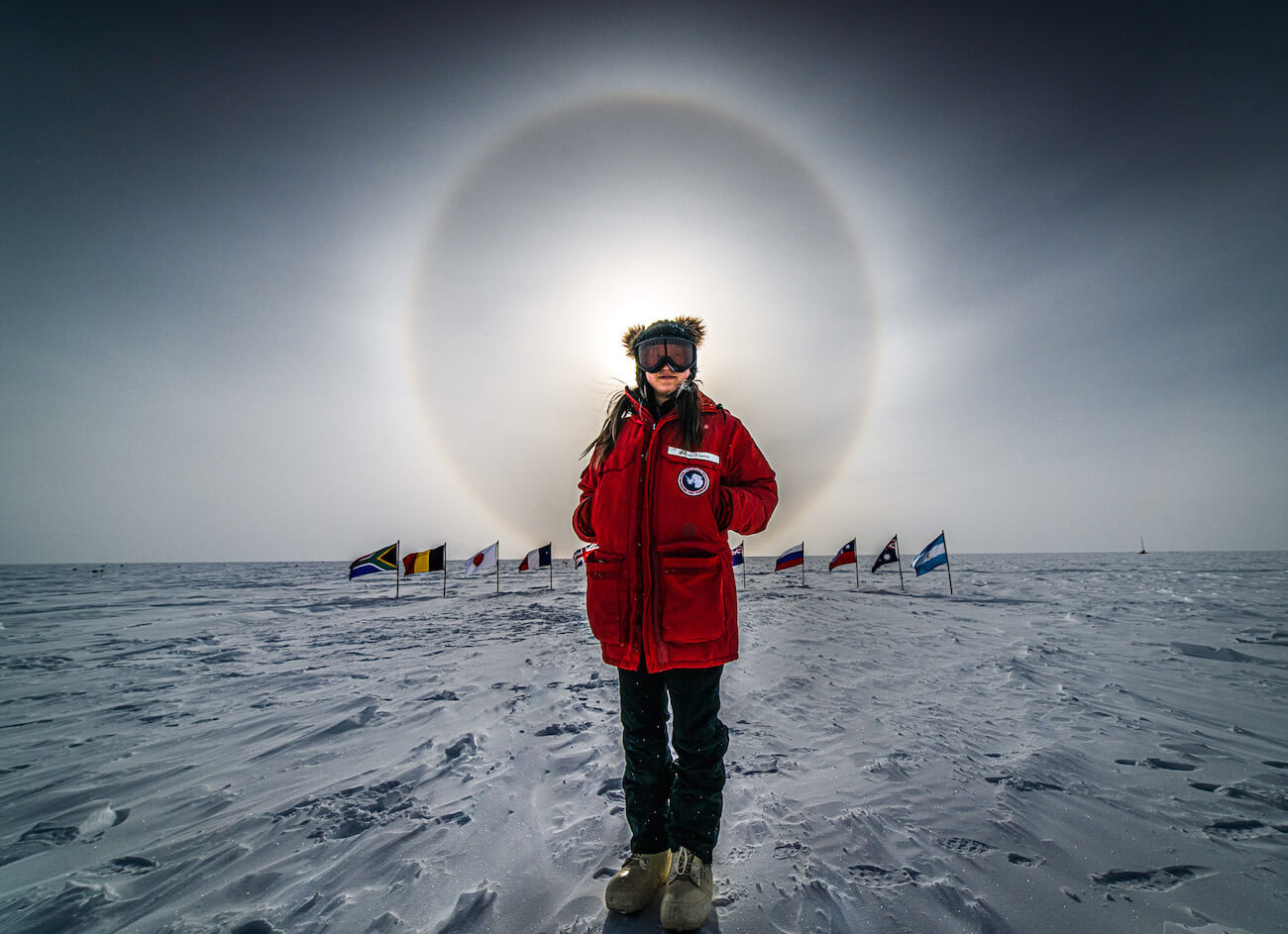
Life at the South Pole Station: Everything You Want to Know
Whenever I tell people I’ve worked in Antarctica , specifically at the South Pole, the most common questions I get asked are about what life at the South Pole Station is like.
The short answer:
Working and living at Amundsen-Scott South Pole Station, 90° South, is full of challenges; but it is the ultimate experience of a lifetime many of us Polies (people who have lived at the South Pole) will never forget.
I was fortunate enough to work at Pole during the 2021-2022 austral summer season as a steward.
I’m also the current steward coordinator (front of the house manager) for a full year until November 2023.
While it’s definitely not easy work, I couldn’t be happier about the opportunity to live where few people ever have the chance to visit.
And how often do people get to brag that they’ve been paid to live at the South Pole ?!
For those who might be headed down themselves in the future, or those who are just curious, I’ve compiled as much information as I could into this post from my experience working and living at the bottom of the world.
Feel free to use the Table of Contents to jump to specific sections of interest.
South Pole Station History and Background
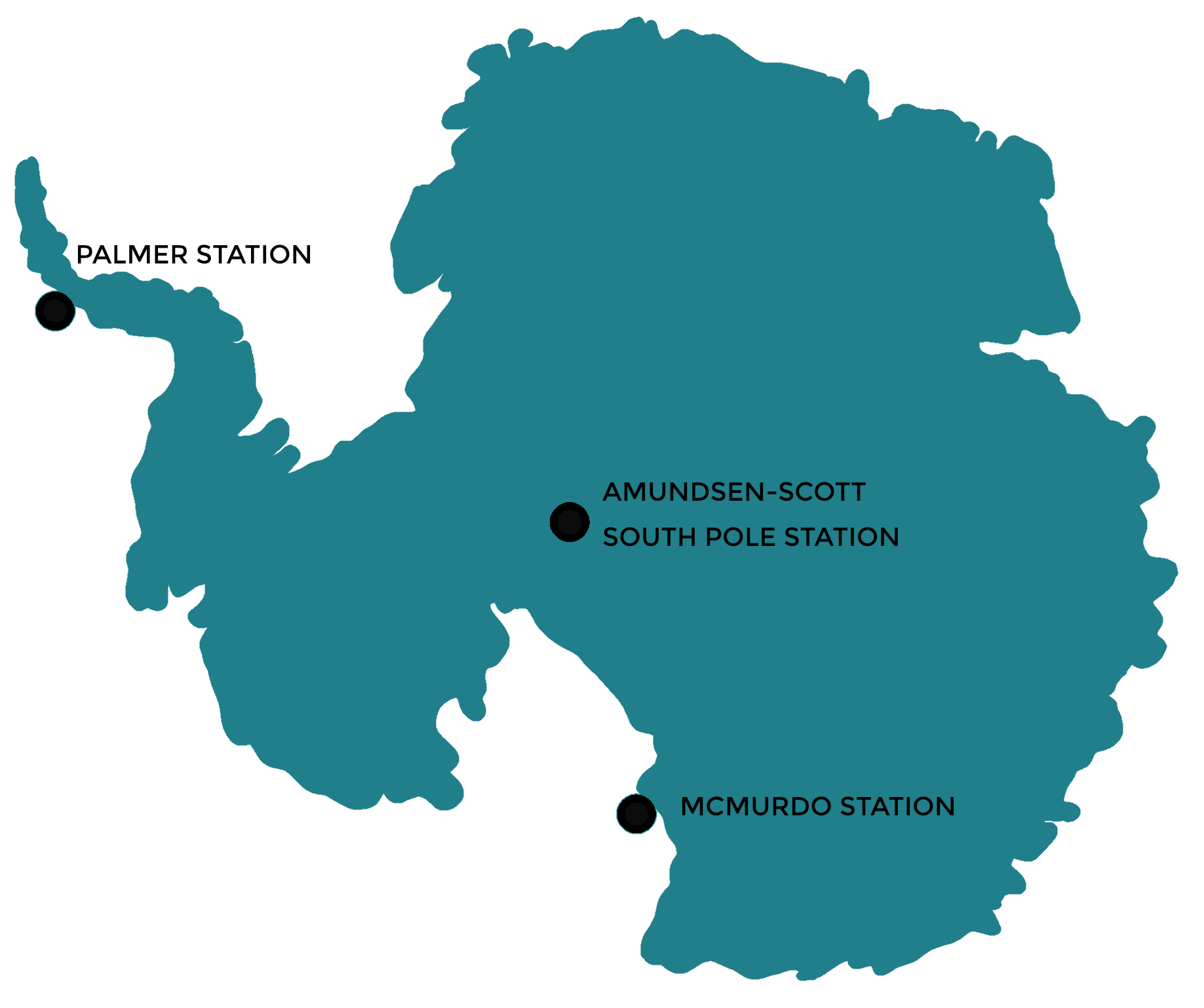
The official name of the station is Amundsen-Scott South Pole Station.
This is in honor of the first two expedition leaders to ever reach the Geographic South Pole in 1911 and 1912: Roald Amundsen (Norway) and Robert F. Scott (Great Britain).
The first South Pole Station was completed in 1957 and is one of three permanent U.S. Antarctic research stations.
The station was upgraded in 2008 and is now an elevated facility.
Outside of the main structure, there are detached buildings used for science and other operational needs.
Related: How I Got Paid to Live in Antarctica: FAQ About Working on the Ice
Get Your FREE eBook Now!
By providing your details, you consent to receiving our emails. Unsubscribe any time.
Where is the South Pole?
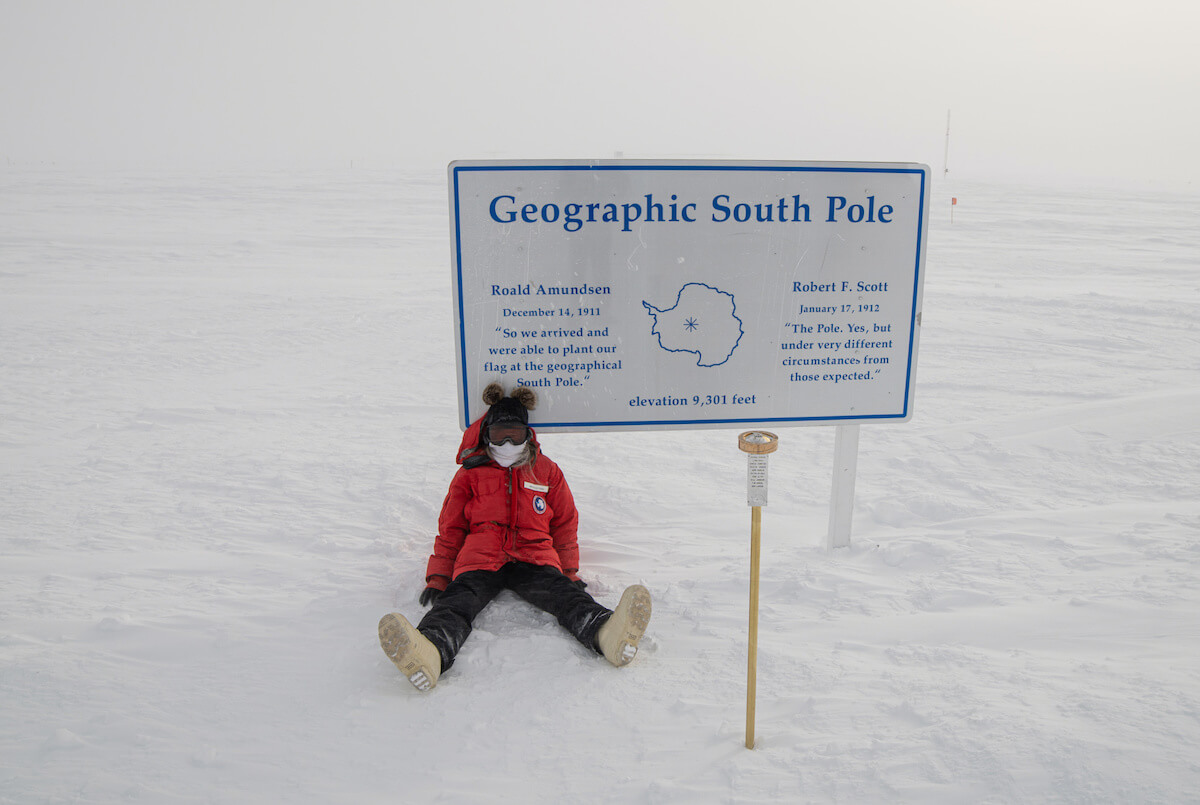
The Geographic South Pole is the southernmost point on Earth, located at 90° South.
Every direction from this point is north.
This pole marker is located to the side of the station and is adjusted by approximately 10 meters (33 feet) every year on January 1st to compensate for the shifting polar ice sheet that covers Antarctica.
Because of the South Pole’s unique location, circling the Geographic South Pole means visitors can go through 24 time zones in a matter of seconds.
Near the South Pole Station, there is also a ceremonial pole marker that is used for photo opportunities.
The Ceremonial South Pole is marked by a silver ball on top of a striped red and white pole, and surrounded by the flags of the original 12 countries that signed the Antarctic Treaty in 1959.
Fun Fact: Every Christmas, the station hosts a “Race Around the World” fun run in which participants complete an approximately two-mile loop around the Geographic South Pole.
What is Life Like at the South Pole?
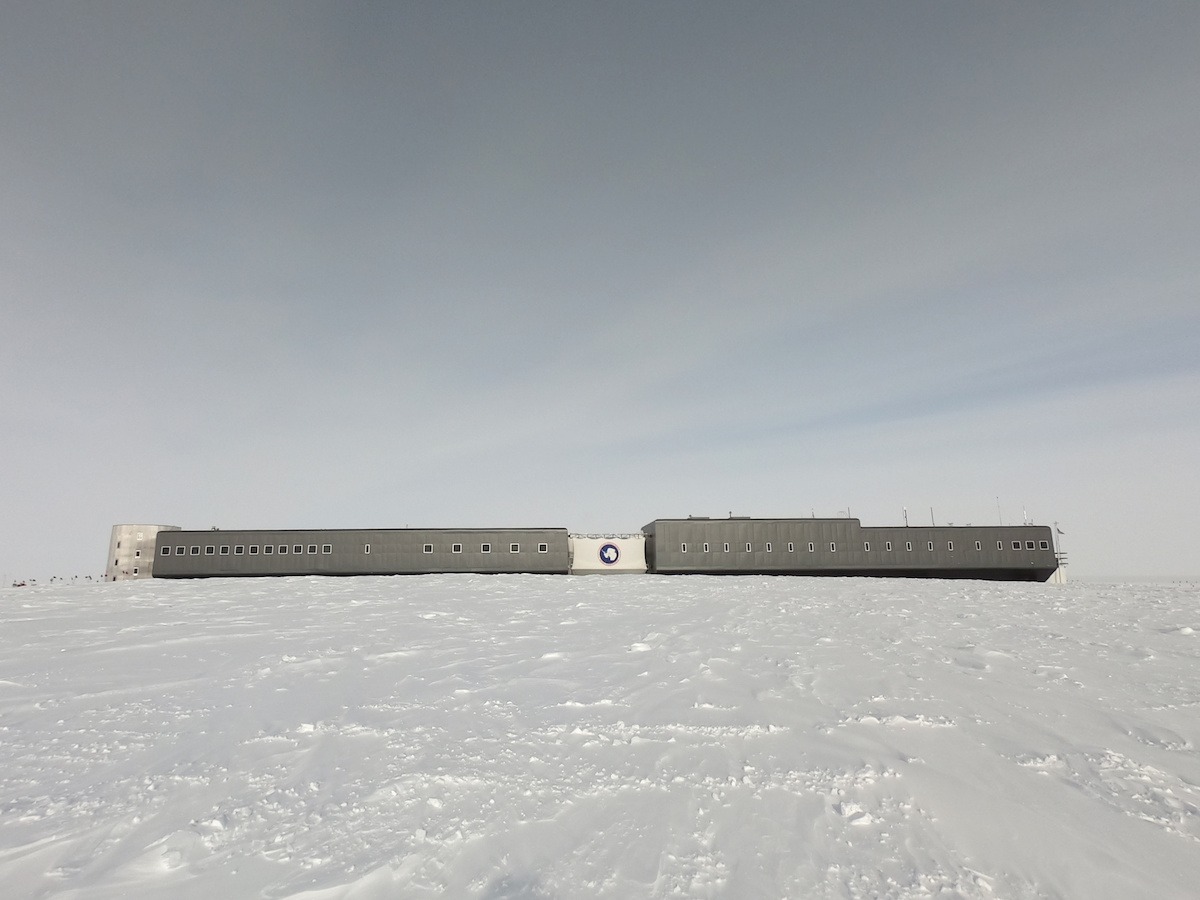
If you think about McMurdo being like a small mining town, then life at the South Pole is similar to living in a space station, but on ice.
An ice station, if you will.
Most of life at the South Pole takes place within the elevated station.
Here you’ll find basic facilities such as living quarters, dining room, lounges, gym, laundry room, and offices.
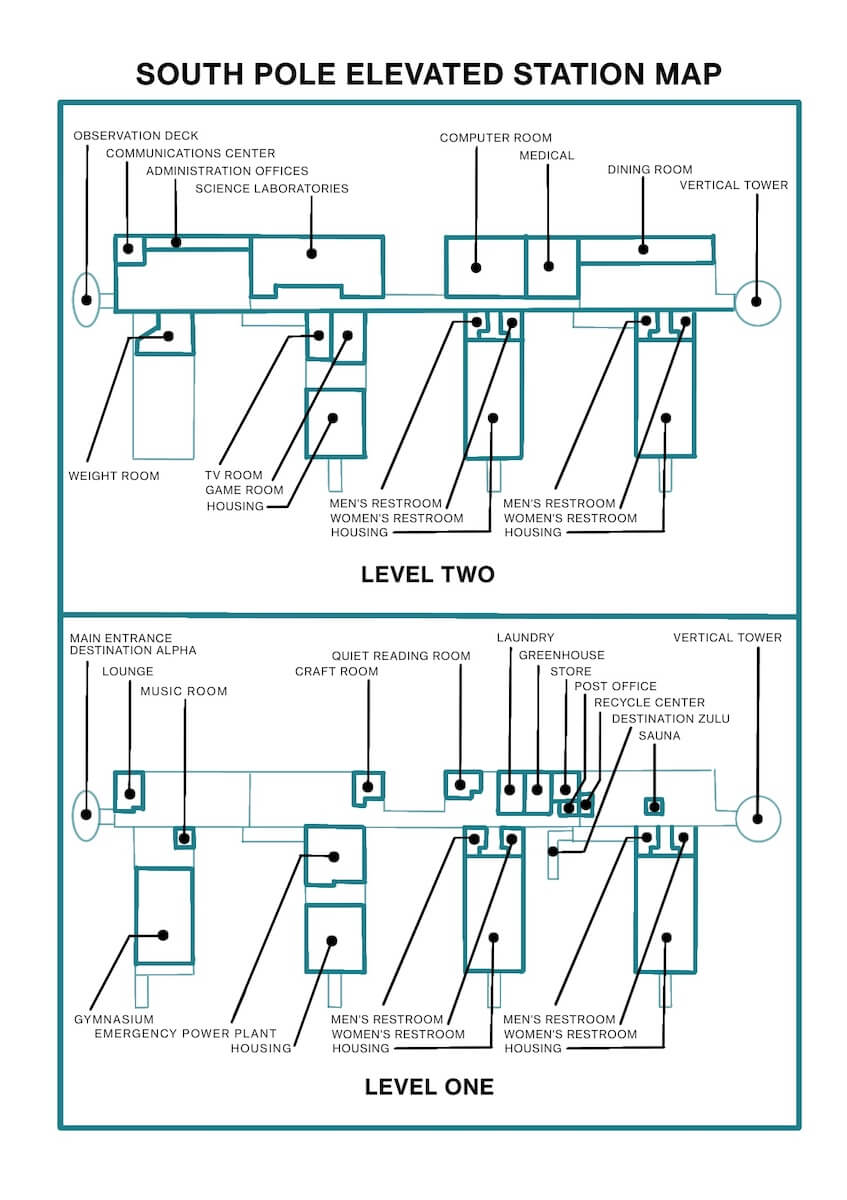
Because it’s such a harsh environment (more on the weather later) and there’s not really a whole lot to do or see outside, Amundsen-Scott South Pole Station comes with a few amenities that make life for the community a little more enjoyable.
These include a sauna and hydroponic greenhouse, the latter of which is a rarity to anyone familiar with life (or lack thereof) in Antarctica.

Related: 20 Things You Didn’t Know About Life at McMurdo Station, Antarctica
Work at the South Pole
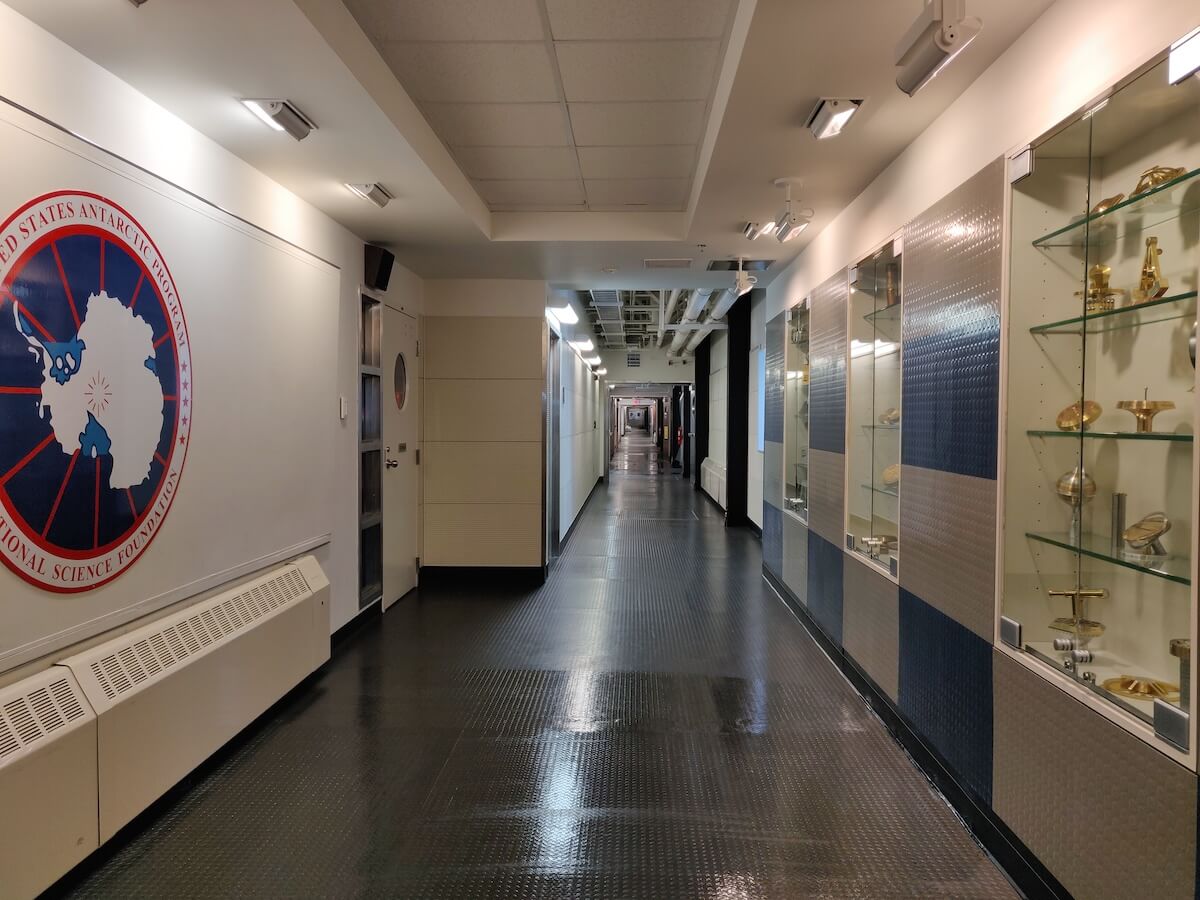
Just like the other U.S. Antarctic Stations, everyone at the South Pole works a minimum of 54 hours a week, six days a week.
The majority of personnel have Sundays off.
Similar to other stations on the “ice” (a common word used for Antarctica by those who work there), the South Pole has a position for any job necessary to keep the little ice station functioning year round.
(Yes, you can get paid to live in Antarctica .)
These positions include kitchen staff, mechanics, equipment operators, electricians, plumbers, and more.
All of these personnel are referred to as support staff, and they ensure that the station continues to run smoothly so that scientists can continue advancing their research.
Related: How to Get Paid to Travel to Every Continent (Yes, Even Antarctica)
How Hard is it to Get a Job at the South Pole?

The short answer is if you’ve never worked on the ice before, getting a job at the South Pole Station is much more challenging than getting a contract at McMurdo Station .
This is because Pole has a much smaller population, which means fewer personnel in each department (sometimes there’s just one role per department) and thus placements are much more coveted.
Personnel will usually have to work their way up to a Pole contract, putting in ice time and becoming experienced enough in their field.
That’s not to say it’s impossible to get a job at the South Pole as a new hire; it certainly happens every year.
However, many Polies previously worked one or more seasons in McMurdo before they landed a contract at the South Pole.
Science at the South Pole
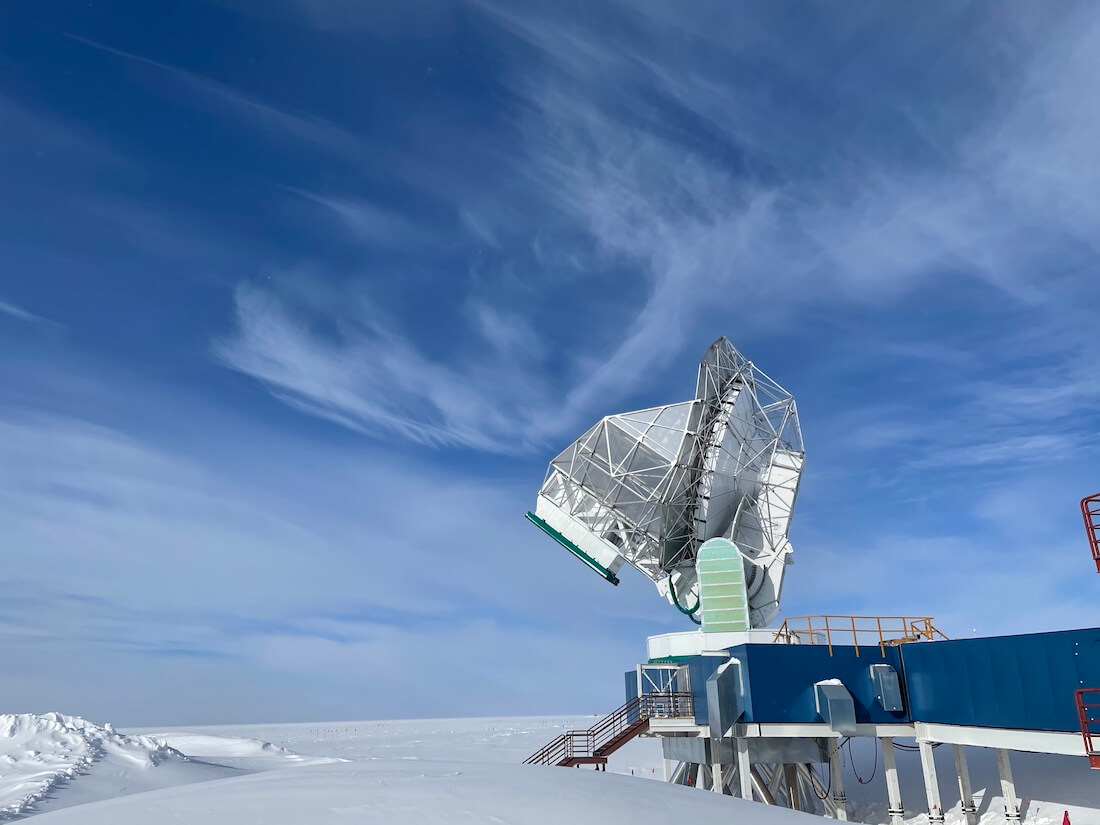
Because of the South Pole’s high altitude, low temperature, and low humidity, it’s the perfect place for research in a number of fields to take place.
This includes glaciology, geophysics, biology, astrophysics, astronomy, and meteorology.
From capturing the historic first image of the Milky Way’s supermassive black hole to even providing insight into how the universe was created, science at the South Pole provides valuable data that is unattainable anywhere else on Earth.
Much of the research takes place in lab facilities outside of the elevated station in two designated areas, the Clean Air Sector and Dark Sector.
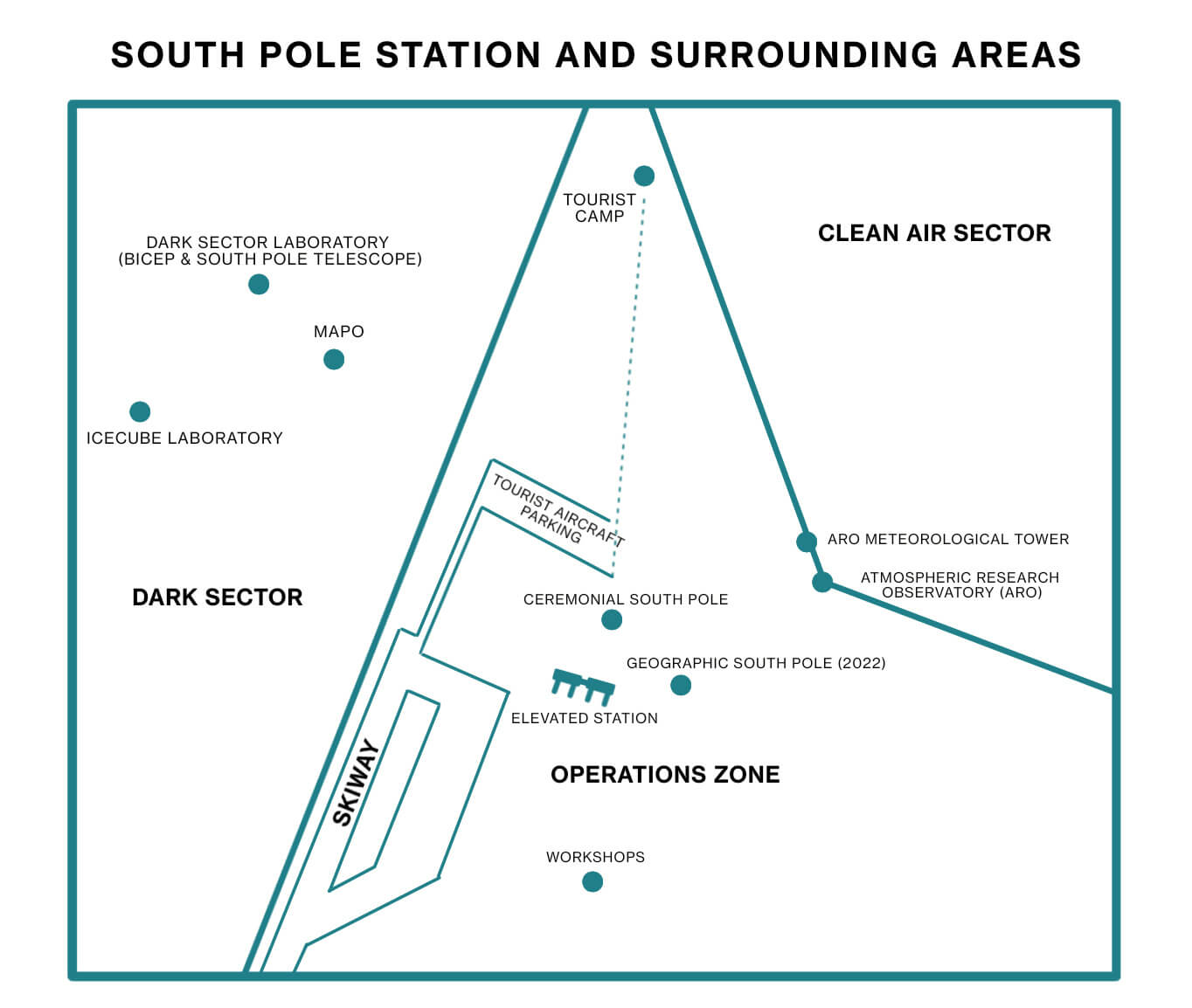
These sectors are sensitive and can be affected by light, cell phone or radio signals, and general air pollution.
This means vehicles aren’t allowed into the Clean Air Sector and only red lights are used around South Pole Station’s exterior during the 24 hours of darkness in the winter.
Getting to the South Pole
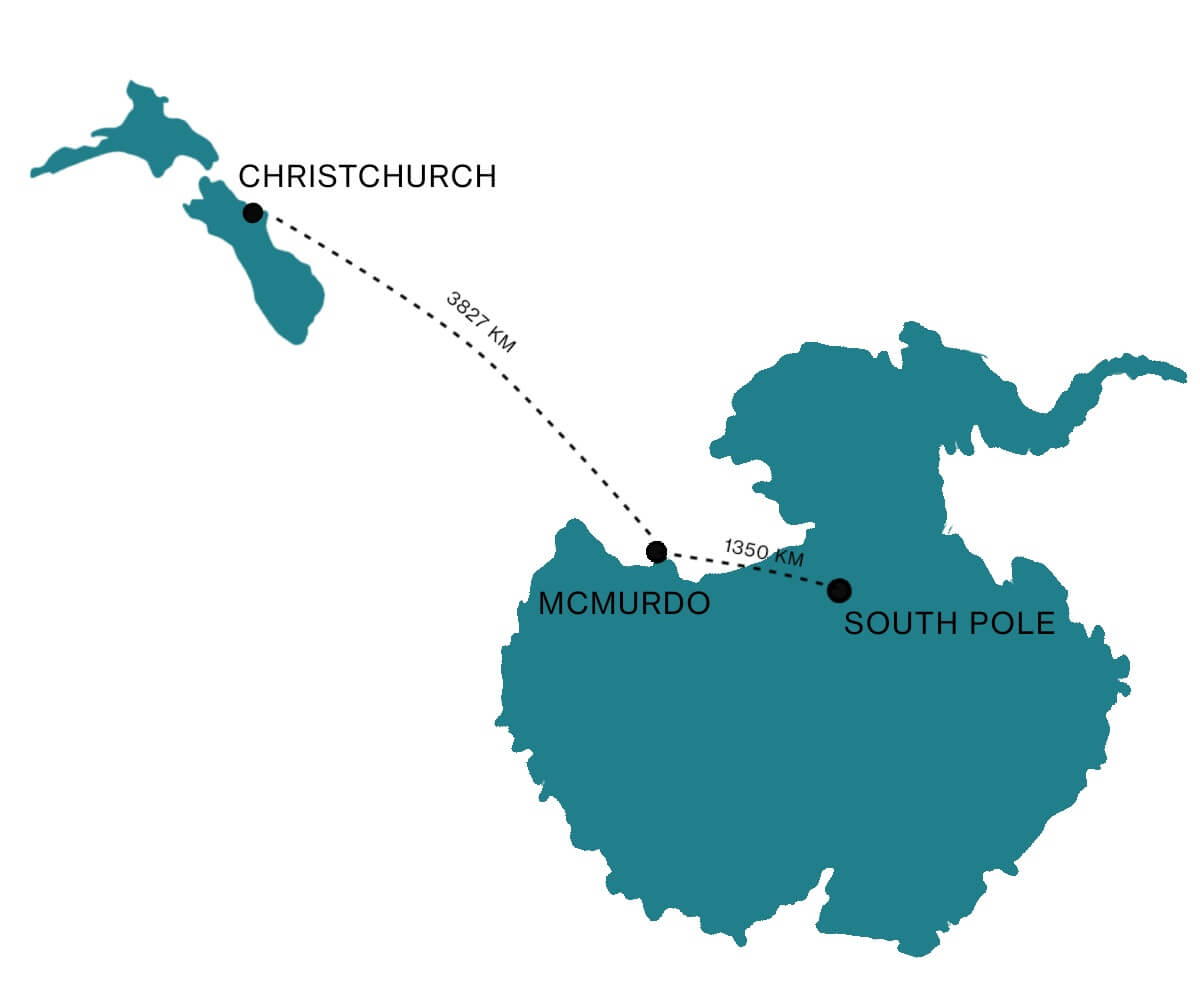
Because it’s one of the most remote locations in the world, getting to the South Pole isn’t as easy as finding a flight on Expedia.
The typical itinerary for reaching the station goes as follows:
1. Commercial flight to Christchurch, New Zealand
Christchurch is the U.S. Antarctic Program’s gateway city for McMurdo and South Pole Stations.
2. Charter flight to McMurdo Station (3,827 km/2,378 mi)
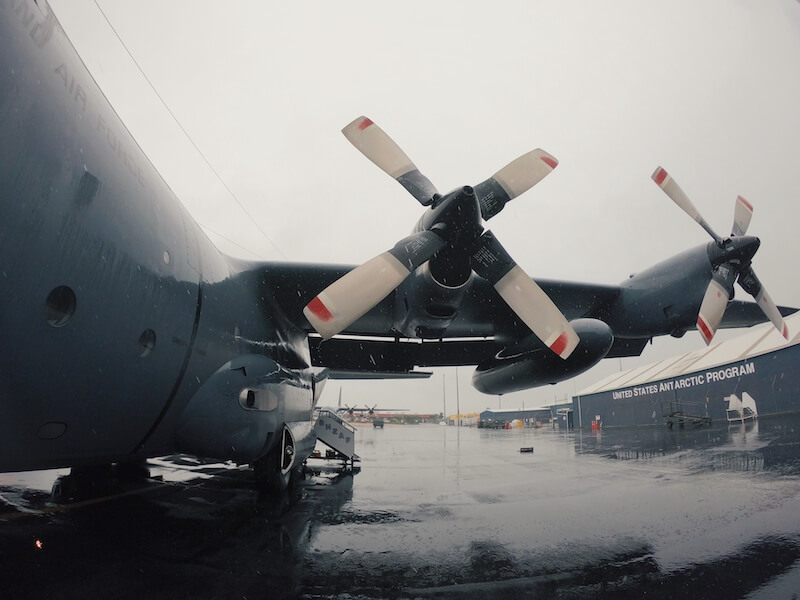
McMurdo Station is the largest station in Antarctica. This flight is also referred to in the USAP program as the “ice flight.”
Types of planes used:
- United States Air Force C-17 Globemaster III
- New York Air National Guard or Royal New Zealand Air Force LC-130 Hercules
- Royal New Zealand Air Force Boeing 757
- Skytraders Airbus A319
3. Charter flight to Amundsen-Scott South Pole Station (1,350 km/839 mi)
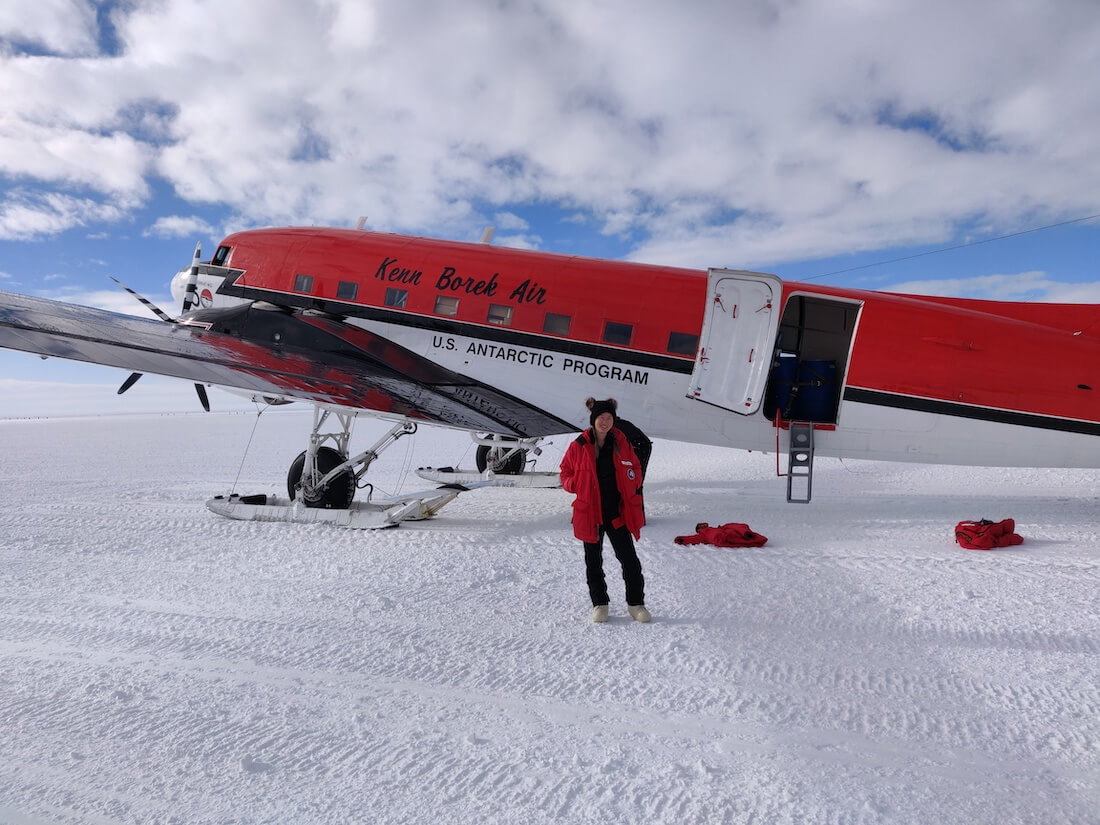
- New York Air National Guard LC-130 Hercules
- Kenn Borek Air Basler (modified DC-3)
Flights are only able to operate during the Pole summer season, which falls between late October to mid-February.
During the winter, the station closes and becomes self-sufficient.
Due to extreme cold and low visibility, planes are not able to safely reach the South Pole.
However, there have been a couple of exceptions with rare winter medical evacuations taking place in 2001 and 2016 .
What is it like living at Amundsen-Scott South Pole Station?
If I had to describe what it’s like based on my experiences, living at Amundsen-Scott South Pole Station is very similar to working and living on a cruise ship .
You live in a very big building in the middle of nowhere, you share living spaces, and because you’re isolated in a small community, you end up bonding with other members/Polies over silly events and parties created to pass the time.
Related: What Working on Cruise Ships is Really Like: Pros & Cons
View this post on Instagram A post shared by Michelle | Work + Travel (@wandereatwrite)
Living Accommodations
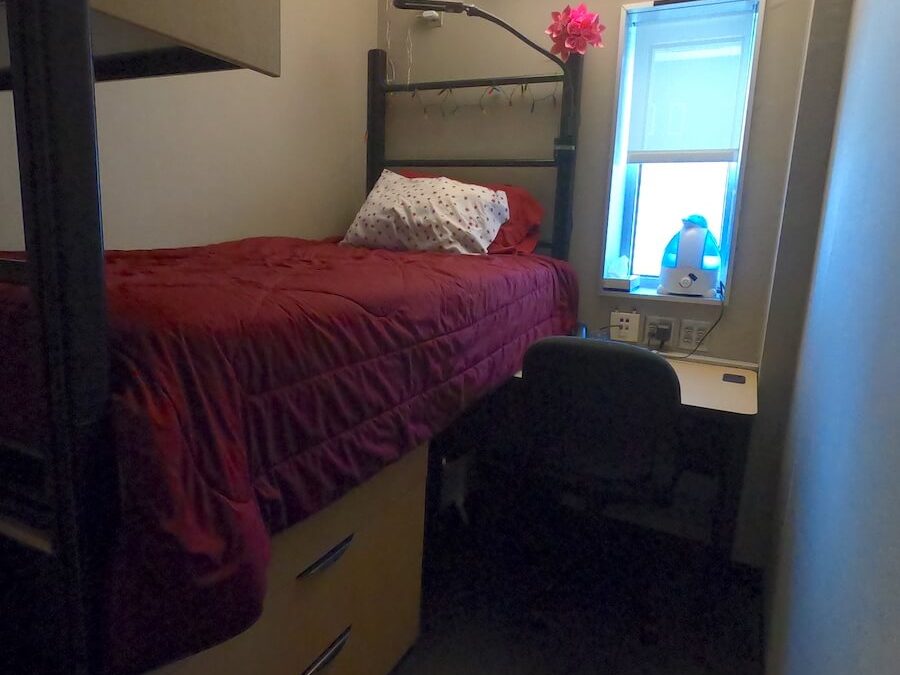
The majority of personnel live inside the elevated station in single or double rooms (the latter reserved for couples).
The single rooms are either 3×5 or 4×5 ceiling tiles large and consist of an extra-long twin bed, a wardrobe, a dresser, and a desk.
Bathrooms are dormitory style with one located outside each housing section (“berthing wing”).
The bathrooms include a couple of shower stalls as well as some shelves to store personal toiletries.
Water and Showers
Water is a precious resource at the South Pole.
Because the station has to produce its own water by melting and treating ice, every Polie is encouraged to reduce their water usage.
This means that most personnel are allowed two 2-minute showers per week, with the exception of certain departments such as kitchen staff or mechanics.
Lifestyle and Recreation

While life at McMurdo Station is a mix of college meets military base, life at the South Pole is a little slower and more laid back.
Think Spring Break in Cancun vs. a holiday in the Maldives.
But colder, obviously.
Although the Pole station is smaller than McMurdo and lacks an official bar, it does have a variety of facilities and activities available, including the following:
- Fitness: community-led exercise classes, weight room, gymnasium, climbing wall, South Pole Marathon, Race Around the World
- Leisure: Craft Room, Music Room, Sauna, Greenhouse, Game Room, Movie Lounge
- Social Events: board game night, trivia, open mic/talent shows, film/tv series showings, themed parties, Annual South Pole Head Weighing Contest
Below is a peek into what the inside of Amundsen-Scott South Pole Station looks like:
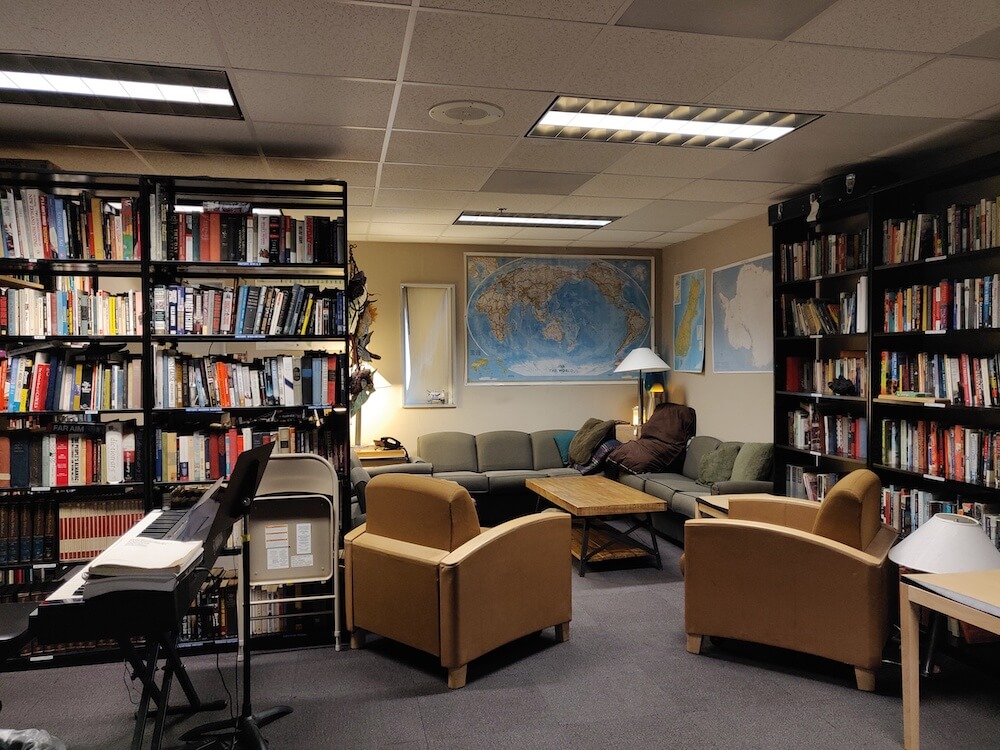
Community Responsibilities
Community involvement is big at Pole, and everyone is encouraged to help out where it’s needed.
Usually, this means keeping the dormitory bathrooms and showers clean.
Because there’s no full-time janitorial position, life at Amundsen-Scott South Pole Station means everyone is expected to take turns cleaning their bathroom once a week in what’s referred to as “house mouse.”
Community members can also volunteer their time in the dish pit as there is typically only one steward per shift washing all of the meal dishes from the community as well as the pots and pans used by the chefs.

During the holidays, there is a designated community cook day where the galley staff is given a day off in lieu of working on the station’s special days off (Thanksgiving, Christmas, New Year’s, etc.) and various departments sign up to cover shifts both in the kitchen and in the dish pit so that the station continues to be fed.
Population and Demographics
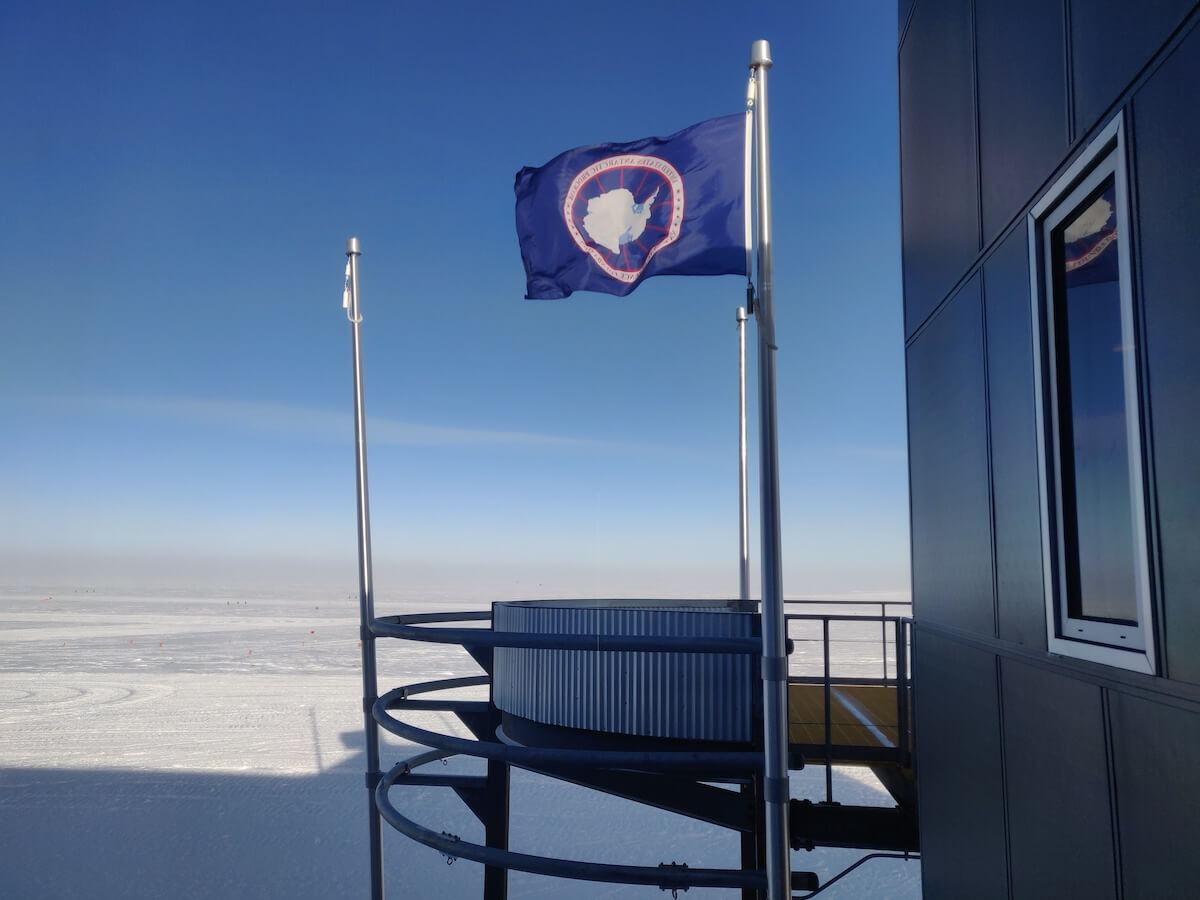
In a regular summer season, the Pole Station population can reach upwards of 150 people, while 40-50 scientists and support staff will keep the station running in the winter.
Like most Antarctic stations, the majority of personnel are men.
While the ratio fluctuates season to season, generally speaking the split is usually 80% men and 20% women.
At one point during my summer at Pole, I was one of 15 women among a station population of roughly 80 people (give or take).
Internet and Communication
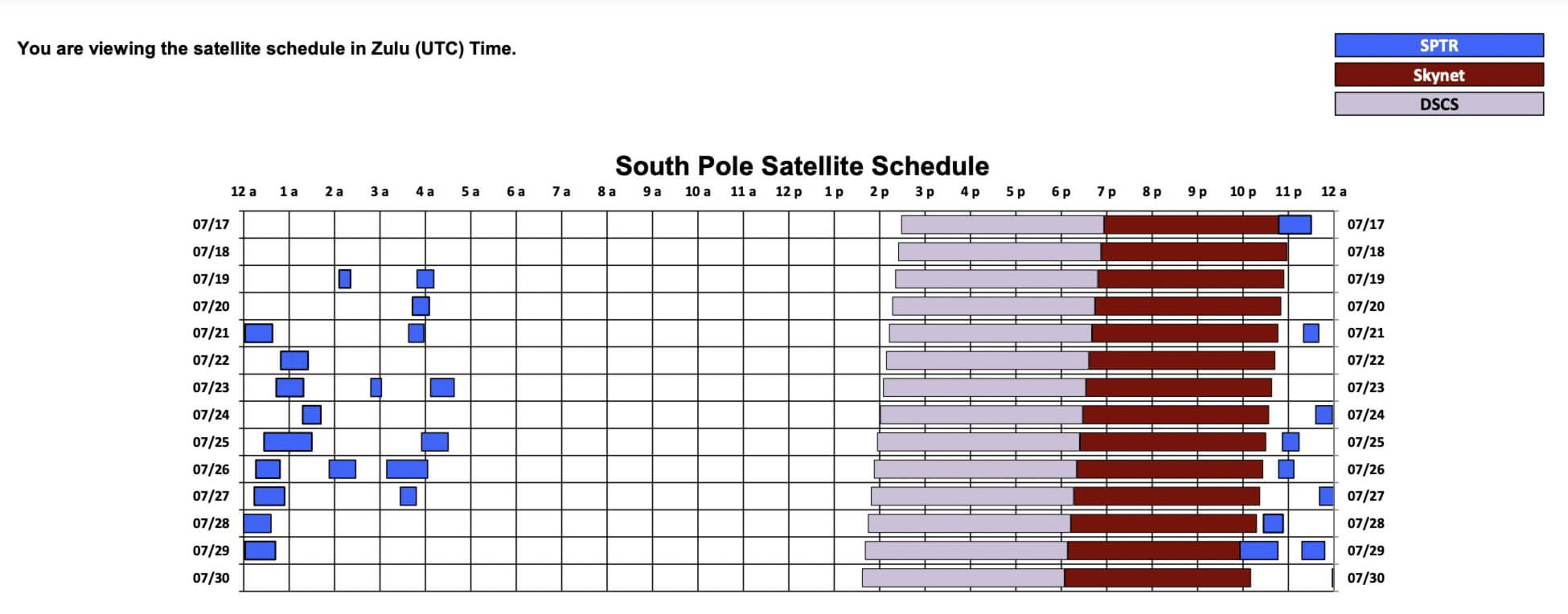
Unlike McMurdo Station, South Pole Station does not have regular internet access.
Pole relies on satellites for outside communication.
This means that the station only has decent internet for 4-6 hours a day.
Some days there is technically up to 10 hours of access possible, but the third satellite, SkyNet, is often too slow to use.
Because of the satellite’s orientation to Earth, internet access begins 4 minutes later everyday.
At the start of the summer season, internet access will be available later in the night and by the end of the summer it will have moved to the middle of the afternoon.
Relying on satellites also means that regular phone calls and emails cannot be received or sent outside of satellite hours.
(Emergency phone calls can still be made using Iridium satellite phones.)
This can take some adjustment for those used to life in McMurdo where phone calls or email access is 24/7 (albeit slow or laggy).
You can find the weekly South Pole Station satellite service schedule here .

The South Pole Dining Room offers three hot meals a day Monday- Saturday with an added Brunch meal on Sunday in the summer.
The kitchen typically runs on a 35-day menu cycle with popular dishes and items recurring more frequently.
Meals are often themed for cohesiveness, such as Asian fusion lunches or steak night.
There are always fresh baked goods (breads and desserts) available for each meal as well as vegetarian/vegan items.
Because South Pole Station has its own greenhouse, fresh greens may also be available year-round depending on the harvest.
Otherwise, Pole is completely dependent on resupply flights from McMurdo Station.
Special meals are prepared for the holidays (Thanksgiving, Christmas, New Year’s, Midwinter Dinner, etc.) and there is also a grab-and-go fridge available 24/7 with leftovers for community members to help themselves to.
There is none.
Unlike McMurdo and the Antarctic Peninsula, Amundsen-Scott South Pole Station is, well, as south as it gets and there’s no chance for natural wildlife to survive there.
No seals, no whales, no penguins, and no skua— typically, although one wayward skua did make it all the way to Pole once.
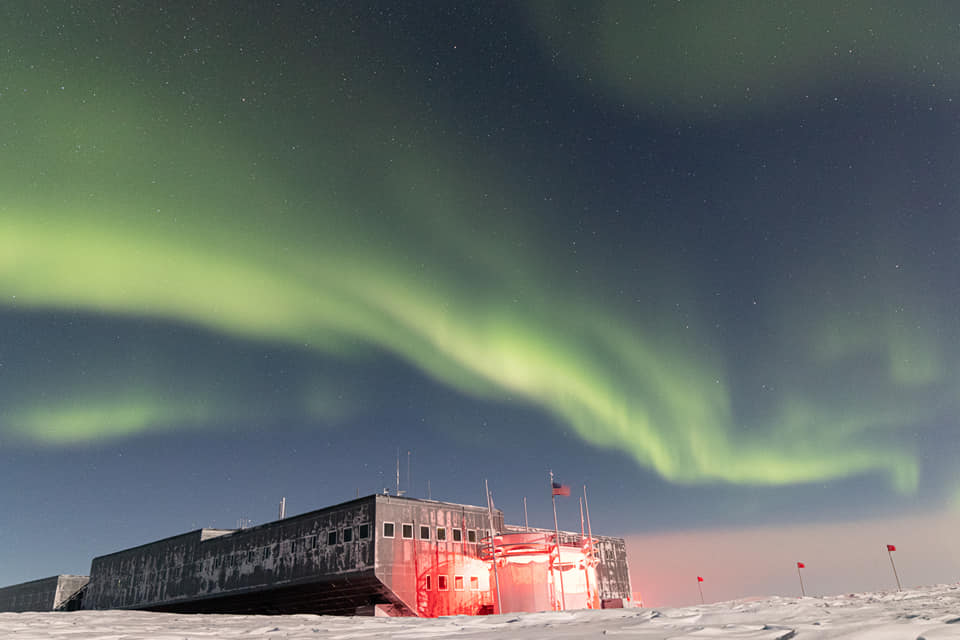
The South Pole experiences 24 hours of sunlight between November and February (austral summer).
After the sun sets on March 23, Pole experiences twilight throughout April until approximately May 10– the first day of night and 24 hours of darkness.
Amundsen-Scott frequently sees bright auroras ( Southern Lights ) during the winter due to its location in the auroral zone and the absence of light pollution.
The light begins to return in August and the sun returns in late September.
Related: Antarctica Northern Lights & Southern Lights Guide 2023
Weather and Climate
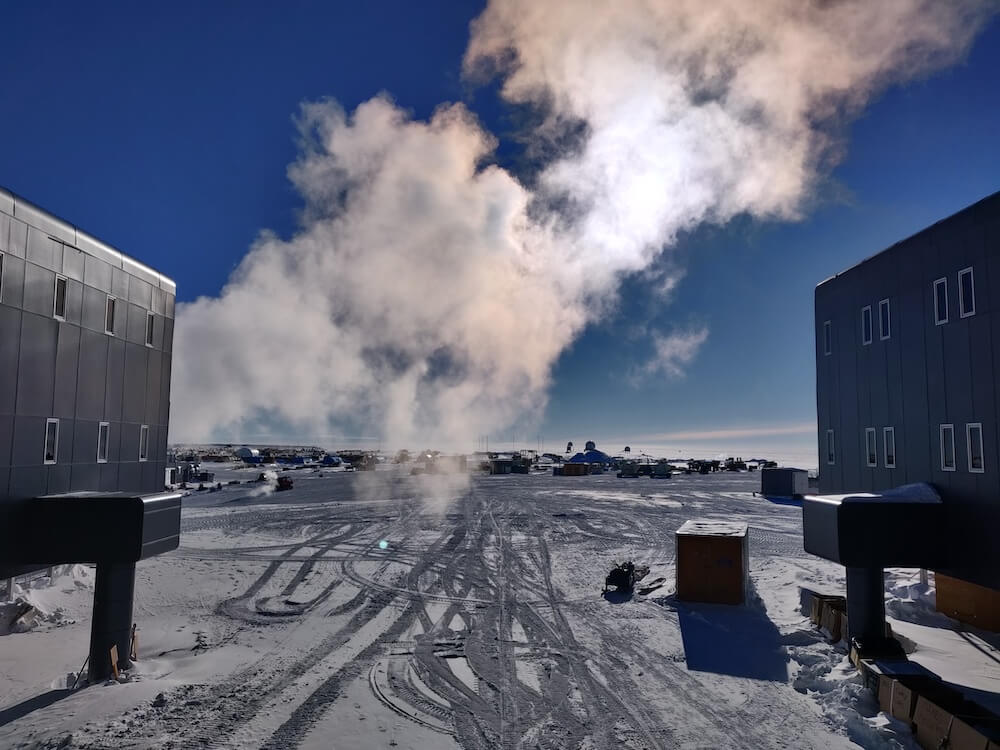
So how cold does the South Pole get?
In the austral summer, the average temperature at South Pole Station is approximately -18°F (-28°C) and -76°F (-60°C) in the winter.
The warmest South Pole has ever been was 9.9°F (-12.3°C) and the coldest was -117°F (-82.8°C).
Elevation and Humidity
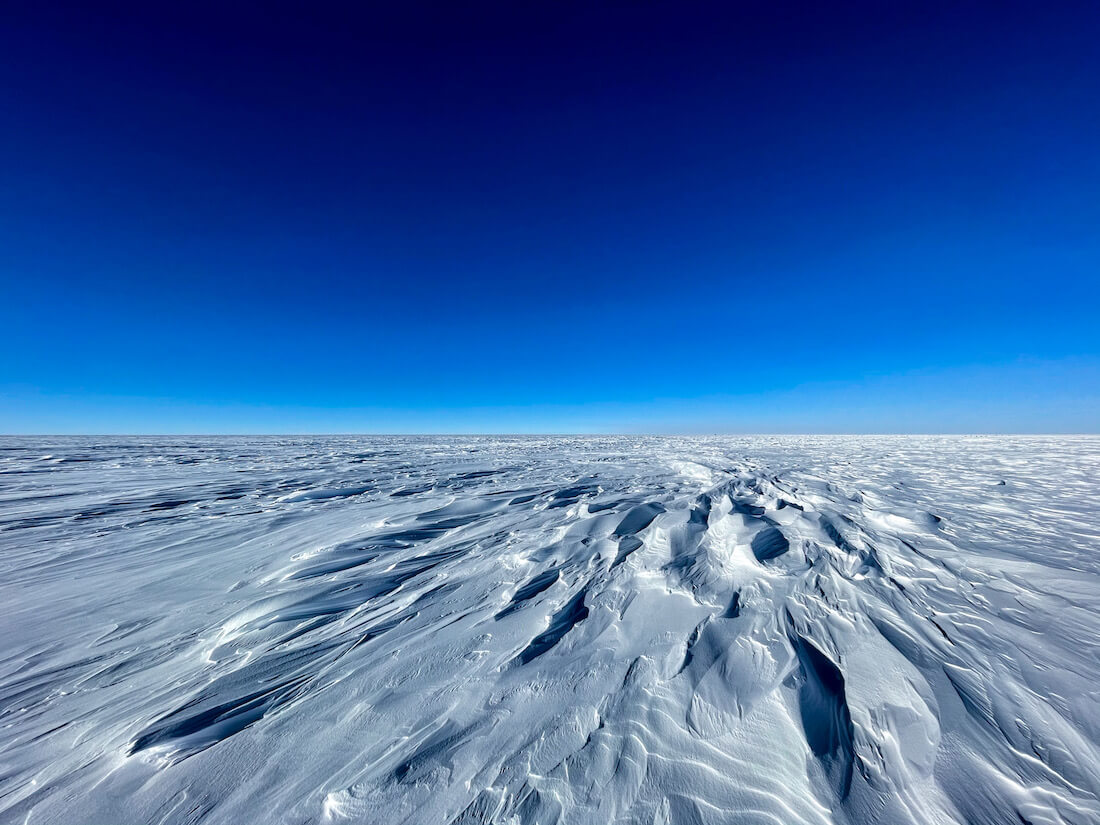
Amundsen-Scott South Pole Station sits at an elevation of roughly 2835 meters (9,300 ft).
Humidity is nearly nonexistent at Pole, making it a polar desert.
The air is both extremely thin and dry.
The harsh high-altitude environment can take a toll on your health: small cuts take weeks to heal, climbing a flight of stairs knocks the wind out of you, and minor body aches have you feeling twenty years older.
I also woke up nearly every morning with dried blood in my nose and went through a box of tissues weekly.
It can be rough.
Can You Visit the South Pole as a Tourist?
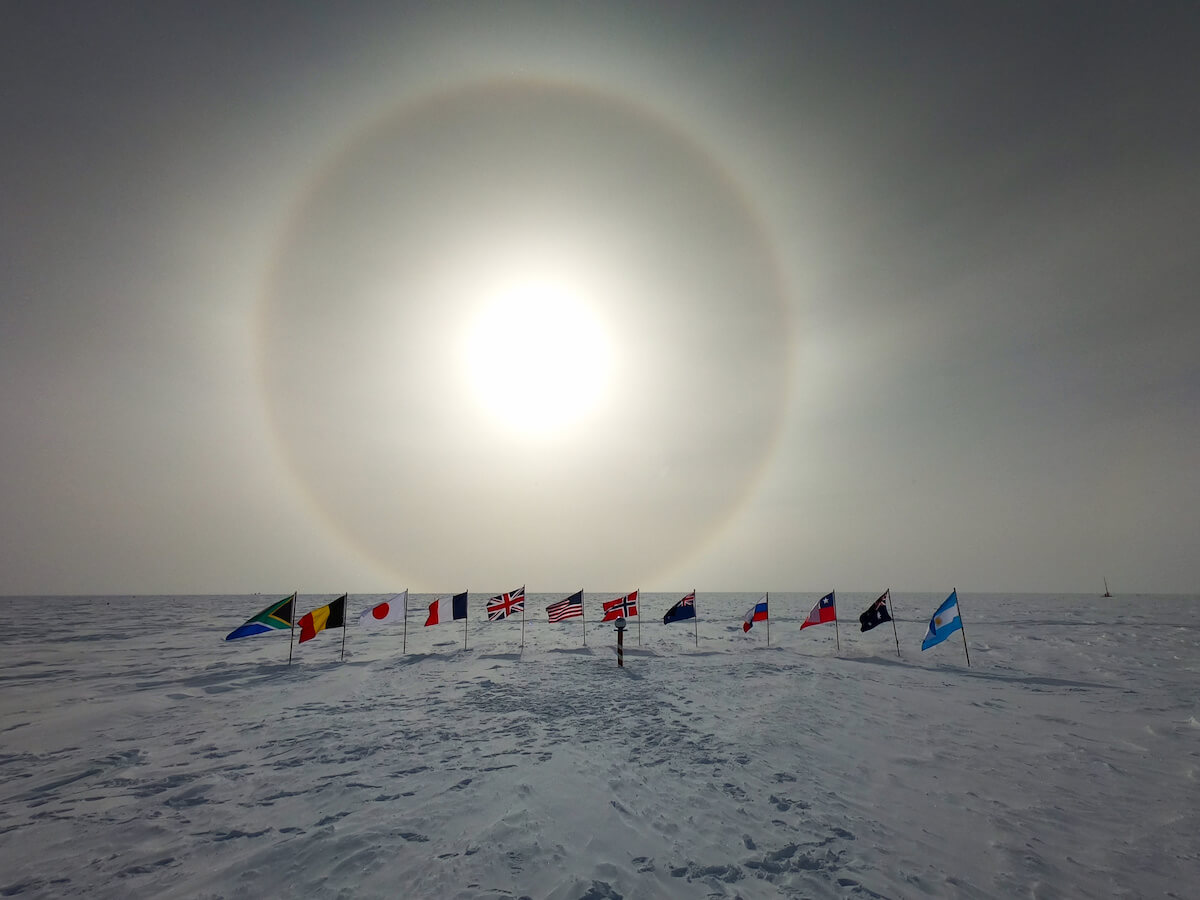
Yes— if you have enough money.
Most people who go to the Amundsen-Scott South Pole Station for free or as part of their job are either researchers, support staff, or distinguished visitors (program representatives, government officials, etc.)
However, if you don’t fall under one of these categories, it’s still possible to visit the South Pole as a tourist.
There are several luxury expedition tour companies that take clients to various sightseeing spots around Antarctica, including a quick trip to the South Pole.
The visit to the Pole could last anywhere from just an hour or two to camping overnight.
Depending on the company and tour package, these excursions can cost between USD 51,000 – 250,000 per person.
Final Thoughts: Life at Amundsen-Scott South Pole
While life at the South Pole can be hard on the mind, body, and soul, I’d still highly encourage anyone who has the opportunity to work at Pole to do so.
After all, it’s such a unique experience that many people are willing to pay upwards of a quarter of a million dollars to merely spend a few hours visiting where we get paid to live.
Additional Antarctica Posts:
- How I Got Paid to Live in Antarctica: FAQ About Working on the Ice
- 20 Things You Didn’t Know About Life at McMurdo Station, Antarctica
- McMurdo Station Packing List for Working in Antarctica
- How to Get Paid to Travel to Every Continent (Yes, Even Antarctica)
- Antarctica Northern Lights & Southern Lights Guide 2023
Save and Pin
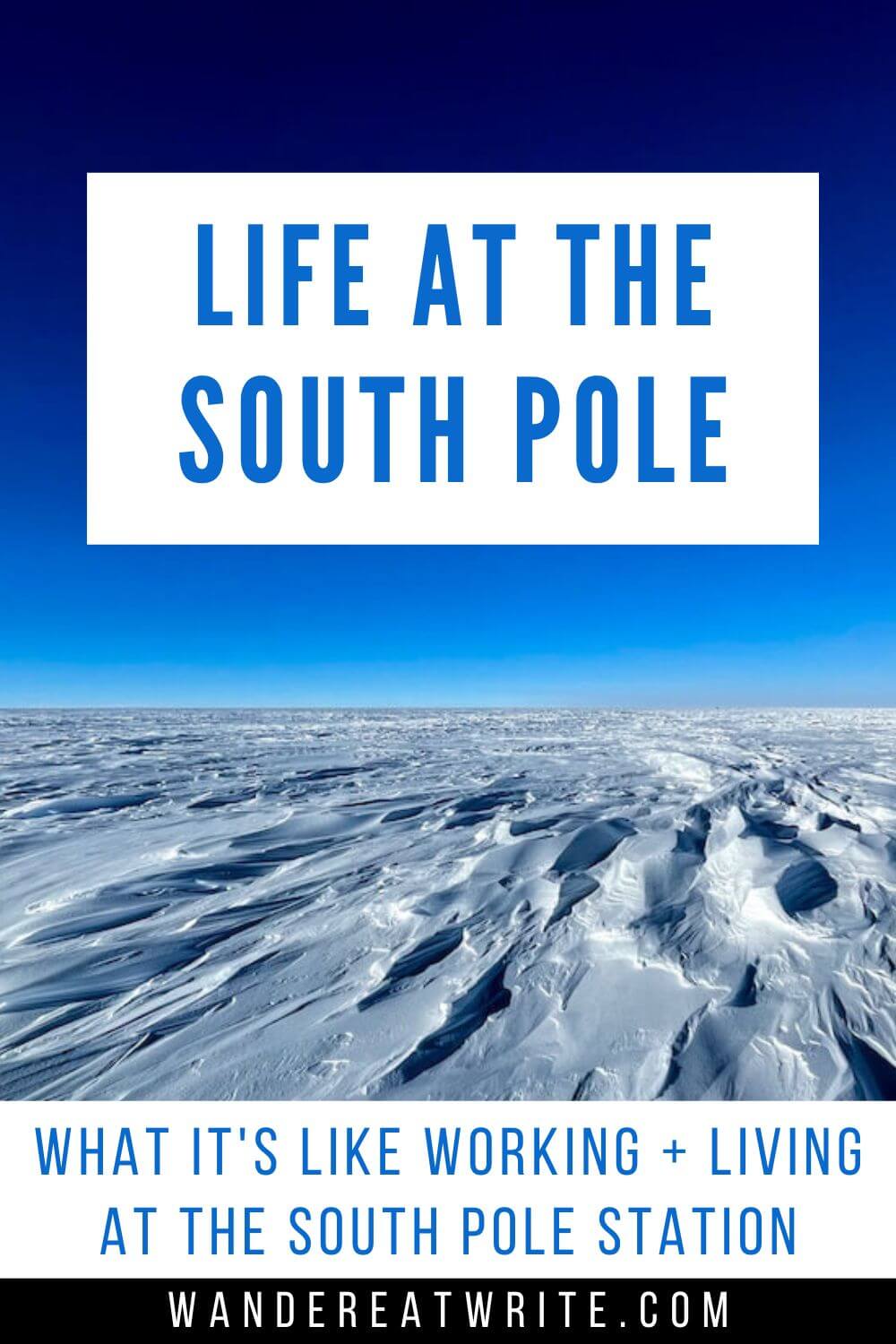
Michelle is a freelance writer who has traveled to all seven continents and 60+ countries through various forms of employment. Over the last ten years, she’s worked as an ESL teacher in Japan, a youth counselor aboard cruise ships, and a hospitality manager in Antarctica.
Related posts
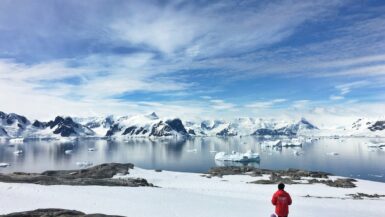
17 BEST Boots for Antarctica: Expert Tips from an Ice Veteran
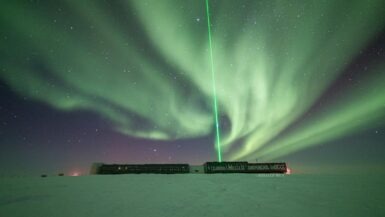
Antarctica Northern Lights & Southern Lights Guide 2023
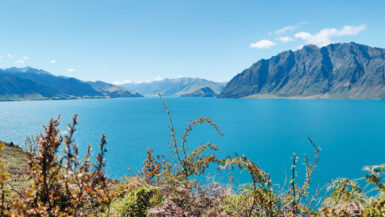
31 BEST Jobs That Travel (No Experience Necessary) 2023
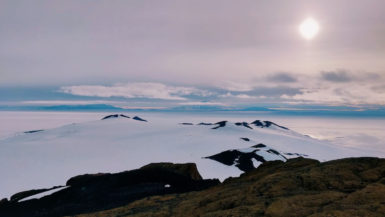
Working in Antarctica: Blaster Garry Rex | Stories From the Ice
Leave a reply cancel reply.
Your email address will not be published. Required fields are marked *
Wow, what a great guide! Thank you so much for sharing this :)
I’m always so fascinated by your stories and this one was no exception! I can’t imagine how physically and mentally challenging it must be to live here but like you said, it’s such an incredible and rare experience that sounds totally worth it at the same time! Also, this is just so wild: “visitors can go through 24 time zones in a matter of seconds.” Thanks for sharing! Xx Sara
Thanks, Sara! Definitely was an adventure for the books :)
Wow! This is fascinating! Thank you so much for sharing your experience.
Wow! What an amazing experience. I found this fascinating to read, I’ve always wondered what it was like to live and work at the South Pole. It looks challenging, but it also looks amazing. You’ve inspired me to start looking at whether it would be possible for me to go!
It’s definitely possible! You can take a look at my guide here on how to get a job in Antarctica :)
What an amazing experience. Thanks for sharing. I’m impressed by how nice the inside of the facility is. The library is great!
Thanks for the great info!! My son heads out next week! We’re so excited (and anxious).
You have an incredible talent for writing simply but extremely clearly.
Thank you so much for sharing your adventures and stay safe.
Privacy Overview
Privacy Policy - Terms and Conditions
P olar D ream T ravel

Home | Antarctica | South Pole & Antarctica Inland
Quick facts about antarctica inland & south pole.
Antarctica is the fifth largest continent with an area of 5.5 million square miles. Most of Antarctica is a polar desert with annual precipitation of 200 mm along the coast and far less inland. The only residents of Antarctica are those who live throughout the year at research stations scattered across the continent.
Antarctica is divided in two by Trans-antarctic Mountains close to the neck between the Ross Sea and the Weddell Sea. The portion west of the Weddell Sea and east of the Ross Sea is called West Antarctica and the reminder East Antarctica.
The highest peak in Antarctica, is Vinson Massif at 4,892 m (16,050 ft) which is located in the Ellsworth Mountains (West Antarctica). Lake Vostok is the largest sub-glacial lakes in Antarctica.
The South Pole, is also known as the Geographic South Pole or Terrestrial South Pole. It is the southernmost point of the surface of Earth. It is also the site of the United States Amundsen-Scott South Pole Station, which was established in 1956. The mean annual temperature at the South Pole is –49.5 °C (–57.1 °F).
While most of the Antarctica tourists head to the coastal Peninsula areas, there are tours available if you desire to visit the continent itself, including South Pole. Less than 2% of the total Antarctica visitors visit inland including South Pole. You will fly by airplanes from Punta Arenas (Chile) to Union Glacier or from Cape Town (South Africa) to Whichaway Camp. From there, you can either head to Mount Vinson Base Camp, South Pole Camp or Gould Bay camp during Emperor penguin breeding season (from Nov to early Dec).
Top 5 Reasons to visit Antarctica Inland & South Pole
The ultimate adventure to explore the most remote and least traveled continent on Earth
Walk in the footsteps of heroic explorers and meet fellow modern day adventurers
Fly to Emperor penguin colonies and witness new born baby penguins
Complete your own Antarctica checklist items (either South Pole, Mount Vinson or just visit Union Glacier and surroundings)
Totally remove yourself from daily routines and surrender yourself to the beauty of nature
Antarctica Inland Sites

6/7 Days Early Emperors

The Greatest Day in Antarctica

6/7 Days South Pole Flight Expedition

6 Days Antarctica Virgin Summit

7-9 Days Emperors and South Pole

9 Days Emperors Penguins Expedition

6/7 Days South Pole Overnight Expedition

9 Days Emperors and Explorers Expedition

5 Days Union Glacier Expedition

24 Days Ultimate South Pole, Emperor Penguins, Patagonia & Antarctica Peninsula
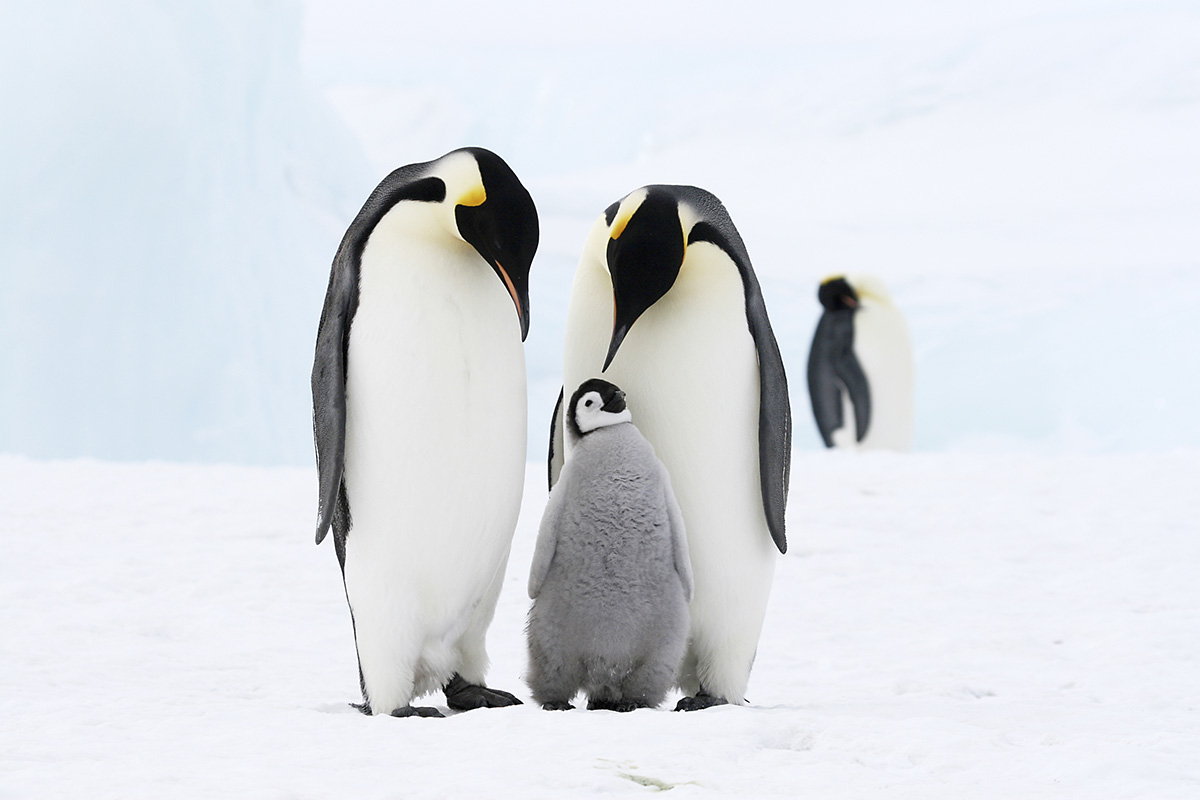
Journey to the South Pole: How to Travel to Antarctica
How to Travel to Antarctica is a question that sparks curiosity and adventure in many.
Visiting Antarctica , a continent that has seen few human footprints, is an exciting prospect.
Yet, traveling to Antarctica may seem daunting. After all, it's not your everyday vacation destination!
But here’s some good news: with careful planning and preparation, this dream journey can become a reality.
You might be wondering how feasible it really is for you to explore the icy wilderness of Antarctica?
Fret not! This guide will show you exactly how to travel to Antarctica , making what seems impossible entirely possible!

An Antarctic expedition cruise explores diverse wildlife, with zodiac landings, Antarctic exploration and charming English architecture.
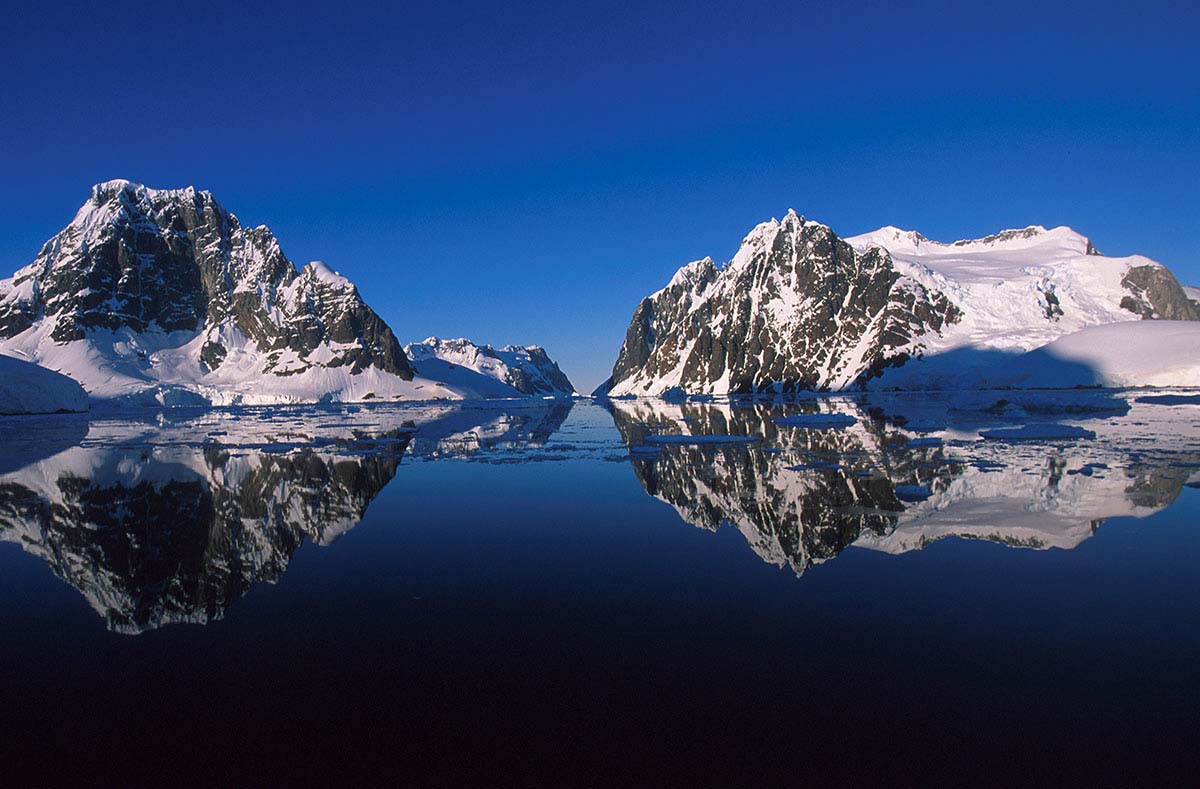
Set off from Punta Arenas, relish four days of Antarctic wilderness, and culminate with a scenic glacial hike and a tour in Ushuaia.
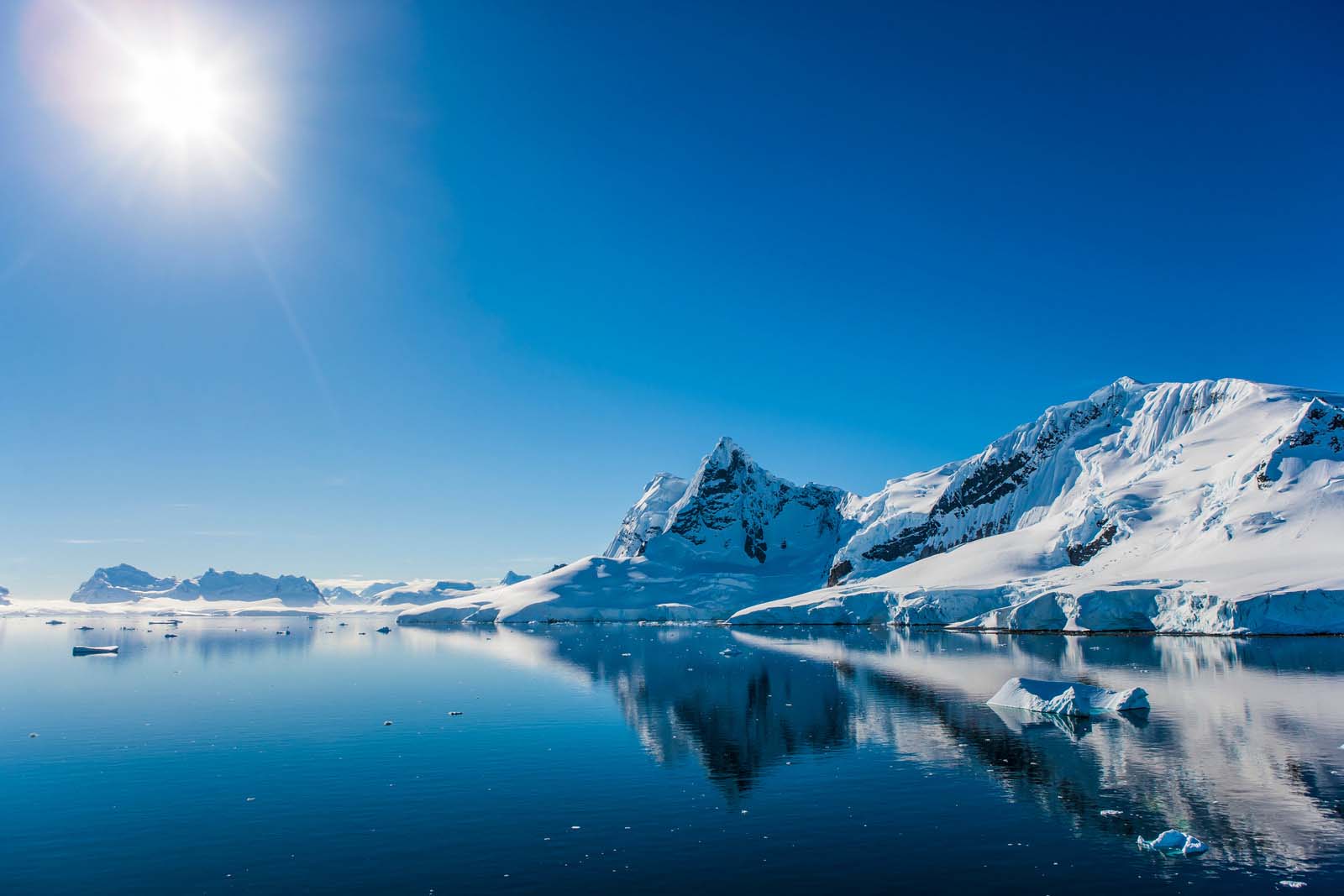
Embark on the Penguin Safari for an expedited journey to South Georgia Island.
Exploring Antarctica: An Overview
Unraveling the geography, diving into history, planning your trip to antarctica.
- Choosing The Best Time To Visit
- Deciding On Your Travel Style
- Selecting A Suitable Route For Your Journey
Embarking on the Adventure: Cruising to Antarctica
Cruise types: finding your perfect fit, your cruise experience unveiled, selecting your ideal journey, flying to antarctica, the fly-cruise option: a quick route to adventure, a few things to keep in mind when flying, luxury air cruises: soaring over the ice cap, what to do in antarctica, penguin safari and wildlife watching, kayaking and camping trips.
- Camping on Antartctica
Your Night Under The Stars
Tents and equipment, where to stay in antarctica, luxury lodges: comfort amidst ice, cruise ship cabins: your floating home, camping on ice floes: an unforgettable experience, making your trip memorable, capturing memories with photography, antarctica photography workshop, photography workshops led by experts, packing your gear for polar conditions, dive into adventure activities, faqs in relation to how to travel to antarctica, how to travel to antarctica, can i legally go to antarctica, how to visit antarctica responsibly.
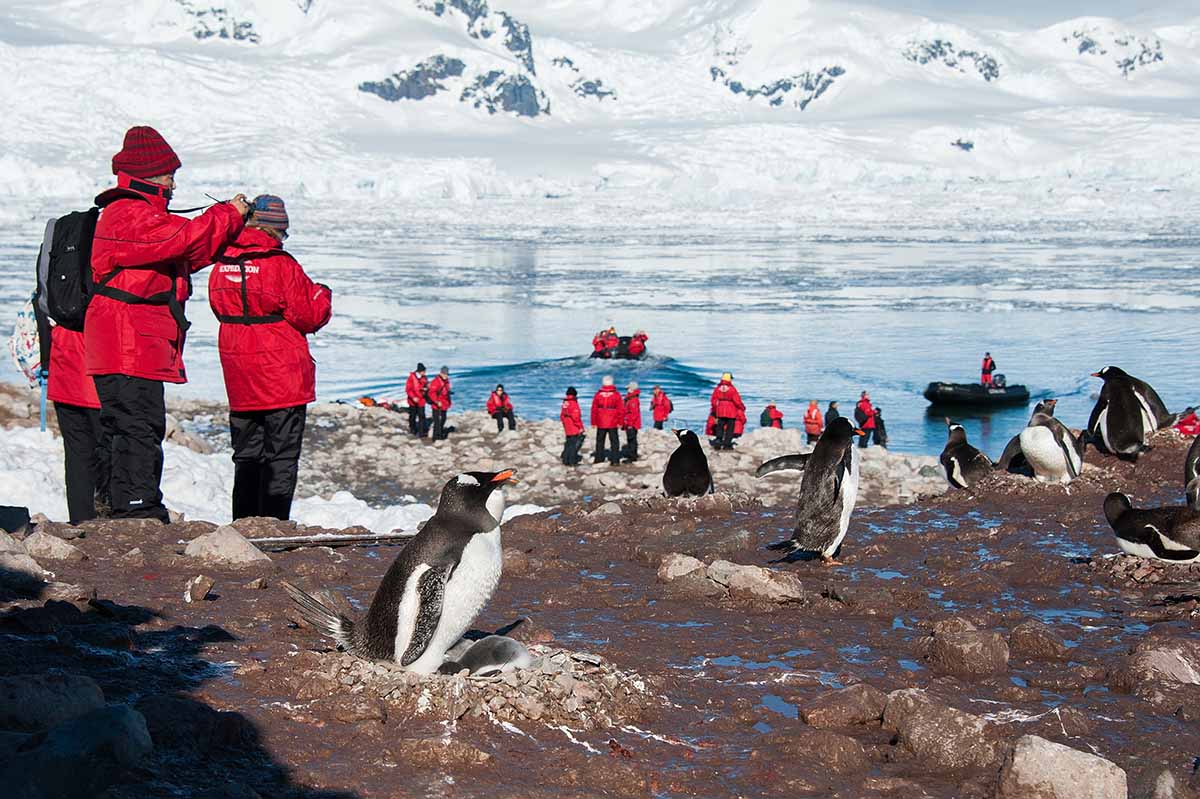
Learn how to travel to Antarctica , from planning your trip, choosing accommodations to exciting activities. Dive in now.
The enigmatic allure of Antarctica lies in its untouched, pristine beauty. The continent is a land of extremes - it's the coldest, driest, and windiest place on the planet. No other place on earth is like it.
Antarctica showcases breathtaking landscapes that are unparalleled anywhere else on earth. From towering icebergs dotting the Antarctic Peninsula to vast expanses of sea ice surrounding it, nature has sculpted masterpieces here.
Beyond mainland Antarctica lie remote islands like Diego Ramirez and Snow Hill Island - each offering unique exploration opportunities during your visit to this icy wonderland.
Your journey through time begins with tales from early expeditions by pioneers such as Roald Amundsen, which provide intriguing insights into human endurance against harsh conditions while visiting Antarctica. Read more about these explorers' adventures here.
Penguin Safari Epic: A Must-Do Activity
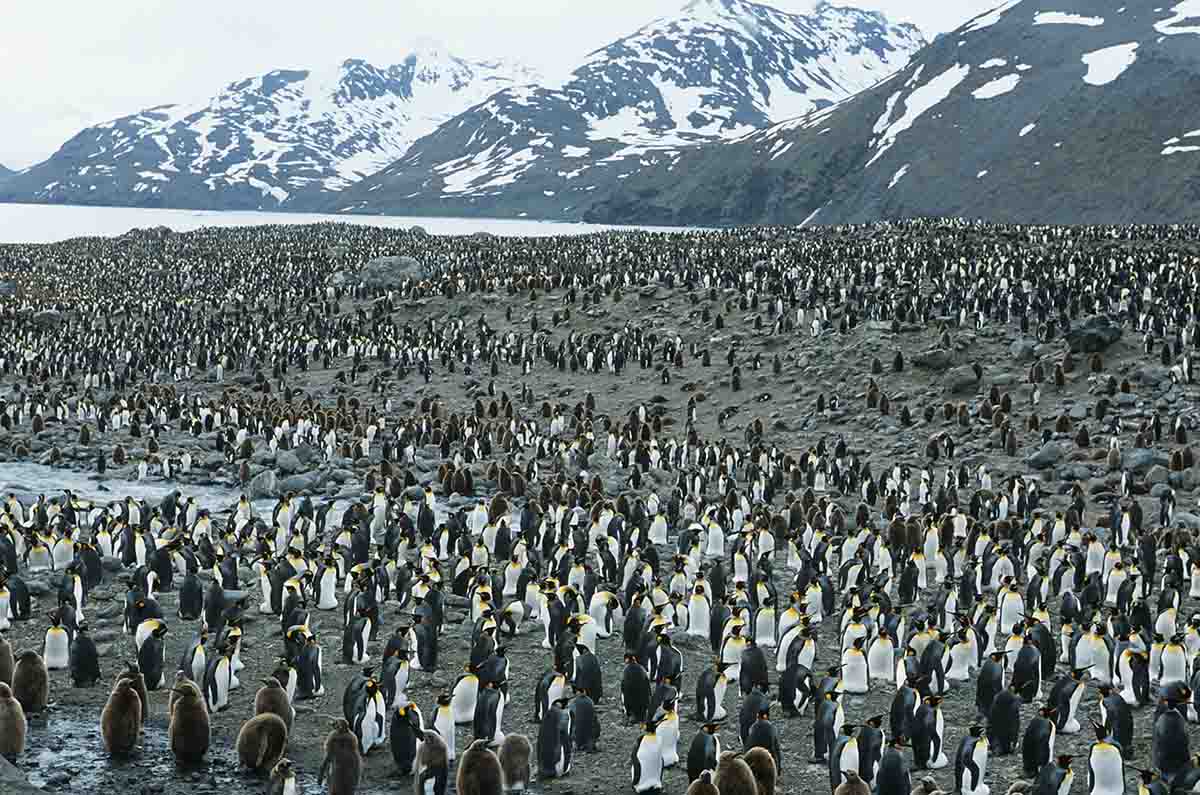
Remember, though; always respect wildlife and the environment since our small actions can have a significant impact on fragile ecosystems.
If photography interests you, then gear up for some spectacular shots. Penguin photography offers travelers an opportunity to capture thousands of penguins from several species in their natural habitat - a rare treat indeed.
- Embark on an extraordinary expedition to the South Pole, where the awe-inspiring Antarctic spring takes hold and blankets everything in a serene hush. This incredible adventure may take you beyond the mainland to explore the remote southernmost regions such as the south shetland Islands, south Georgia via the legendary Elephant, a route that was once fiercely pursued by numerous explorers including the legendary Shackleton.
So get ready... an unforgettable voyage filled with awe-inspiring vistas beckons
Key Takeaway:
Traveling to Antarctica offers a unique, awe-inspiring experience. From its untouched landscapes and historical tales of endurance to photography opportunities with penguins and respecting fragile ecosystems - it's an adventure like no other. So gear up for this unforgettable voyage.
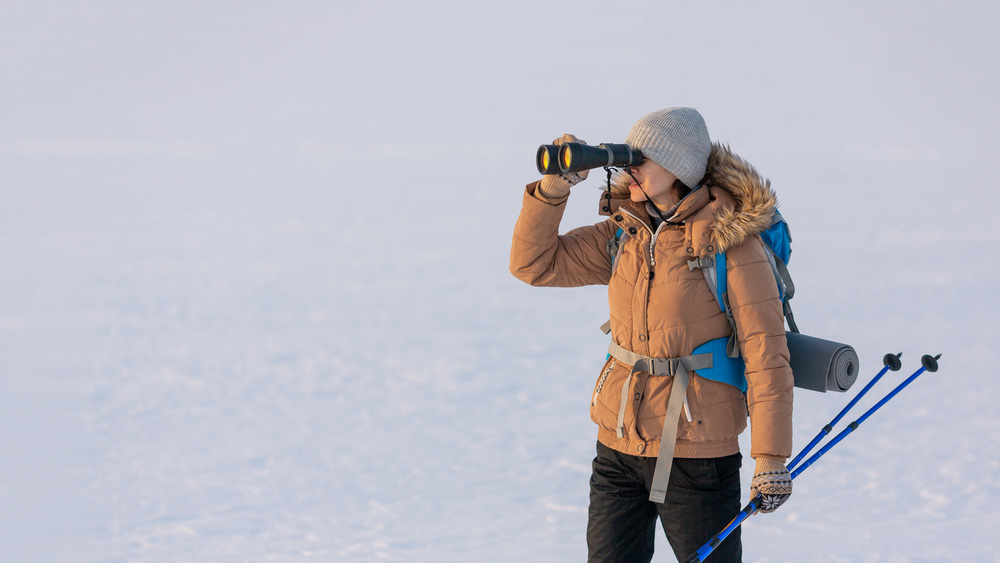
If you're thinking of venturing to Antarctica, there are several elements that require careful thought. From choosing the best time for your trip to deciding on how you want to travel and explore - every detail matters.
The following guide will help make planning this epic journey easier while ensuring a memorable experience in the Antarctic wilderness.
1. Choosing The Best Time To Visit
Your adventure begins with selecting when exactly you wish to set foot on this icy continent. Summer months from November through March provide milder weather conditions, making it an ideal period for most tourists who prefer up-close encounters with seals, penguins, and whales amidst temperatures reaching 20 degrees Fahrenheit at times.
If, however, witnessing the wonderfully powerful Antarctic autumn or experiencing sea ice adventures is what excites you more, then consider off-peak seasons. But do prepare yourself mentally for colder climates and possible changes in plans due to harsher environmental conditions.
2. Deciding On Your Travel Style
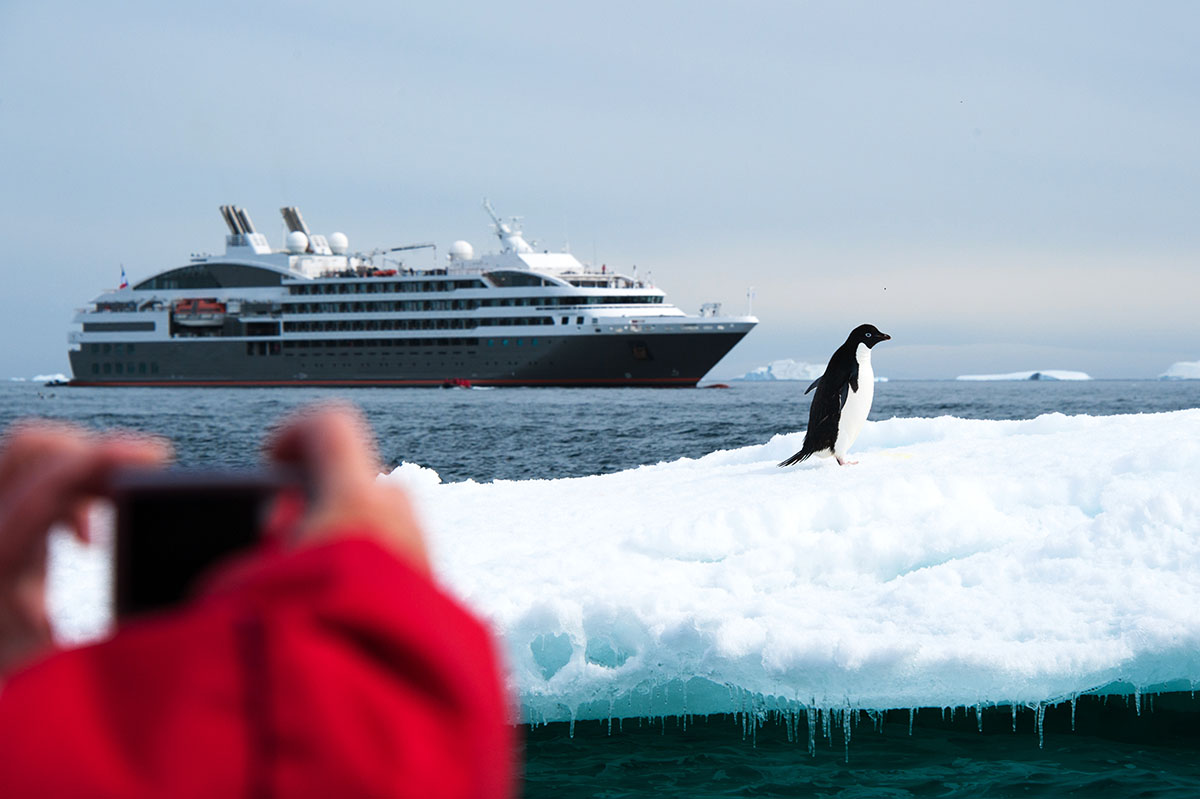
You must also decide how exactly you would like t o navigate around the vast expanses of Antarctica's pristine landscapes , depending upon personal preferences towards luxury experiences versus thrill-seeking adventures. This might involve kayaking amongst icebergs under the pure Antarctic silence offered by companies such as Quark Expeditions, known for their unique adventure activities and small ships .
Luxury lovers can opt for upscale expedition ships that typically carry less than 200 passengers, offering gourmet dining options, comfortable accommodations, and panoramic views of the surrounding scenery. Whereas those seeking something different may choose to embark on journeys involving camping trips and other exciting outdoor pursuits instead.
3. Selecting A Suitable Route For Your Journey
A popular route starts in Buenos Aires , where travelers disembark from expedition vessels bound for Ushuaia, Argentina's southern tip, before crossing the Drake Passage and heading towards the Antarctic Peninsula. Perhaps even further south if they've opted for longer voyages, encompassing visits to Diego Ramirez and the Antarctic Express Snow Hill Emperor Penguin Quest destinations. All of this is dependent upon prevailing sea conditions and the duration of the planned stay, respectively.
An alternative choice if you are looking for ultimate luxury could be charter a private expedition yacht.
Key Takeaway:
Planning your Antarctic journey involves careful decision-making. Choose the best time to visit, considering wildlife encounters and weather conditions. Decide on your travel style - luxury or adventure-filled experiences. Finally, select a suitable route that aligns with your desired destinations and trip duration.
The allure of visiting Antarctica is undeniable. The epic high antarctic adventure south pole bound beckons with its icy landscapes and unique wildlife. But how do you get there? One immersive way to explore this remote part of the world is through an expedition cruise.
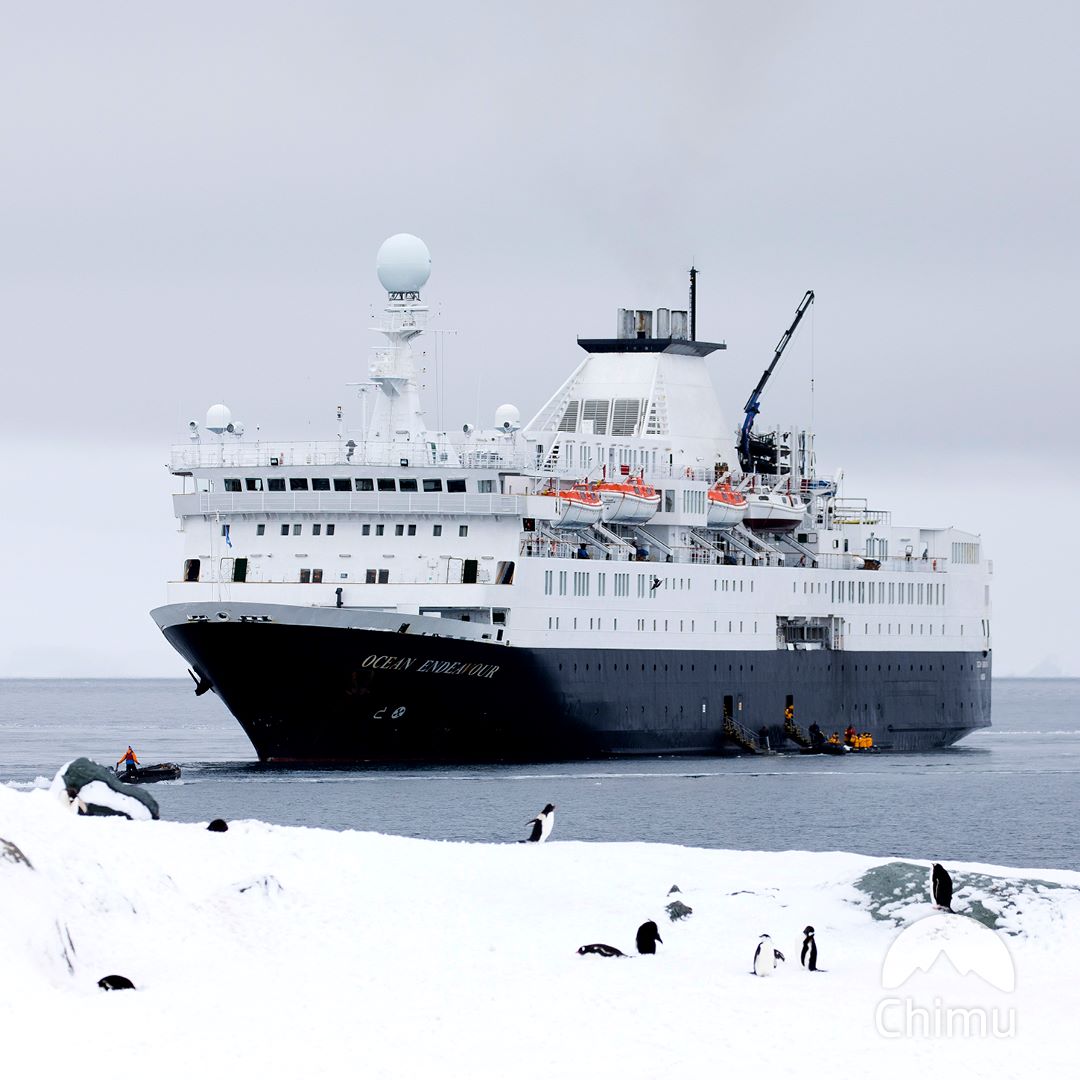
Different strokes for different folks - that's true even when it comes to cruising in Antarctica . Whether your heart beats faster at spotting leopard seals, school's of orca, whales or penguin colonies during Antarctic photography sessions or if you're intrigued by historical routes like the route of Shackleton, there's something for everyone.
- Penguin Safari Epic: This type focuses heavily on wildlife encounters, perfect for animal lovers wanting unforgettable experiences such as adding on South Georgia and the Falklands.
- Historical Exploration: These journeys trace paths charted by early explorers while sharing their stories along these historic routes.
An expedition cruise isn't just about getting from point A to B; it offers pure Antarctic silence surrounds where sea conditions become unpredictable but wonderfully powerful Antarctic autumn begins. Expedition ships typically carry between 50-200 passengers, allowing them closer access into narrower channels amidst sea ice which larger vessels cannot navigate through safely due to potential iceberg collisions.
Your travel style should guide your choice - are you seeking serenity amid stunning glacial vistas or adrenaline-pumping adventures like kayaking amongst floating ice formations? Perhaps camping under starlit skies appeals more?
Antarctica, a land of pure Antarctic silence that surrounds you with its breathtaking beauty and the wonderfully powerful Antarctic autumn begins. It's an ultimate icy adventure towards the south pole where one can experience sea ice like nowhere else on earth. But how does one get there? While many opt for cruises from Ushuaia in Argentina , flying directly into Antarctica is another exciting option especially for those who prefer speed over sailing.
If battling sea conditions isn't your idea of fun or if time is pressing, then why not consider a fly-cruise package ? These expeditions take off from Punta Arenas in Chile crossing Drake Passage by air before landing at King George Island located amidst South Shetland Islands. From here embarkation onto expedition ships typically carry travelers further southwards.
This approach significantly cuts down travel time allowing more days spent exploring mesmerizing landscapes filled with penguin safari epic adventures and a myriad of whale watching photography opportunities.
While opting to visit Antarctica by air might seem appealing initially, remember it has its own set of challenges too. Weather patterns are unpredictable causing potential delays, so flexibility becomes key when choosing this mode of transport.
Besides, weight restrictions could limit what gear you bring along, something to consider if you have loads of video and photography equipment.
If luxury experiences define your voyages, then perhaps an air cruise would suit better. With operators offering flights out of Australia, these tours provide panoramic views over vast snow-covered expanses meeting the horizon where Snow Hill Emperor Penguins' quest territory starts unfolding beneath. Imagine experiencing all this without even setting foot on icy terrain?
While Antarctica's beauty is breathtaking, getting there requires careful planning. You can fly directly or opt for a fly-cruise package from Chile, cutting down travel time. However, unpredictable weather and weight restrictions may pose challenges. For luxury voyages, consider air cruises out of Australia.
Antarctica, the last frontier of true adventure. But what exactly can you do on this icy continent? Let's explore some thrilling activities that await.
If wildlife watching is your thing, then prepare for an epic experience with endless penguin encounters. Get up close to different species of penguins, seals, and various birdlife native to Antarctica.
You can also spot several species of whales during these expeditions. The unique ecosystem here will leave nature enthusiasts spellbound.
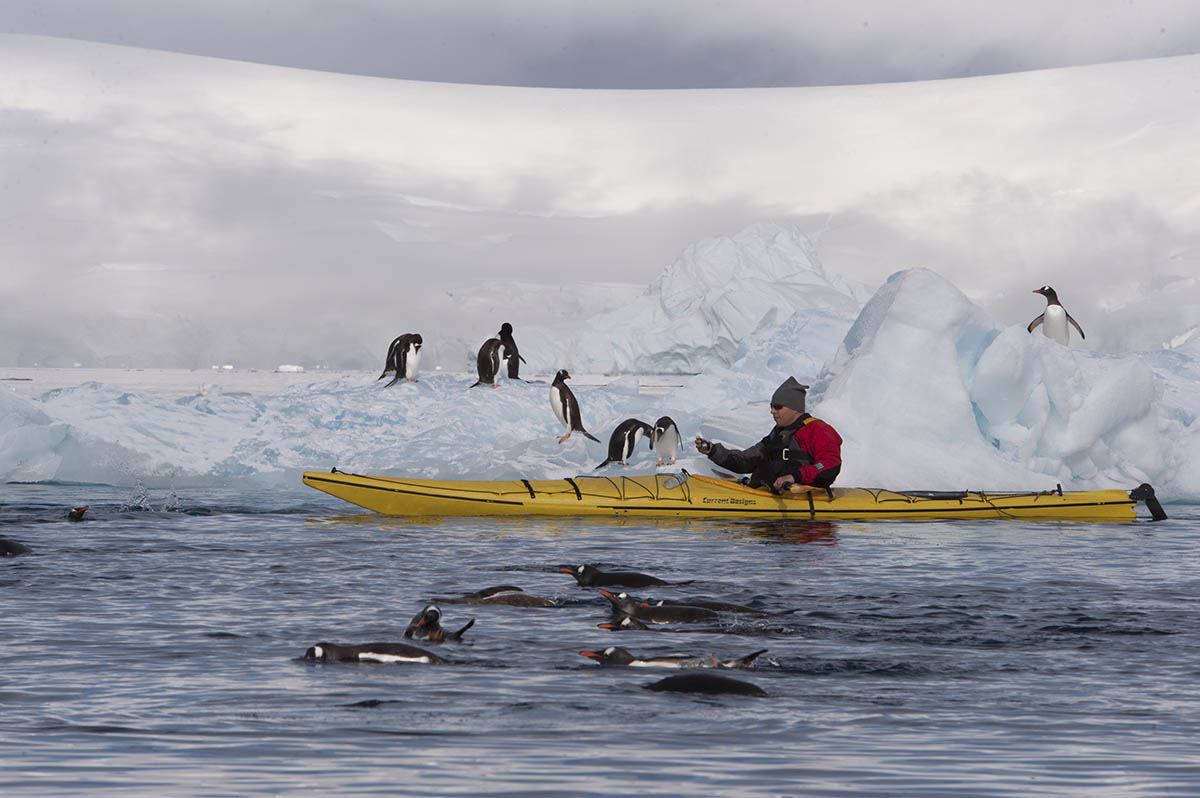
Crank up your adrenaline levels by kayaking through icebergs or camping under southern stars amidst sea ice. These are not just mere adventures but rather transformative experiences that push boundaries while ensuring safety at all times due to changing sea conditions. Voyagers Travel , among others, offer such adventure options polar exploration style.
Camping On Antarctica
Have you ever wondered what it would be like to sleep under the stars in one of the most remote places on Earth? Well, visiting Antarctica and camping there is an experience that will exceed your wildest dreams. It's a journey into pure Antarctic silence surrounds where a wonderfully powerful Antarctic autumn begins.
Expedition ships typically carry all necessary equipment and provisions needed for this unique expedition.
A night spent camping in Antarctica is unlike any other outdoor experience. As darkness falls over the icy landscape, you'll find yourself surrounded by towering glaciers and sparkling ice formations. A blanket of countless stars covers the sky above as penguins and their colonies sleep nearby.
The mats and sleeping bags used during our Antarctica nights on the ice are designed specifically for extreme weather conditions with heavy-duty material to protect against harsh winds and low temperatures. For comfort, we provide insulated sleeping bags rated for sub-zero temperatures along with foam pads to insulate from cold ground beneath.
Ready for an icy adventure? Plan your trip to Antarctica. From Penguin Safaris and wildlife watching, to kayaking among icebergs or camping under southern stars. #TravelAntarctica Click to Tweet
Your Antarctic adventure doesn't stop at the end of each day. In fact, where you lay your head to rest is a crucial part of this unique travel experience.
If luxury accommodation is more your style, then fear not. Even amidst the icy wilderness of Antarctica, there are options that cater to those who prefer their adventures with a side serving of comfort and class.
A standout option for high-end lodgings includes eco-friendly camps offering heated dome tents complete with plush beds and private bathrooms - an oasis amid pure Antarctic silence surrounds you. And let's not forget about food; these places serve gourmet meals that could give any fine dining establishment in Buenos Aires a run for its money.

Sailing into the Antarctic circle or exploring the Wedell sea on expedition ships typically carry all types sea conditions experiences right from wildlife viewing to iceberg sightings. But when it comes time to unwind after a day full of exploration, cruise ship cabins offer cozy retreats ranging from basic bunk rooms up till suites featuring balconies overlooking majestic ice landscapes.
Renowned polar voyages operators like Albatross Expeditions and Aurora Expeditions provide comfortable accommodations catering various travel styles while ensuring personalized service during your ultimate south pole journey due to smaller passenger numbers compared larger cruise lines.
The thrill-seekers among us might be enticed by another type of lodging entirely - camping out under the stars on vast expanses known as 'ice floes'. This truly immersive experience offered by many tour operators lets travelers fully immerse themselves into polar exploration. It's nothing short than waking up surrounded by snow hills possibly seeing curious penguins nearby.
Remember though regardless wherever choose stay visiting Antarctica important always respect pristine environment follow guidelines set forth organizations promoting responsible tourism.
Antarctica offers a range of unique accommodations to enhance your polar adventure. Choose from luxury lodges with gourmet meals, cozy cruise ship cabins that navigate icy landscapes, or the thrilling experience of camping on ice floes under starlit skies.
When you visit Antarctica, it's not just about the destination but also how to make your journey unforgettable. Here are some tips on photography and more.
A picture is worth a thousand words - especially when that photo captures the moment where pure Antarctic silence surrounds you or records an epic adventure sailing by Shackleton's infamous Elephant island. You might consider investing in top-notch camera gear before embarking, in many cases an iphone will do. Several photos included here have been taken with a smart phone.
If you're looking to embark on the ultimate adventure to the southern latitudes amongst penguins and schools of beluga, minke and even blue whales, there's no better place than Antarctica. The breathtaking landscapes and diverse wildlife make it a paradise for photography enthusiasts.
The journey usually begins from Ushuaia , where you will board one of the ice strengthened expedition ships. These ships typically carry travelers across the Beagle channel, onwards through the Drake passage and take base at the Antarctic peninsula. This is an experience in itself as pure Antarctic silence surrounds you while traversing through icebergs and witnessing sea conditions unlike anywhere else on earth.
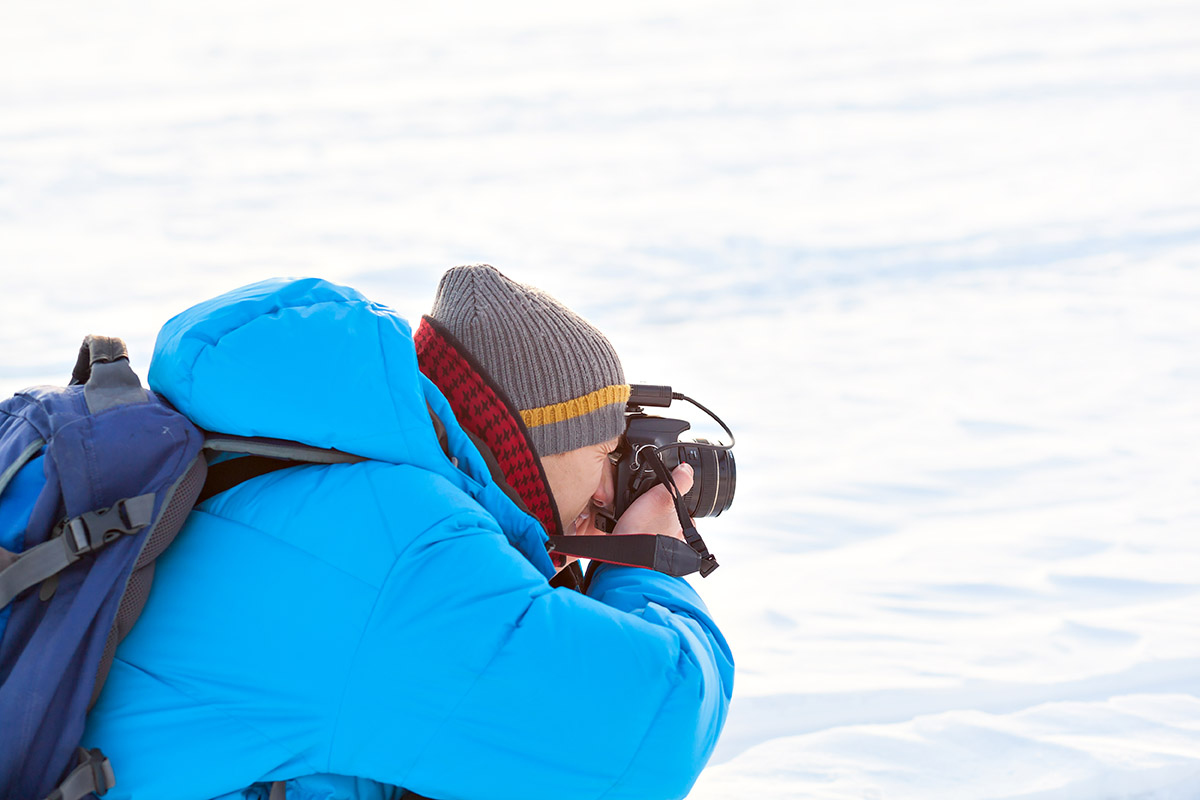
The workshops are led by experts renowned wildlife photographers, who have extensive knowledge about snow and ice, finding the proper light, penguin sightings, taking pictures from zodiacs of whales and leopard seals and in general uplifting your game in photography among other things. These trips usually include the use of forward-facing zodiacs that provide comfort while ensuring that nothing obstructs your view when taking pictures or simply soaking in the beauty around.
In terms of gear required for this trip, remember that weather conditions can be extreme, so pack accordingly! Waterproof jackets and trousers are essential, along with warm clothing layers underneath, because the wonderfully powerful Antarctic autumn begins during these months, which can get quite chilly!
Beyond enjoying the wonderfully powerful Antarctic autumn begins scenery around you, participating actively in various travel style activities available enhances the overall experience dramatically. Imagine taking the polar plunge while your fellow ship mates cheer you on, a dip into the icy waters will for sure awaken your senses.
Journaling Your Journey
The act of journaling offers another intimate way to remember visiting Antarctica; whether jotting down daily observations regarding changing sea conditions over time or personal reflections stirred up due to its exciting passage through the Drake to the unique location far away from regular life pressures back home.
To make your Antarctic journey truly unforgettable, invest in quality photography gear, collect unique souvenirs during the voyage, participate actively in adventure activities like kayaking or camping amidst glaciers and penguins. Additionally, journaling can offer a personal touch to your polar exploration experience.
Travelers typically reach Antarctica via cruise ships from Ushuaia, Argentina. Some also opt for direct flights.
Absolutely. However, you must book a trip with a tour operator that complies with the Antarctic Treaty System's regulations and obtain necessary permits. Our reservations team at Voyagers Travel can help you make the right choice.
To protect its pristine environment, follow guidelines like not disturbing wildlife or leaving waste behind during your visit.

Embarking on a journey to the South Pole is indeed an adventure of a lifetime.
From understanding Antarctica's unique geography and wildlife, planning your trip meticulously, choosing between cruising or flying - every step matters.
You've learned about the exciting activities that await you in this icy wilderness. Sightseeing tours, wildlife watching, kayaking, or even camping on ice floes!
The accommodation options are diverse too; luxury lodges for comfort lovers or camping sites for true adventurers.
Making your trip memorable with photography tips and other ideas has also been covered.
All these elements come together to answer one intriguing question: How to Travel to Antarctica?
It's time to make your Antarctic dreams come true! With Voyagers Travel Company by your side, we ensure a tailor-made travel program focusing on cruises in Antarctica along with other thrilling destinations like the Galapagos Islands and the Amazon River basin . Ready for an unforgettable journey? Visit us at Voyagers Travel , let's make it happen!
Check our Antarctica Cruises:
- Antarctic Explorer: Discovering the 7th Continent plus Cape Horn & Diego Ramirez
- Christmas In Antarctica
- South Georgia and Antarctic Peninsula: Penguin Safari
- Antarctic Express: Crossing the Circle

“Refreshingly Mad”: 10 Facts About the First Pole-to-Pole Journey Around the World
I n August 1982, a ship rolled into Greenwich, London, bearing explorers who hadn’t been home in three years. They had been at the North Pole, the South Pole, and many places in between—covering some 52,000 miles overall and earning them the distinction of being the first people ever to circumnavigate Earth’s surface from pole to pole.
Find out how the Transglobe Expedition came to be, what it accomplished, and why then-Prince Charles had cause to call it “refreshingly mad.”
1. The Transglobe Expedition was Ginnie Fiennes’s idea.
In February 1972 , Lady Virginia “Ginnie” Fiennes proposed a seemingly harebrained scheme to her husband of 18 months, Sir Ranulph “Ran” Fiennes: a journey around the world—not latitudinally, as was the custom, but longitudinally, crossing through the Arctic and the Antarctic.
The two, both still in their twenties , had no experience as polar explorers. But they were already pretty accomplished adventurers, with a joint résumé that included leading the first hovercraft trip up the Nile and the first overwater traverse of British Columbia. Once Ran warmed to his wife’s idea, they published a request for volunteers that read, in part, “No polar experience necessary. Hard work, great danger, and no pay. No guarantee of success or glory.”
Ginnie and Ran passed most of the ’70s assembling a team, securing funding, and becoming experts in their chosen roles. Ginnie would be base leader, which put her in charge of all communications to and from the explorers, the sponsors, and everyone else involved in the venture; she spent years mastering radio operations. Ran, as expedition leader, took prospective members of the land team on training missions in the UK’s mountainous regions and the Arctic .
2. The journey spanned three years and five continents.
On September 2, 1979, the expedition set sail from Greenwich, London, in a 213-foot-long ship called the Benjamin Bowring (nicknamed the Benji Bee ). The land team stopped in Paris and then in Barcelona, where the Benji Bee picked them up and deposited them in Algeria . In late fall 1979 , after a trek across West Africa, they were taken by the Benji Bee for a brief stopover in Cape Town before charting a course to Antarctica.
They arrived on the coast in early 1980 and journeyed inland to overwinter near Ryvingen Peak . In late October , Ran and two companions—Charles Burton and Oliver Shepard—set off for the South Pole on snowmobiles while Ginnie stayed at the base to run communications. The trio reached the Pole on December 15 and headed east across the continent, reaching New Zealand’s Scott Base about a month later. The next several legs of the journey were mostly via the Benji Bee : Auckland to Sydney to Los Angeles to Vancouver to Alaska’s Yukon Delta by June 1981.
Ran and Burton started up the Yukon River in inflatable boats and soon switched to an 18-foot-long whaleboat (procured, as always, by Ginnie), which they guided through the Northwest Passage. They then swapped that for snowmobiles to take them partway to the North Pole; eventually, they abandoned the machines to hike on foot, dragging their sledges of supplies behind them. The pair reached the North Pole on April 10, 1982.
The penultimate segment of the expedition was mostly a waiting game for Ran and Burton, who spent more than three months drifting on an ice floe as the Benji Bee slowly battled its way to them from the Arctic island of Spitsbergen. The two parties reunited early on August 4 ; and on August 29 , the Benji Bee sailed into Greenwich—completing the Transglobe Expedition and making history in more ways than one.
3. It combined some of polar exploration’s biggest feats.
The Transglobe Expedition earned the Guinness World Record for the first surface circumnavigation via both geographical poles. In other words, its participants had completed a trip around the world, hitting the North and South Poles, by land and sea only; they didn’t fly at all (though planes were hugely necessary in delivering supplies to them along the way).
It was also a grand amalgamation of the greatest landmark moments in the history of polar exploration. They reached the South Pole, which Norwegian explorer Roald Amundsen had first done in 1911 (beating Robert Falcon Scott of England by mere weeks). They journeyed across Antarctica, which Ernest Shackleton had famously failed to do in 1914 and Vivian Fuchs had accomplished in 1958. They sailed the Northwest Passage, which Amundsen had first done in 1906 (and which many people, including everyone on the Franklin expedition , had died trying to do before him). And they hit the North Pole —such a tantalizing moving target that we’re still not really sure which early 20th-century explorer got there first.
And even when the Transglobe adventurers weren’t covering new territory, they were often still doing it in groundbreaking ways—or just faster. They were the first people to traverse the Northwest Passage from west to east in an open boat, for example; and they crossed Antarctica in 67 days , beating Fuchs’s record by weeks.
4. Then-Prince Charles was the expedition’s royal patron.
The explorers had a powerful ally in then-Prince Charles , who served as the expedition’s royal patron. “It is an extraordinary adventure, and, in my opinion, gloriously and refreshingly mad,” Charles said before it began. In addition to seeing them off at Greenwich, Charles also met them in Sydney and later hopped aboard the Benji Bee on the River Thames to sail into Greenwich with the explorers at the very end of the expedition.
They also had at least 1000 sponsors who donated everything the participants required, from clothing to the Benji Bee itself. Because the Fienneses had no budget for their adventure, they had a strict rule against accepting anything that wasn’t free. That included labor: Nobody involved in the expedition got paid for their work. Still, the explorers did rack up a debt of £106,000—about $135,000, which amounts to roughly $439,000 today when adjusted for inflation—during the journey. They partially repaid it with the advance on Ran’s memoir, To the Ends of the Earth , as well as by “selling wall charts, T-shirts, pamphlets and left-over equipment,” he wrote .
5. The Transglobe explorers brought cricket to the South Pole …
One of the expedition’s lesser firsts involved cricket. When Ran, Burton, and Shepard arrived at the Amundsen-Scott South Pole Station in December 1981, Ran wrote that they were greeted by “friendly and hospitable” American scientists who shared meals with the newcomers “in exchange for washing up dishes and cleaning the canteen.” The two groups also faced off in the first cricket match ever played at the South Pole. The Brits won.
It wasn’t the last time the South Pole was the site of a cricket match. On January 17, 2012, another group of British visitors played cricket against an international team of researchers at the same base to mark the 100th anniversary of Scott’s arrival at the South Pole. The Brits won that match, too.
6. … And came face to face with polar bears near the North Pole.
During the months they spent camped out on an Arctic ice floe, Ran and Burton weathered a number of close calls with polar bears , which they did their best to frighten off by banging pots together and sometimes firing their guns. In one haunting face-off with a bear who refused to be cowed by the noise, Ran actually did shoot the animal in its foreleg. It stopped in its tracks and shuffled off into the water, with “no sign of a limp” despite all the blood, Ran wrote in To the Ends of the Earth .
The frequency of the polar bears’ visits called for constant vigilance that sometimes bordered on paranoia. Once, Ran recalled , “I heard a rhythmic scuffling that I was certain must be a bear. It turned out to be the sound of my heartbeat against the canvas earflaps of my nightcap!”
7. A fire at their Arctic basecamp threatened the mission.
Polar bears were far from the only threat to the success of the expedition. As Ran and Burton were trudging toward the North Pole, a massive fire—whose cause remains a mystery—broke out in the garage back at Alert, their basecamp in Nunavut, Canada. Ginnie reached it first and watched with a few other Transglobe volunteers as eight gasoline drums inside the garage exploded . Gone were all the supplies, including snowmobiles, that a plane was meant to ferry to Ran and Burton during their trek north.
Ginnie transmitted the news to Ran and Burton and encouraged them to press on, which they did, while she scrambled to procure replacement supplies for them, which she did. The disaster wasn’t without a silver lining, though: Now that the expedition seemed like it could fail, the whole world suddenly started paying attention to it. As Ran wrote , “after the night of the fire nearly every action that we took, and one or two that we didn’t, became news from London to Sydney, from Cape Town to Vancouver.”
8. The expedition earned Ginnie the first Polar Medal ever given to a woman.
In 1987, Queen Elizabeth II awarded the UK’s prestigious Polar Medal to Ran, Ginnie, and Burton—making Ginnie the first woman to ever receive it. Two years earlier, she’d been the first woman ever granted membership to the Antarctic Club, an exclusive UK-based dining club [ PDF ].
9. The expedition’s canine sidekick set a world record.
Ginnie’s Jack Russell terrier , Bothie, who kept her company through the long, cold months running communications in the Arctic and Antarctic, earned an honor of his own: an entry in 1984’s The Guinness Book of Pet Records as “the only dog to have visited both the North and South Poles.” (He reached both spots by plane.) The Fienneses also co-authored a book all about his adventures entitled Bothie the Polar Dog .
At the North Pole, Bothie wasted no time in peeing at the base of the flagpole that bore the Union Jack, “which we were not entirely happy about,” Ran wrote in the book. “Since there were no other vertical objects in the vicinity he was forgiven.”
10. It gets a shout-out in Netflix’s The Fall of the House of Usher .
In episode 6 of Mike Flanagan’s horror miniseries The Fall of the House of Usher , viewers learn a little about the backstory of Arthur Gordon Pym , the Usher family’s steely lawyer (played by Mark Hamill). According to patriarch Roderick Usher (Bruce Greenwood), Pym was a member of the Transglobe Expedition who reached the North Pole, where he allegedly discovered that the Earth was hollow—and harboring a hidden “realm of beings who lived beneath us out of time and out of space.” Ran Fiennes has never mentioned that.
This article was originally published on mentalfloss.com as “Refreshingly Mad”: 10 Facts About the First Pole-to-Pole Journey Around the World .
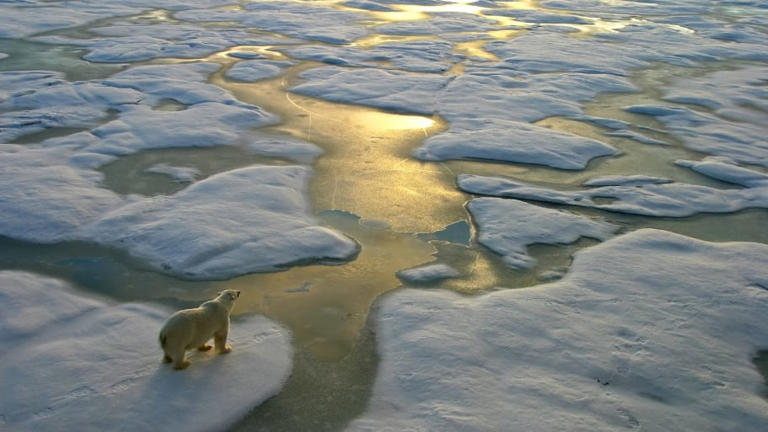
Scientists Are Searching the South Pole to See if Quantum Gravity Actually Exists
The ice-bound frontier is suddenly ground zero for testing the fabric of our universe.
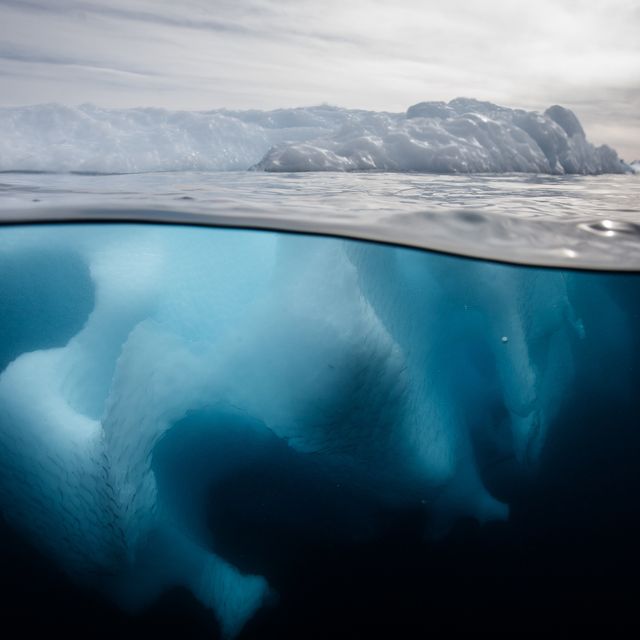
Gear-obsessed editors choose every product we review. We may earn commission if you buy from a link. Why Trust Us?
- If neutrinos were Diet Coke, we’d say they have “0 calories” of mass—nearly none.
- Physicists studied atmospheric neutrinos as a way to start looking for quantum gravity.
- The neutrinos showed no evidence of quantum gravity, but that’s just one step down the road.
In new research, researchers from the University of Copenhagen’s Niels Bohr Institute (NBI)—alongside 58 other member universities— revealed the secrets of 300,000 neutrinos they studied at the South Pole. Their paper ( published in Nature Physics ) is one step down a road that they hope will lead to quantum gravity . This hypothesized force, if it’s ever demonstrated in real life measurements, could be the physics dongle that adapts general relativity to quantum mechanics at last.
So, what’s Antarctica got to do with it?
Well, Antarctica is the location of the IceCube Neutrino Observatory . The facility, established by the University of Wisconsin, is a cube of ice that’s one kilometer on each edge. Scientists can observe neutrinos on the surface (IceTop) and inside the cube (DeepCore).
The neutrinos found at IceCube are from Earth’s atmosphere , which are different from the neutrinos found in outer space. “Looking at neutrinos originating from the Earth’s atmosphere has the practical advantage that they are by far more common than their siblings from outer space,” lead researcher Tom Stuttard said in a statement . Neutrinos are so tiny that scientists first believed they were massless, and they can pass through matter and leave other particles behind like a filter.
Here on Earth, they’re spun off as matter from space strikes gasses in the atmosphere, or even as particles pass through Earth itself. Then, they accumulate. “Looking at neutrinos originating from the Earth’s atmosphere has the practical advantage that they are by far more common than their siblings from outer space ,” Studdard explained. And, he said, we have so little data measuring neutrinos this way that any experimental data would have value in the field.
The reason neutrinos are so valuable in the search for cross-platform physics is that they remain untouched by almost everything in the universe . A neutrino on the other end of the Milky Way will be the same when it arrives here on Earth as it was when it left its source. That’s almost unbelievable considering what the galaxy contains—from the intersecting gravities of planets and stars all the way down to the fundamental nuclear force that confines other particles.
Their implacability means that anything that affects a neutrino has a much stronger likelihood of being quantum gravity than anything we can currently understand and measure. In studying Earth’s own atmospheric neutrinos, the scientists used a key aspect called coherence to check if neutrinos were remaining unperturbed. They didn’t find any evidence of decoherence in their pool of neutrinos, meaning no perturbations took place.
“While we did have hopes of seeing changes related to quantum gravity, the fact that we didn’t see them does not exclude at all that they are real,” Studdard said in the statement. “For years, many physicists doubted whether experiments could ever hope to test quantum gravity. Our analysis shows that it is indeed possible.”
NBI founder Niels Bohr laid foundational theories about energy in the atom and what became quantum mechanics. Indeed, just about 100 years after Bohr famously debated Albert Einstein himself, he’d probably be delighted by his descendents’ progress in unifying the universe.

Caroline Delbert is a writer, avid reader, and contributing editor at Pop Mech. She's also an enthusiast of just about everything. Her favorite topics include nuclear energy, cosmology, math of everyday things, and the philosophy of it all.

.css-cuqpxl:before{padding-right:0.3125rem;content:'//';display:inline;} Science .css-xtujxj:before{padding-left:0.3125rem;content:'//';display:inline;}

A Prime Numbers Study Is Stirring Up Controversy

Our Existence May Hinge on Gravitational Waves
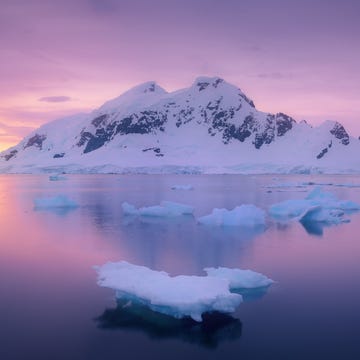
Cloud Structure Key to World’s Cleanest Air

The Truth About Walt Disney’s Frozen Head

Climate Change Can Wreck a Tree’s Circadian Rhythm

Company Pauses Gene-Editing Due to Side Effects
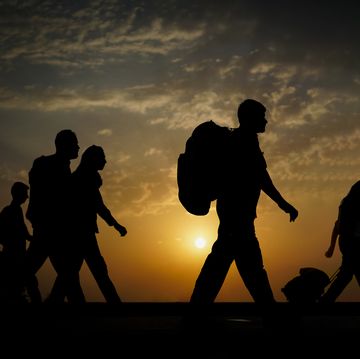
The Origin of America's Earliest Language

A Discovery Among the Mummies Reveals a Sick Truth

When Is the Next Solar Eclipse?

Immortality Is Possible if We Beat One Physics Law

Why the Northeast Earthquake Was So Shocking

IMAGES
VIDEO
COMMENTS
You won't find clocks, let alone people, in the vast majority of Antarctica, so the usefulness of time zones is somewhat limited. All the more so because most of this polar realm falls south of the Antarctic Circle, with seasons swinging between roughly 24 hours of daylight in the austral summer and 24 hours of darkness in the austral winter.
The interior is a vast, untouched playground accessed by less than 500 people a year. Fly or ski to the South Pole, climb Mount Vinson, camp amongst emperor penguins, hike over waves of blue ice, or just take time to watch the light change on the sastrugi, knowing you're in one of the remotest places on the planet.
Amundsen-Scott South Pole Station is the southernmost residence on Earth with a population of approximately 150 people in the austral summer (now) and about 50 people in the winter. The South Pole Station, built in 2008, is just feet from the Geographic South Pole. The high elevation, dry climate, and clean air make the South Pole an ideal ...
That's possible because this US base is located at the south geographic pole where all the meridians of longitude converge. So you can cover all 24 time zones as fast as you can run in a circle. This is just one form of temporal dislocation that takes place in polar regions. In October 1884, an international conference held in Washington DC ...
Do you want to know what time it is in the most remote and coldest place on Earth? Visit timeanddate.com and check the current local time in South Pole, Antarctica, as well as its weather, sunrise, sunset, moon phases and more. You can also compare the time in South Pole with other locations in Antarctica and around the world using the time zone map and the world clock.
Browse the best South Pole tours with 84 reviews visiting places like Antarctic Peninsula and Ushuaia. ... This caused a frantic rush to change flights and other travel arrangements for many participants aggravated by the limited internet access in Antarctica which could be avoidable or mitigated if the participants were advised of probable ...
Amundsen-Scott South Pole Station Compared to the North Pole, the South Pole is relatively easy to travel to and study. The North Pole is in the middle of the Arctic Ocean, while the South Pole is on a stable piece of land. ... No Time at the Poles Time is calculated using longitude. For instance, when the sun seems directly overhead, the ...
The time at the South Pole is taken as being the most convenient for the people on the station there, which is New Zealand time as that is the main supply base, so the time at the South Pole is UTC +12. ... All manner of transport is used to travel around the geographic South Pole so meaning that in passing through all time zones and lines of ...
The Geographic South Pole is marked by the stake on the right NASA image showing Antarctica and the South Pole in 2005. The South Pole, also known as the Geographic South Pole or Terrestrial South Pole, is the southernmost point on Earth and lies antipodally on the opposite side of Earth from the North Pole, at a distance of 20,004 km (12,430 miles) in all directions.
South Pole, the southern end of the Earth's axis, lying in Antarctica, about 300 miles (480 km) south of the Ross Ice Shelf.This geographic South Pole does not coincide with the magnetic South Pole, from which magnetic compasses point and which lies on the Adélie Coast (at about 66°00′ S, 139°06′ E; the magnetic pole moves about 8 miles [13 km] to the northwest each year).
The Earth's rotation means that time zones are determined by the lines of longitude that connect the North and South Poles, and divide the globe into different time zones. A country or region may have multiple time zones. For example, the United States is spread across six time zones. However, since all lines of longitude converge at the ...
Less Complex at the South Pole. The way scientists establish time at the poles varies according to which end of the Earth they are studying, ... travel, and trade that led to the International Meridian Conference of 1884 in Washington D.C., which established many of the time zones that are in use today. Why Do We Have Time Zones. Time Zone Library.
Time Travel: the race for the South Pole. n December 1911, exactly 111 years ago, a team of Norwegian explorers led by Roald Amundsen reached the South Pole, making them the first known people to set foot on the Earth's southernmost point. While the Amundsen voyage was a success, the story of the other explorers in the race for the South Pole ...
Robert Schwarz has wintered at the South Pole a record 15 times. Pictured here with his winter breathing mask. Credit: Samuel Harrison. Some feel dizzy, even sick, right away because of the elevation and because of how incredibly dry the air is. The Antarctic desert, where the Pole is located, is the largest, driest, and windiest desert on Earth.
Our location at 79 45S offers the shortest flight time to the South Pole (4-5 ½ hrs) and makes a true day trip possible, with no intermediate camp on the return journey. ... Below are some frequently asked South Pole Travel questions with answers from ALE's Travel Specialists, who have years of experience helping people travel to Antarctica.
Reach the South Pole, joining a small group of people who have travelled this far south; Explore the pole for 3-4 hours at the South Pole, the perfect length of time to enjoy the experience given the cold/altitude; Imagine how it felt to head out across the frozen continent over 100 years ago; Celebratory dinner after the visit
The Geographic South Pole is the southernmost point on Earth, located at 90° South. Every direction from this point is north. This pole marker is located to the side of the station and is adjusted by approximately 10 meters (33 feet) every year on January 1st to compensate for the shifting polar ice sheet that covers Antarctica.
But the easiest way to get to Antarctica is simple. All you need to do is reach Buenos Aires, Argentina or Punta Arenas, Chile. Both are cosmopolitan cities with international airports and regular service to the rest of the world. The majority of Antarctic voyages depart from Ushuaia, Argentina, a three-and-a-half-hour direct flight from Buenos ...
Watch this video to see what it's like to spend 7 Days in Antarctica on my Journey to the South Pole and to travel in Antarctica!In this Antarctica Travel Vl...
As far as I know, it applys always, but the faster you are, the slower time gets. by driving in a car, your speed is so slow, the effects are minimalistic, but scientists have already proven the effect, by having 2 very percise clocks, one in a plane and one on the ground.
South Pole is the southernmost point on Earth. Let Polar Dream Travel help you make this once a life time trip reality. Call us today to book your dream South Pole expedition trips!
This guide will show you exactly how to travel to Antarctica, making what seems impossible entirely possible! Antarctica, South Georgia & Falkland Islands. An Antarctic expedition cruise explores diverse wildlife, with zodiac landings, Antarctic exploration and charming English architecture. From $19,825.00. Best of Antarctica.
Step 1. Honestly assess your physical capabilities. Travel to the South Pole is not for those seeking luxury, nor for those who have serious health conditions. In the winter, temperatures can ...
I n August 1982, a ship rolled into Greenwich, London, bearing explorers who hadn't been home in three years. They had been at the North Pole, the South Pole, and many places in between ...
In new research, researchers from the University of Copenhagen's Niels Bohr Institute (NBI)—alongside 58 other member universities— revealed the secrets of 300,000 neutrinos they studied at ...